Nice video of the flypast, as seen from the ground…
Category: Uncategorised
D-Day 80 Part 5 – The Return Home
In the morning, it was up not too early, breakfast and a taxi to Caen-Carpiquet airport.
The early risers had already gone, some to fly the beaches and some heading off home. The only aircraft left were the three Cubs and the Fairchild from the UK, and the L4 and L5 of Iza and Arnaud. As the organisers they had a very justified and well-deserved lie-in!
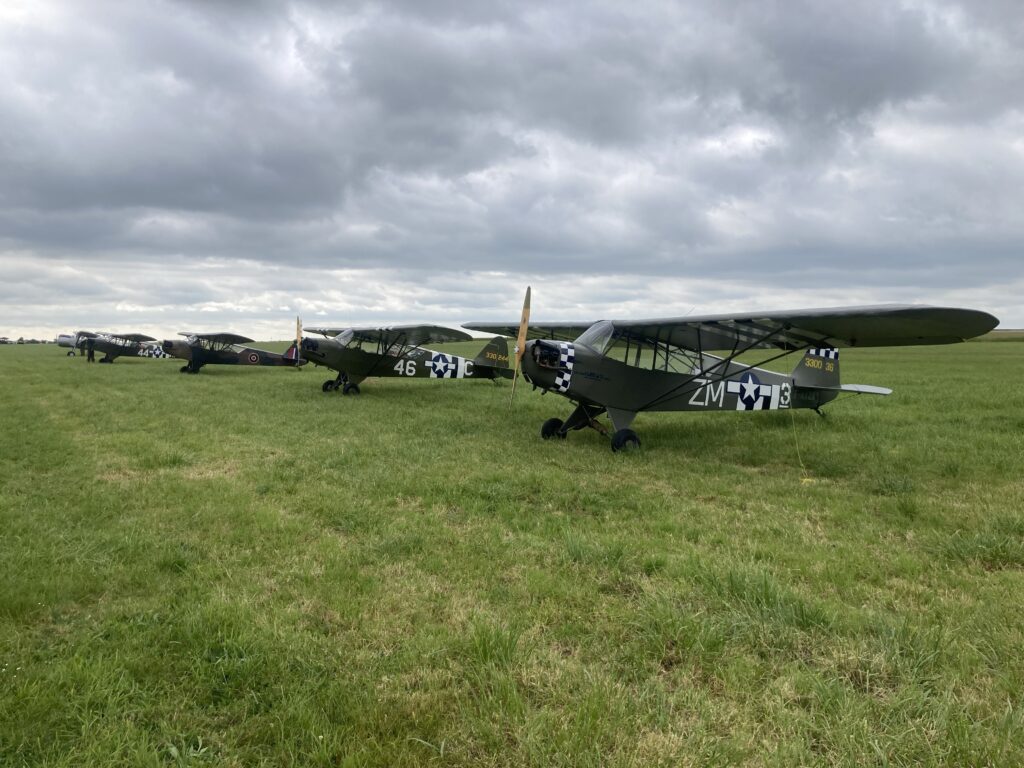
Preflight complete, I wandered down the line to say my goodbyes and then set off for Le Touquet. The other Brits were routing via Calais, so I was on my own again. Slightly strange feeling to be flying without anybody else in close proximity!
I crossed the Seine at Pont de Brotonne. I’d like to say it was a carefully chosen waypoint due to being a “distinctive feature with large vertical extent”, but I can’t. Like most people these days I was just following SkyDemon and kind of stumbled across it…
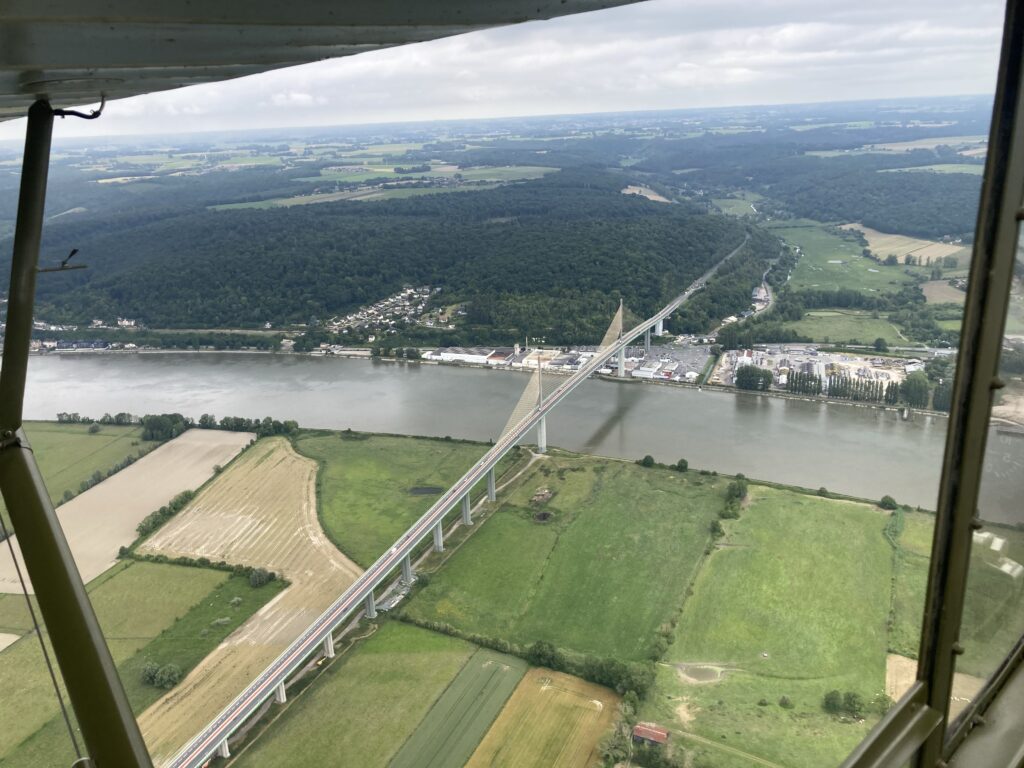
Le Touquet was quick and painless like last time…
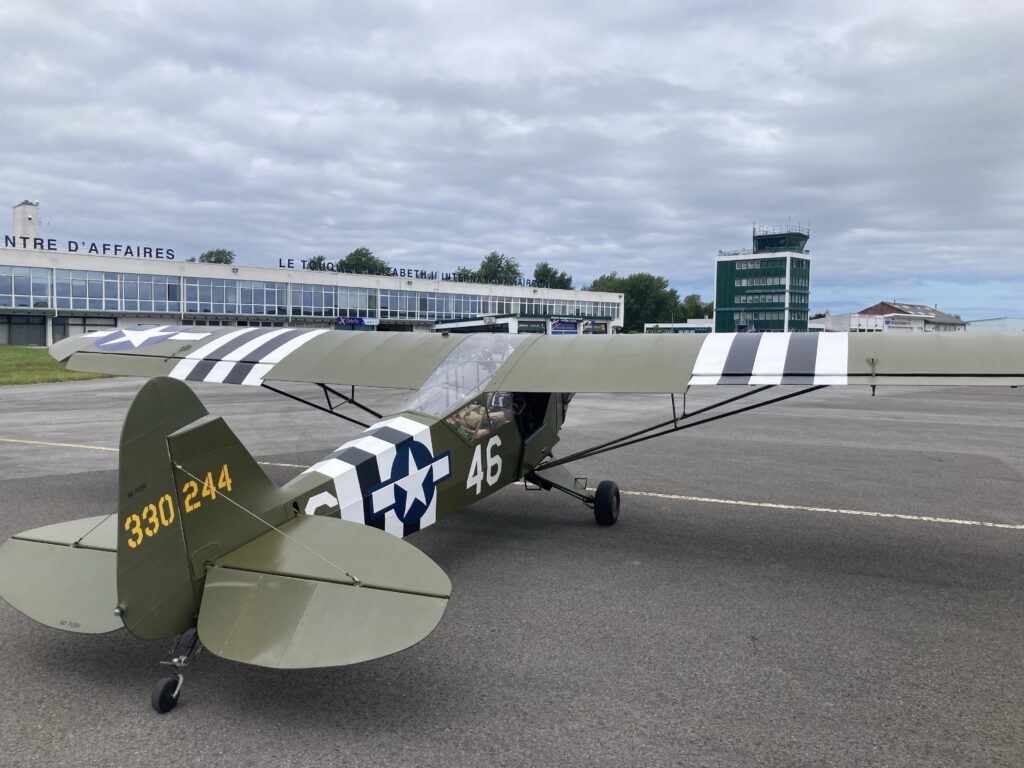
…and I was soon on the way to Rochester, an exact retracing of the outbound leg. One of these days we’ll spend longer than 40 minutes in Le Touquet, but it was time to get home. Racing the weather again, which you wouldn’t really believe, as the weather was glorious approaching Cap Gris Nez:
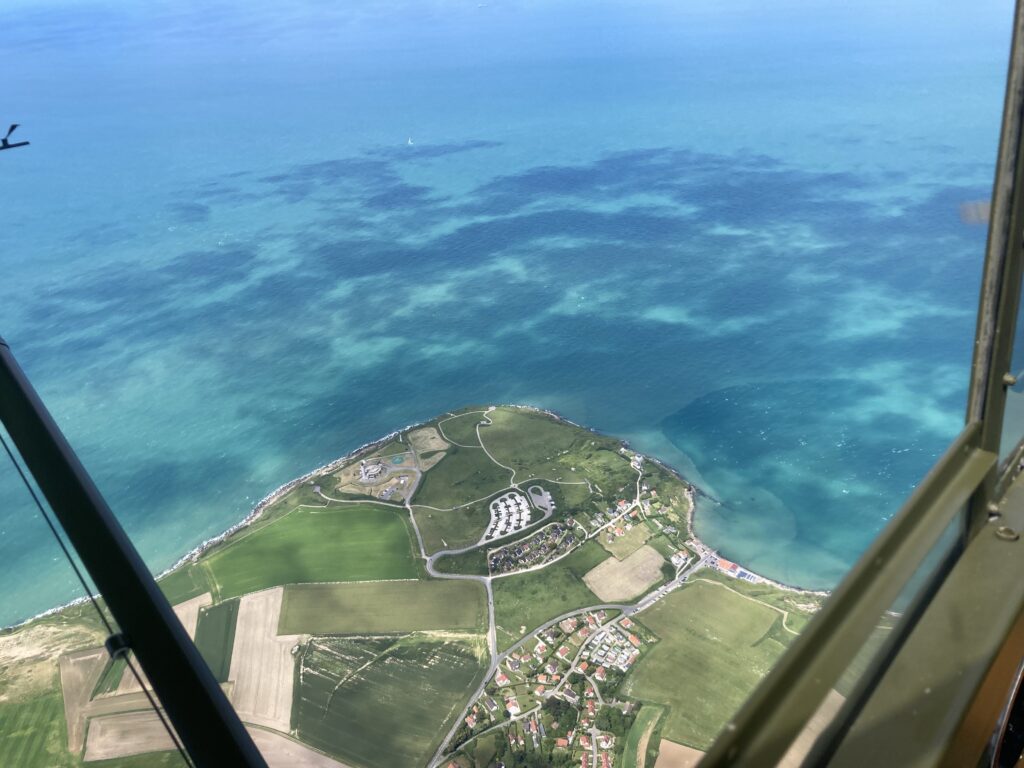
Mid-channel with the White Cliffs of Dover clearly visible ahead. This time I didn’t make the mistake of thinking they were low cloud!
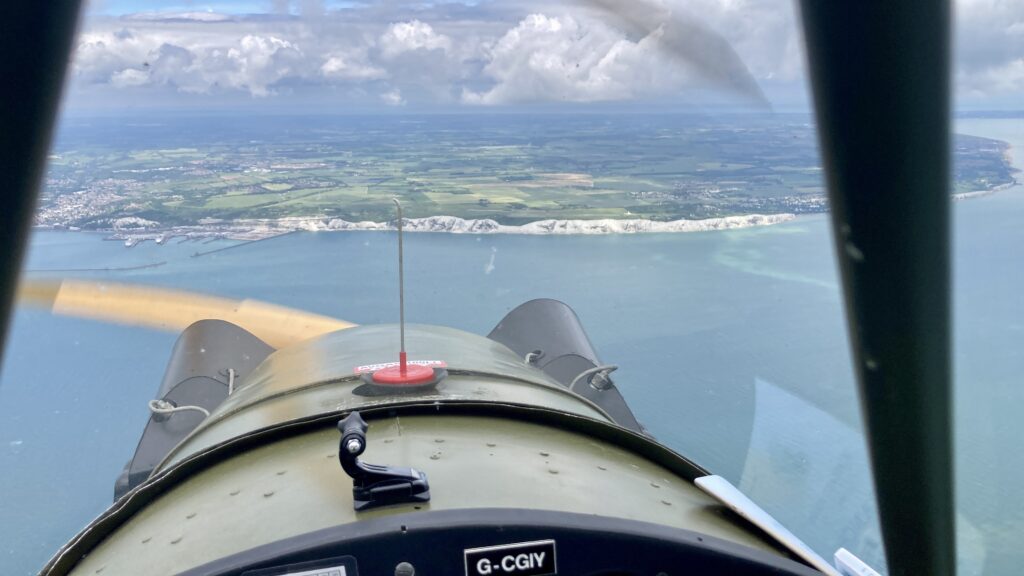
Dover Harbour:
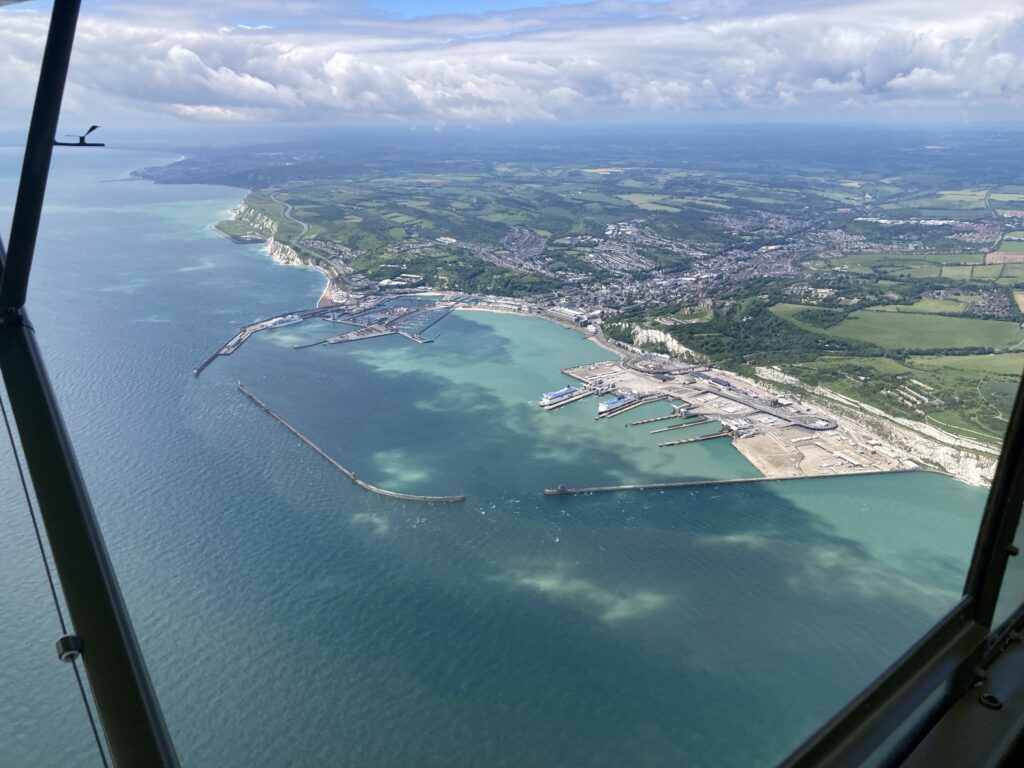
And finally in to land at Rochester. There was plenty of daylight left…the aircraft could have gone further but the pilot was nackered. I almost clipped a runway light on the way in, and this was where the hotel room was, so I decided a rest was needed.
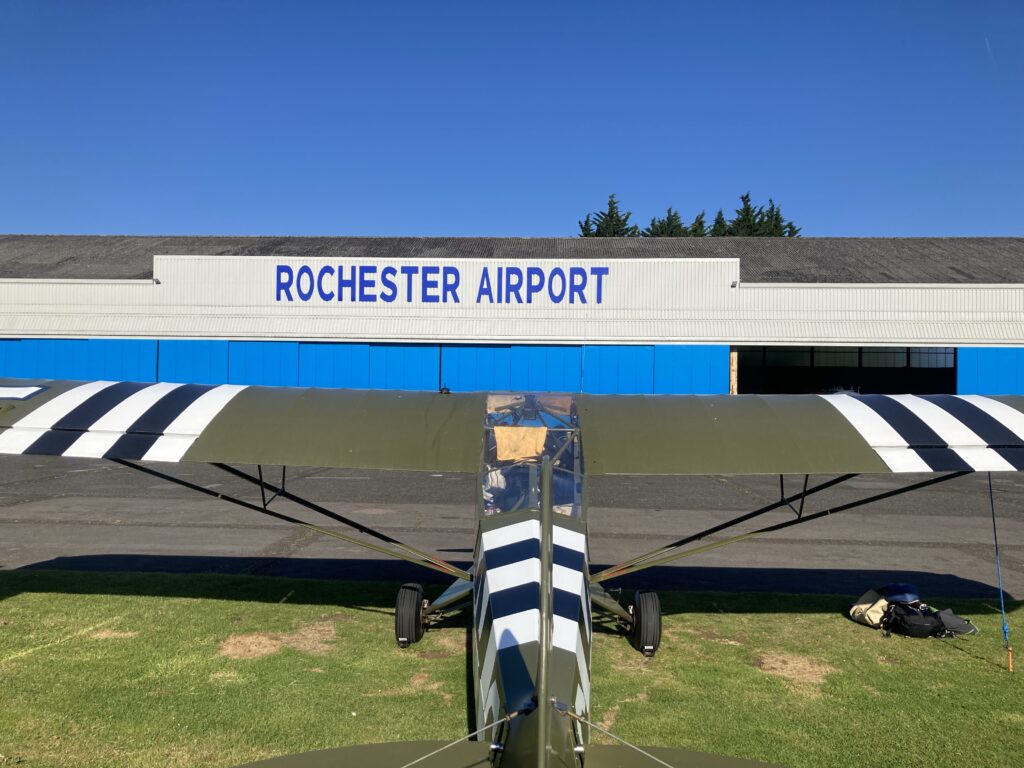
Before I hit the hotel, guess who turned up? Yes, two gents from Border Force spent 10 seconds checking my passport and 10 minutes chatting about Cubs, D-Day and the channel crossing. Of course they wanted a photo by the aircraft…they had seen the inbound GAR and wondered what an L4 was…the fact that it had no registration on the side was even more intriguing to them!
Meanwhile the Dutch lads were already home to a victorious welcome:
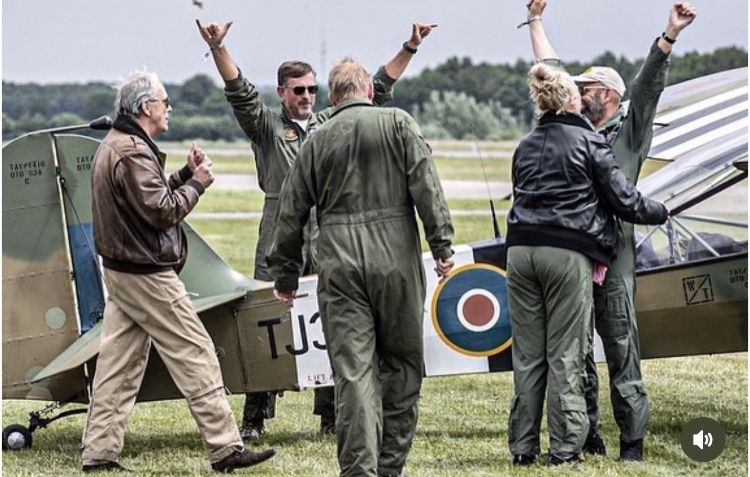
After the stroll to the hotel ( they gave me room 216 again – I should have left my posters up ), a quick bar meal and a 50 minute call home. Then it was time for a big sleep.
—————————-
Final day! Four legs. The plan was Rochester to Fenland to Sherburn to Eshott to Perth. Breighton had a vintage aircraft fly-in that day, and while the Cub would have fitted in nicely, there was no time. Sherburn was used instead. As it turned out, a good choice. Great airfield – and FREE landings for Perth based aircraft due to the reciprocal agreement. Free stuff is good.
On the way out to France there was a 20 kt tailwind at times. Now on the return trip it was a 20 kt headwind. A free headwind is NOT good in an already slow aircraft.
I got in early, packed up and set off just as the airfield opened…
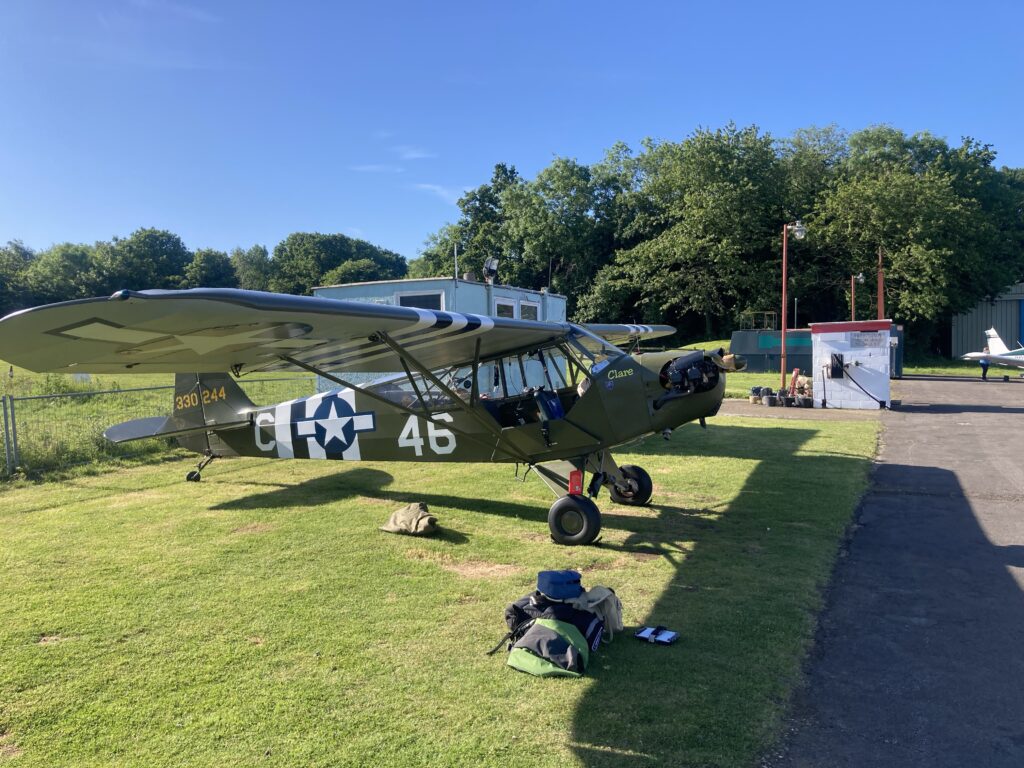
The plan was to fly, land, refuel, pee, pay and fly again. Four times. No time for anything more than a quick snap. Fenland:
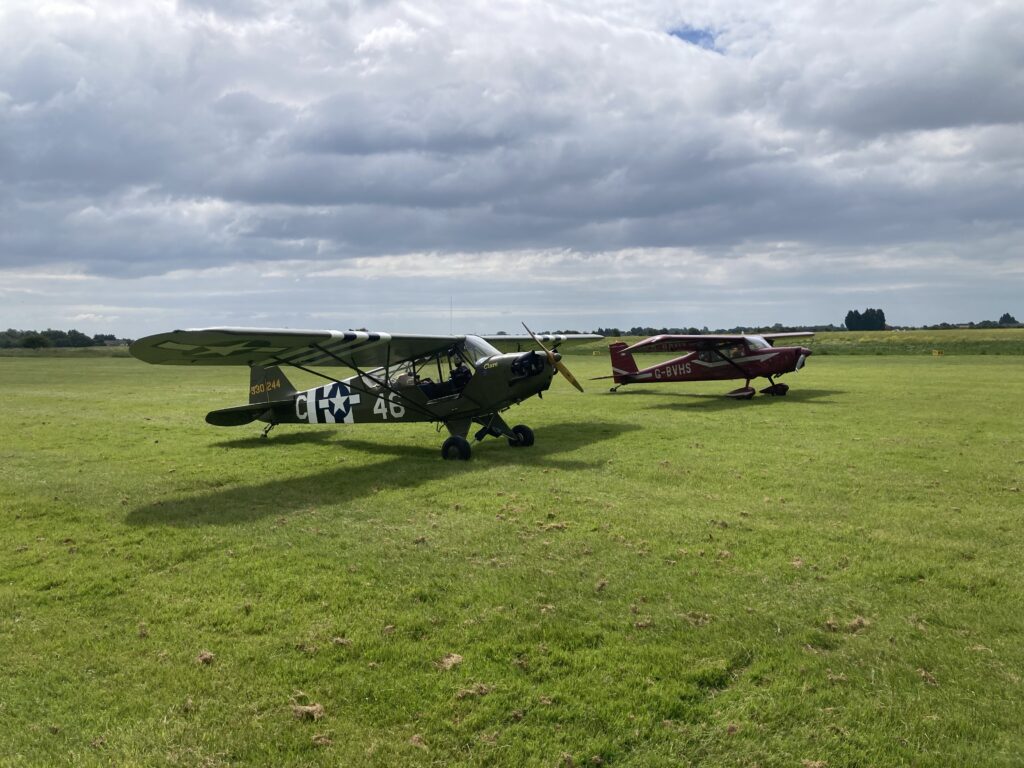
Gordon from the tower in Perth captured this screenshot as we were passing Gringley on the Hill:
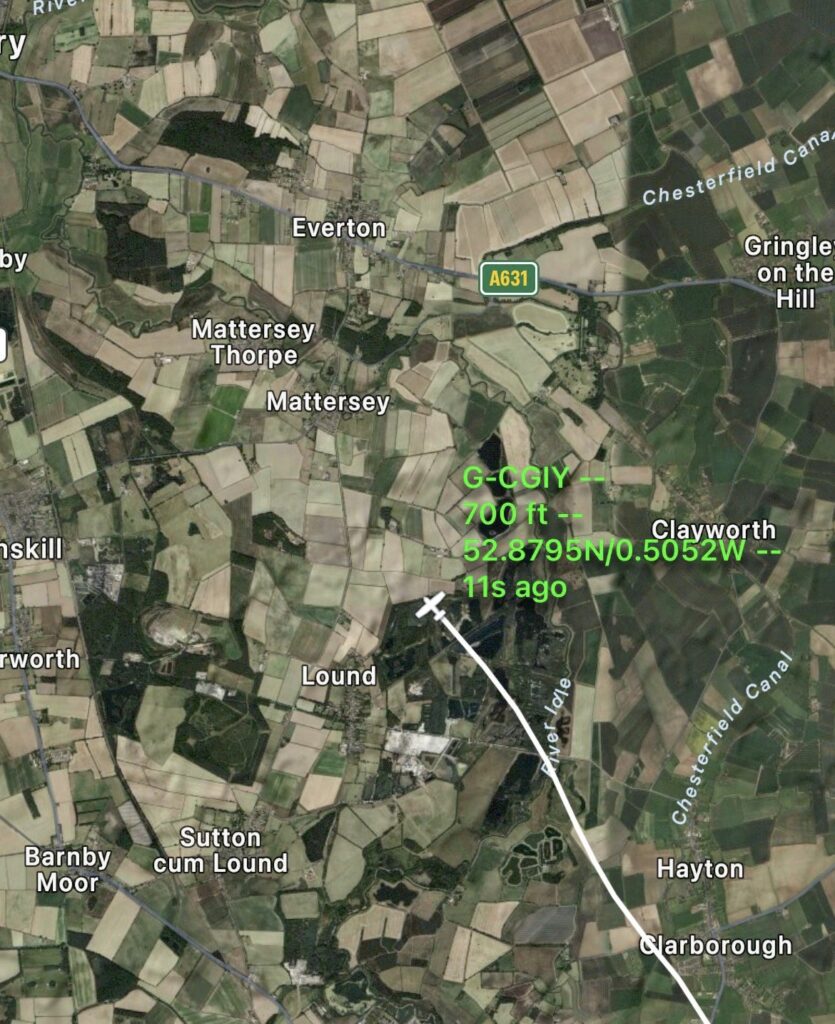
Sherburn:
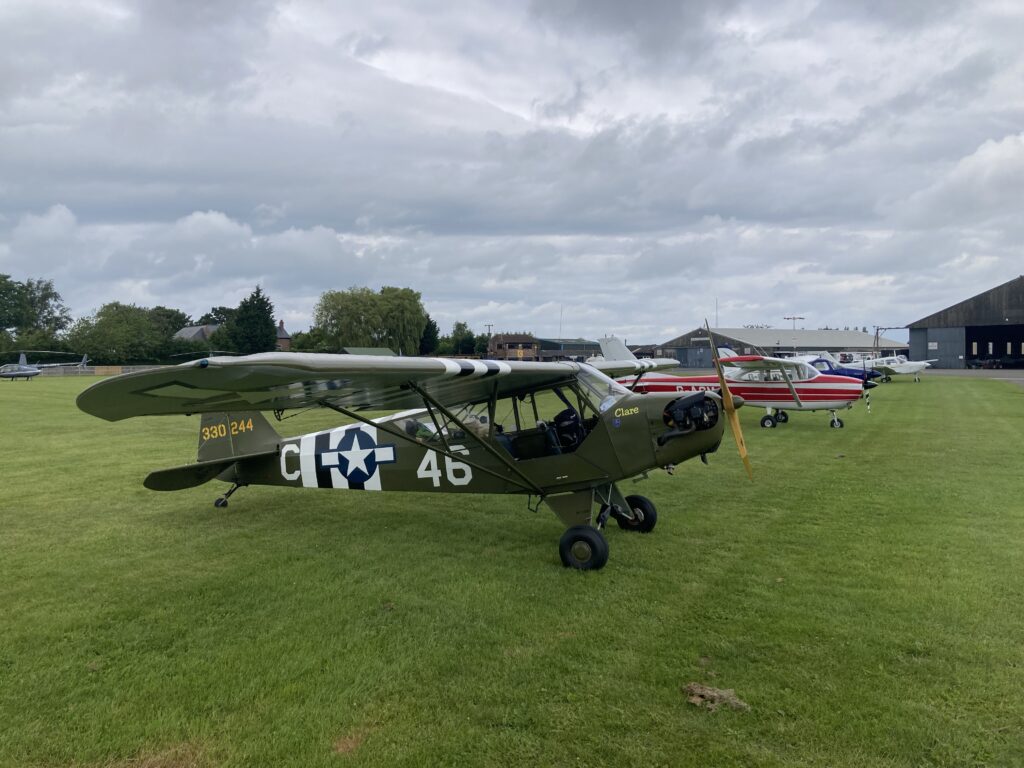
Eshott:
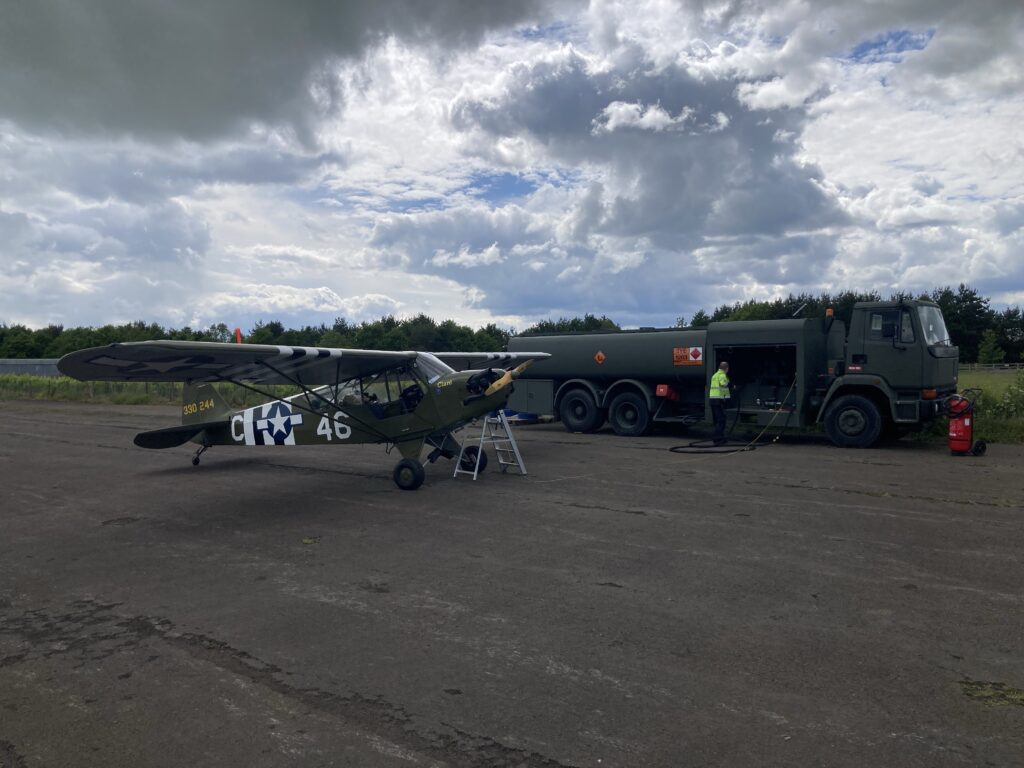
And finally, 21 hours and 45 minutes flying time from Perth, we were back where we started. Almost 22 hours in a vintage aircraft means that this is how I walk now:
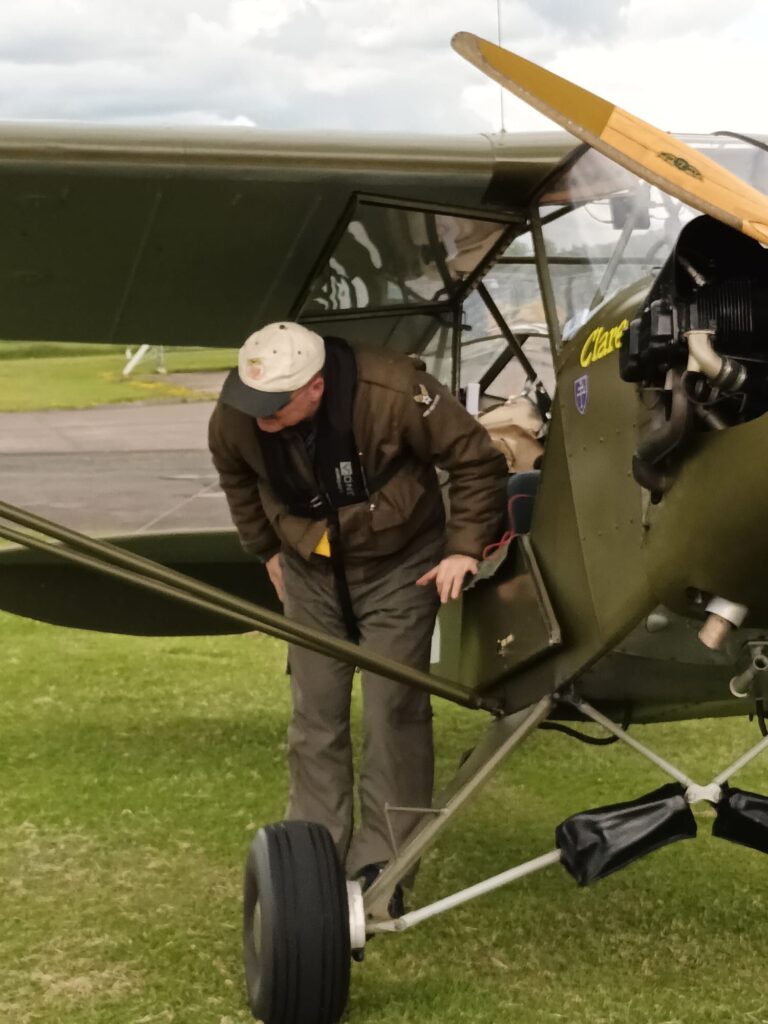
Ears ringing at about 2100rpm, back permanently contorted and a numb bum that took several days to recover. I was nackered. Again.
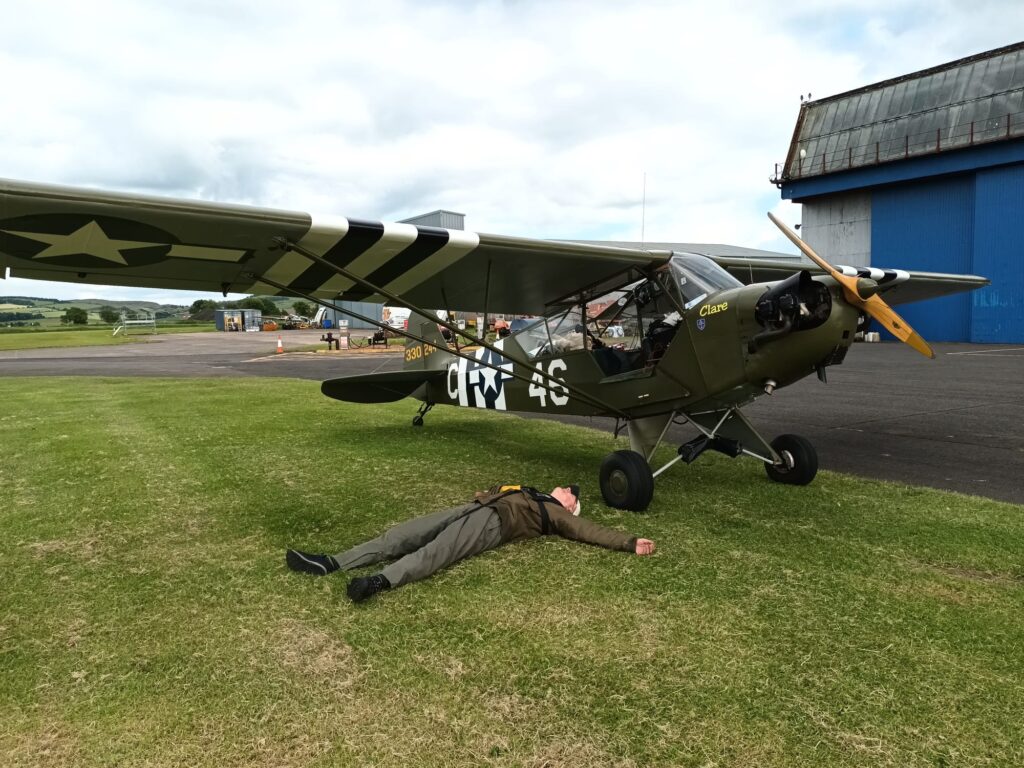
It was all worth it for the fantastic experience, new friends and awesome adventures.
But it was worth it mostly for the privilege of being allowed to fly down the D-Day beaches in formation with other genuine WW2 veteran aircraft to commemorate the 80th anniversary of the invasion and, in our own small way, honour those who took part.
And finally…
A quick point about the photos for all five parts of this D-Day 80 trip report…a lot are mine but quite a few are from the WhatsApp group. Thank you to everyone who posted pics, hope you don’t mind that they are being used to spread the word – I’m planning to go through one by one and give credit where credit is due.
An excellent selection of superb photos from the event can also be found at:
https://www.flickr.com/photos/99352218@N03/sets/72177720317912516/
Jusqu’à l’année prochaine..!
D-Day 80 Part 4 – Along The Beaches…and Joe Biden
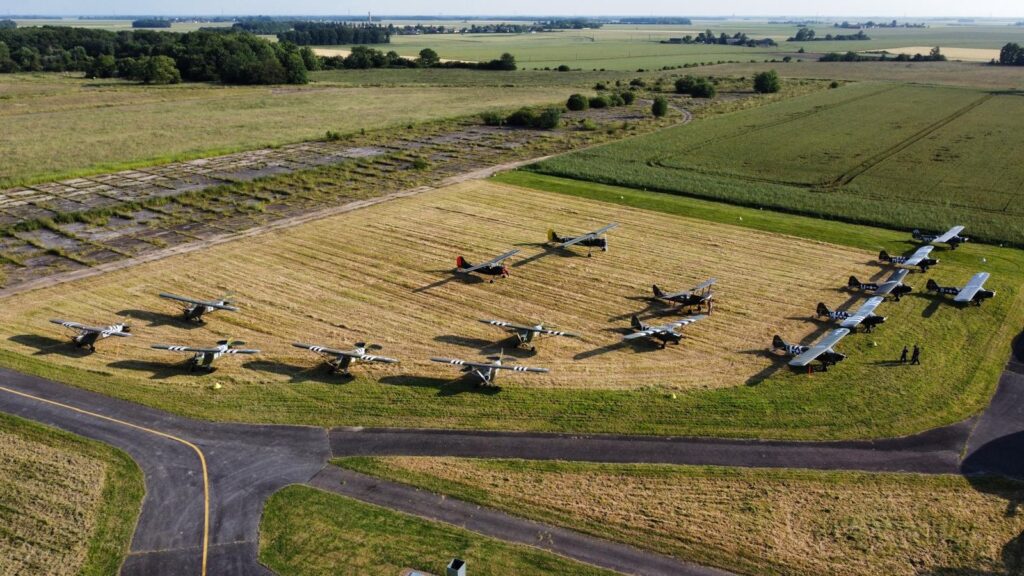
There’s something about a grass airfield in the morning…sun slowly warming the aircraft. Dew on the wings and the whirr of ropes being removed through tie-down rings. Pre-flight checks of fuel and oil.
The daily inspection on a Cub is quite simple and doesn’t take too long, but with 20 or so aircraft in close proximity it felt like a frenzy of activity…
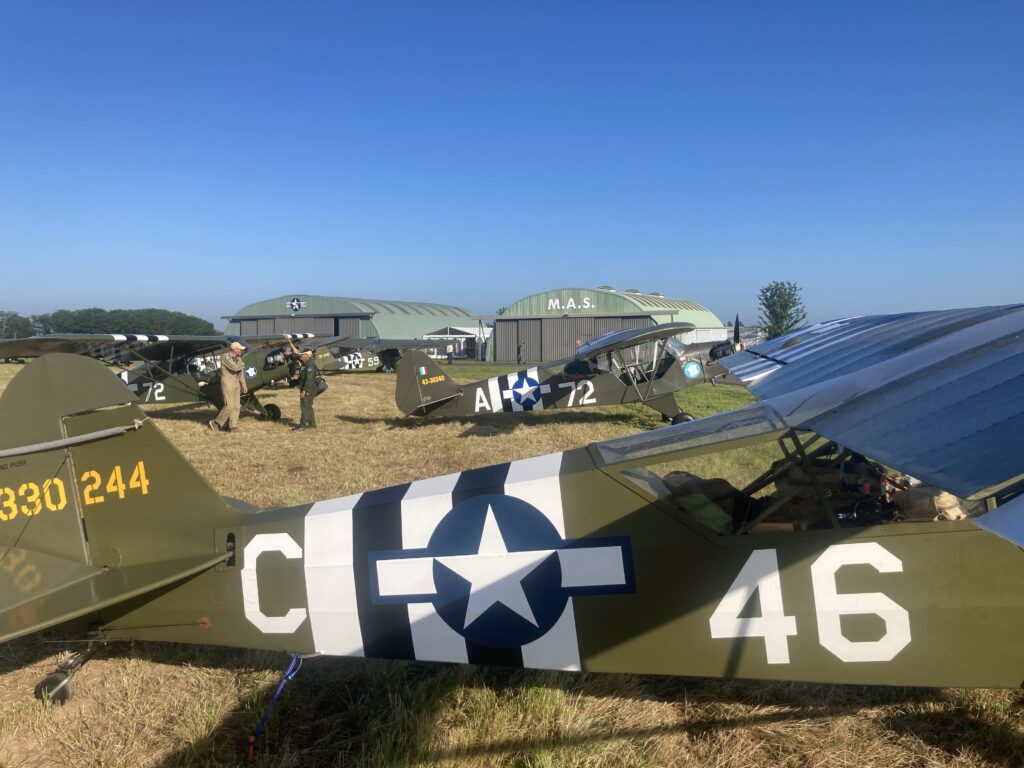
The briefing by Arnaud and Iza was simple: trail formation, 1000-1500 foot transit, no lower than 500 feet along the beaches, no fancy stuff, dedicated formation frequency and Lead would do all the communicating with air traffic control. Only after the beaches would we do our own comms for the landing in Caen.
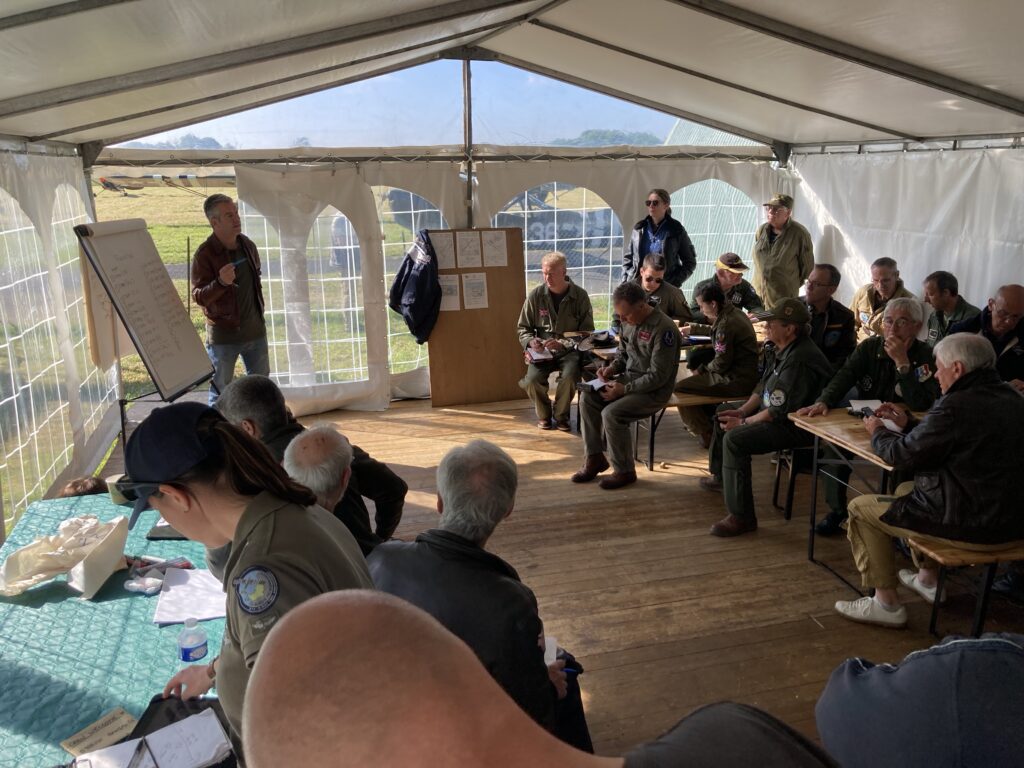
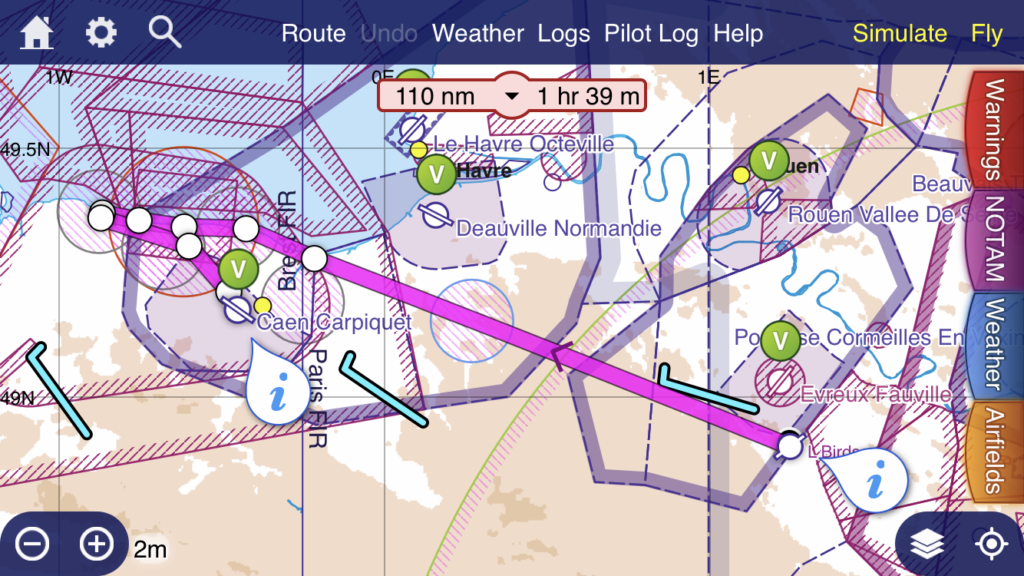
We all made a note of which aircraft was in which position…when they are all camouflaged and the same shape and size it’s difficult to tell who’s who. I was “L-Bird 17” in front of the Storch “18” and the silver Fairchild 24 – “19”. At least the ones behind me would be easy to distinguish.
In front of me were two Cubs “15” and “16”, then the Auster AOP Mk V of the Vliegend Museum Seppe in the Netherlands – “14”.
As we began to taxi out in order for take off, “15” called on the radio that they were unable to start, “16” called that they were shutting down to assist, and that put me behind the Dutch Auster for take off.
We took off in 30 second trail and slowly formed into a loose string of aircraft about 8 minutes long, chugging over the French countryside at 70 kts or so…
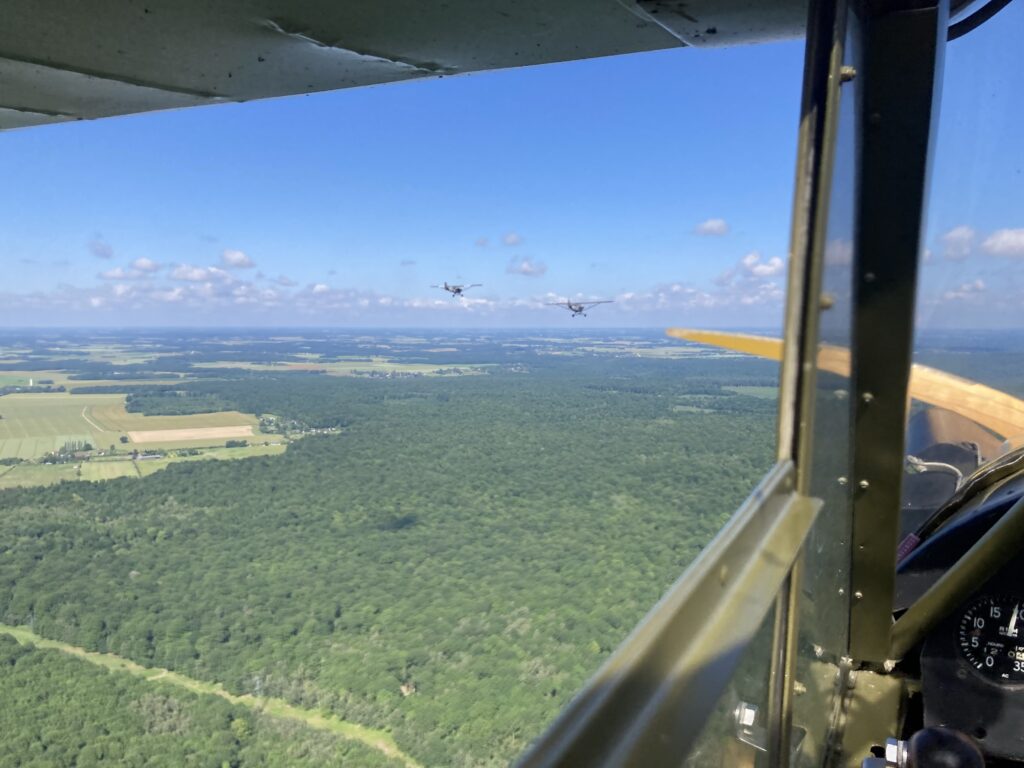
Ten minutes after takeoff, we heard “15” and “16” call to say they were now airborne and pushing hard to catch up. They had to be with us by the time the formation started to enter the restricted airspace, and that was at a specific time.
Arnaud, as the lead aircraft in his Stinson L5, managed to negotiate a slight delay and so, approaching Lisieux, the whole formation did a racetrack orbit to allow the stragglers to catch up.
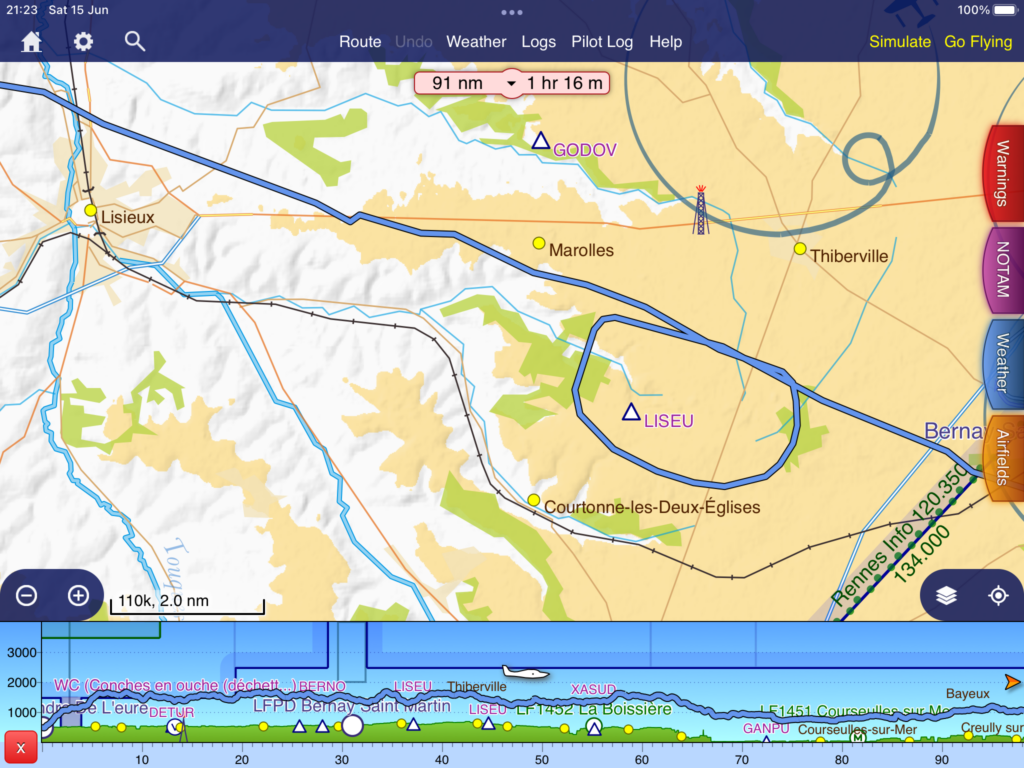
All they could see ahead was a mass of aircraft, with no idea who was who…”16” called for me to waggle my wings, which I was happy to do quite vigorously, and the picture became clearer. They tacked on the end and the formation was complete again. Totally out of order now, but complete. In the nick of time too, as the lead aircraft was just entering the restricted area.
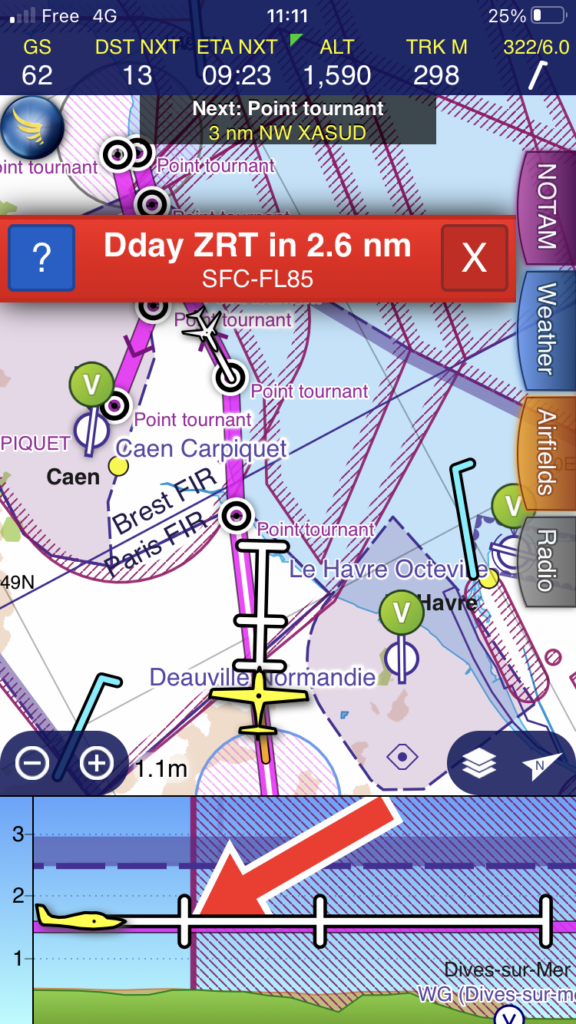
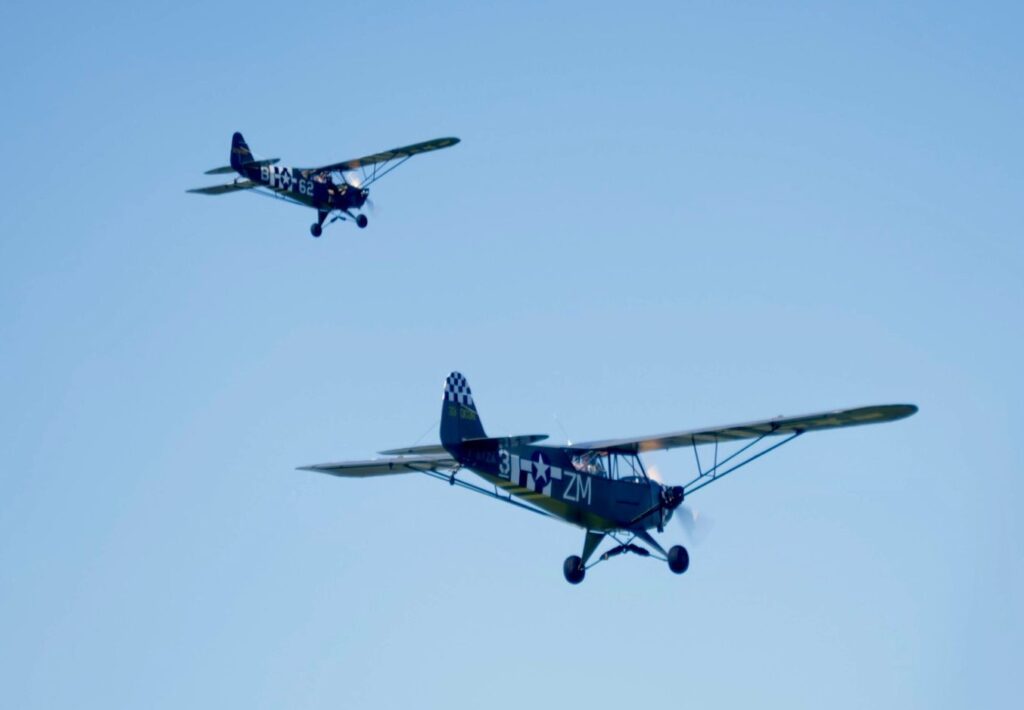
The brief had been to fly in trail along the beaches, but as we approached Ouistreham and the start of Sword Beach, it became more of a thundering herd. I tried to slot in behind the Dutch Auster…
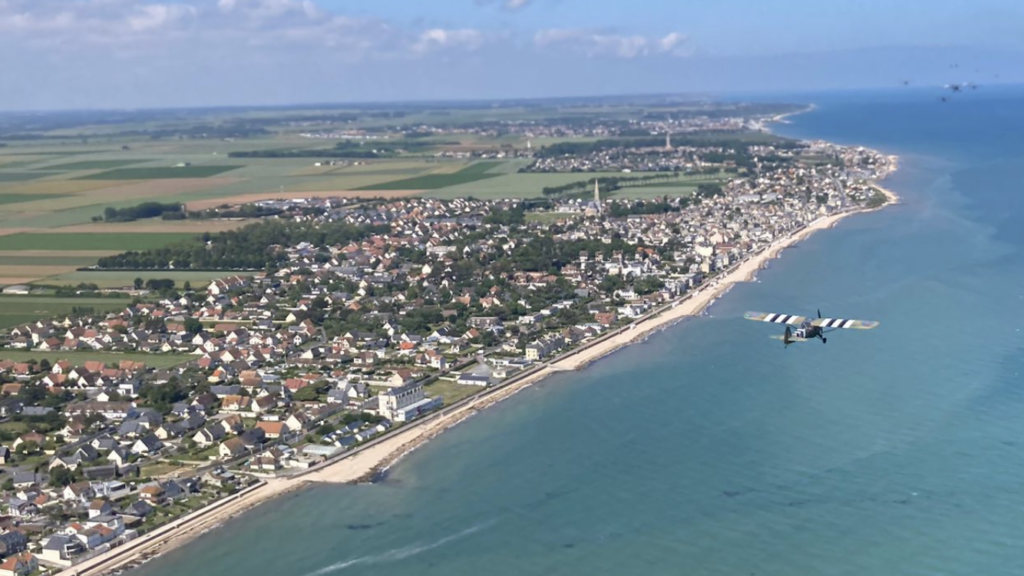
But eventually “15” and “16” overtook on the outside and some sort of order was (temporarily) restored
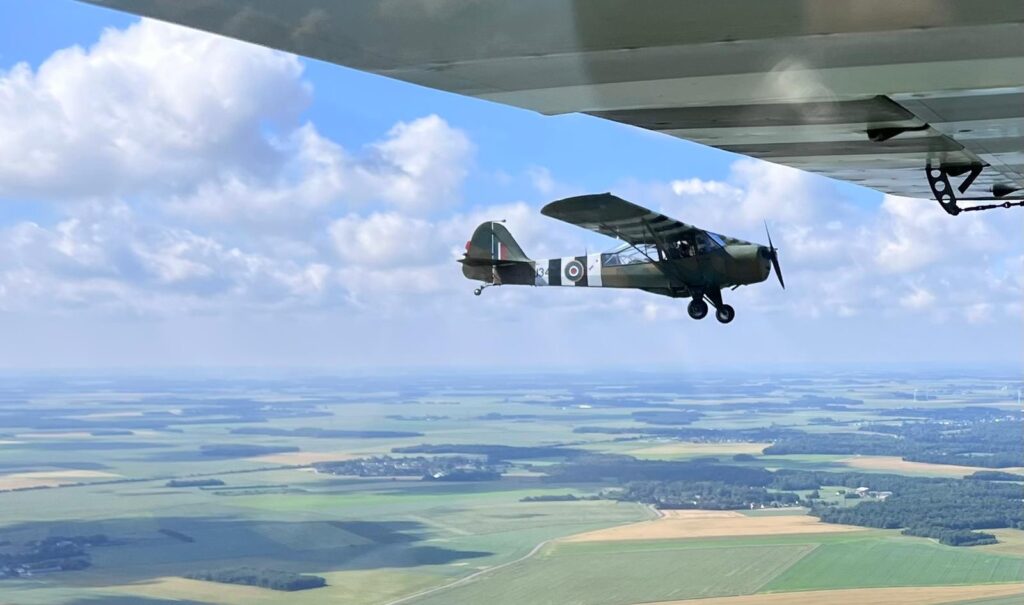
No pics of this bit as it was rather busy! After Sword, Juno and Gold beaches we flew past Arromanches to the turn point where we headed inland and tried to transition from the gaggle into some sort of sensible spacing for the landing at Caen on the grass runway 31R. As you can see from the SkyDemon track screenshot below, there were several s-turns required to get the spacing:
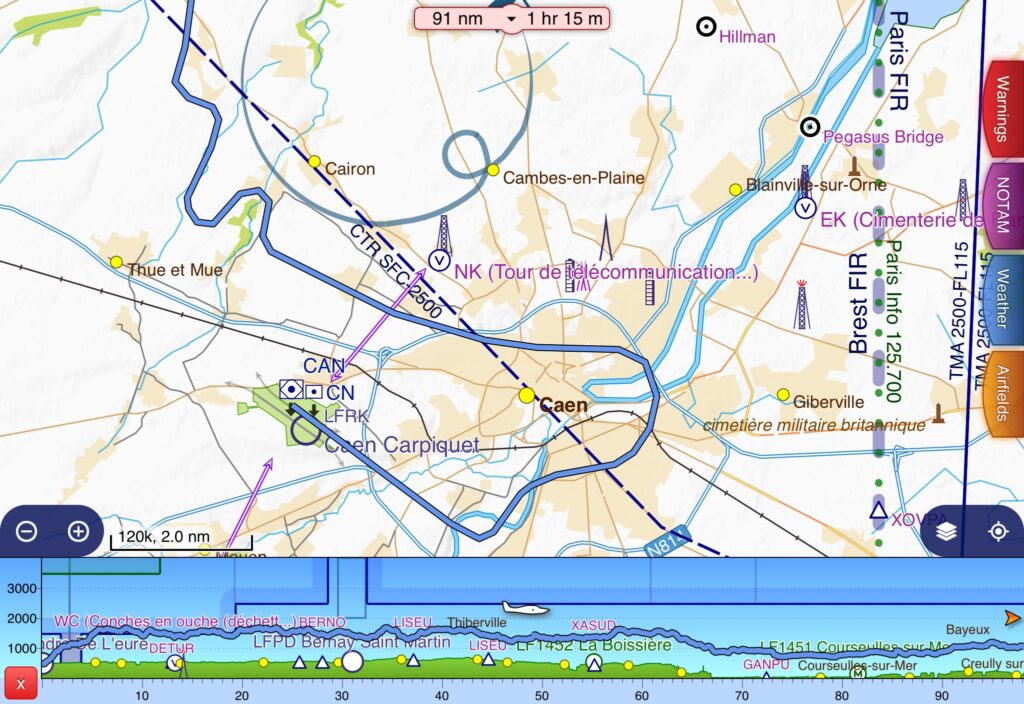
All credit to the controller at Caen who sorted out the confusion with the numbering and the order. He got us all down in one piece. We taxied onto the parallel taxiway and shut down. Notice how I am now somehow in front of “13” and “14” – as I said, we did get a bit jumbled up:
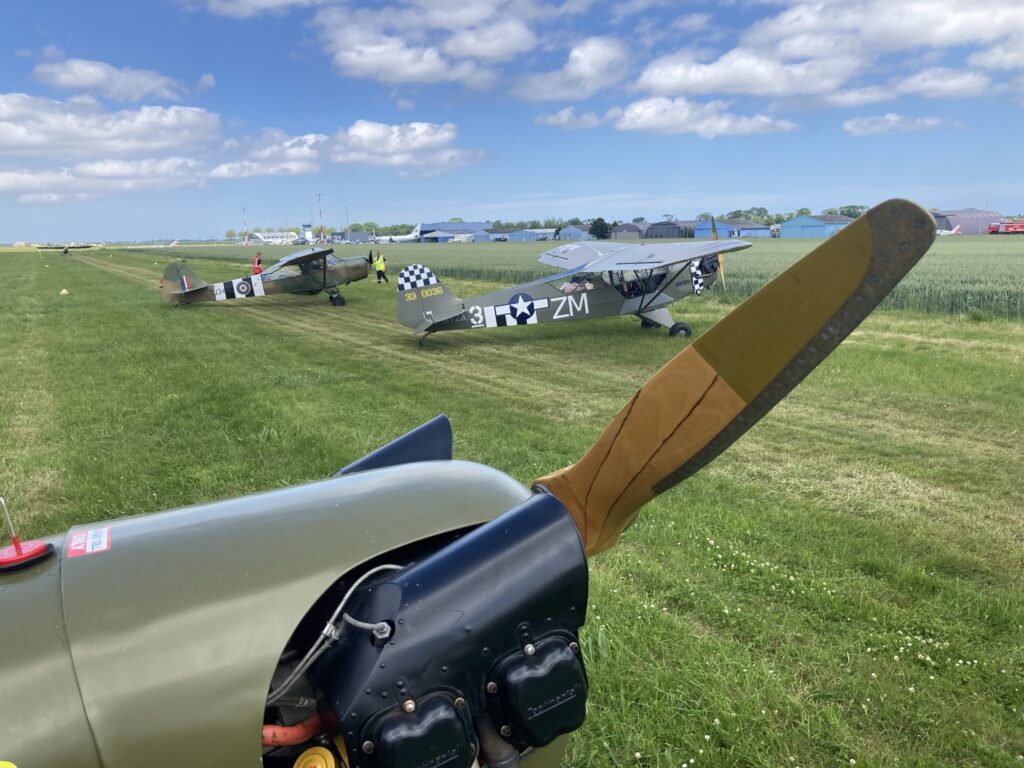
A fuel truck was already there and slowly made its way down the line of aircraft, filling each one to the brim in anticipation of the next flight along the American sector:
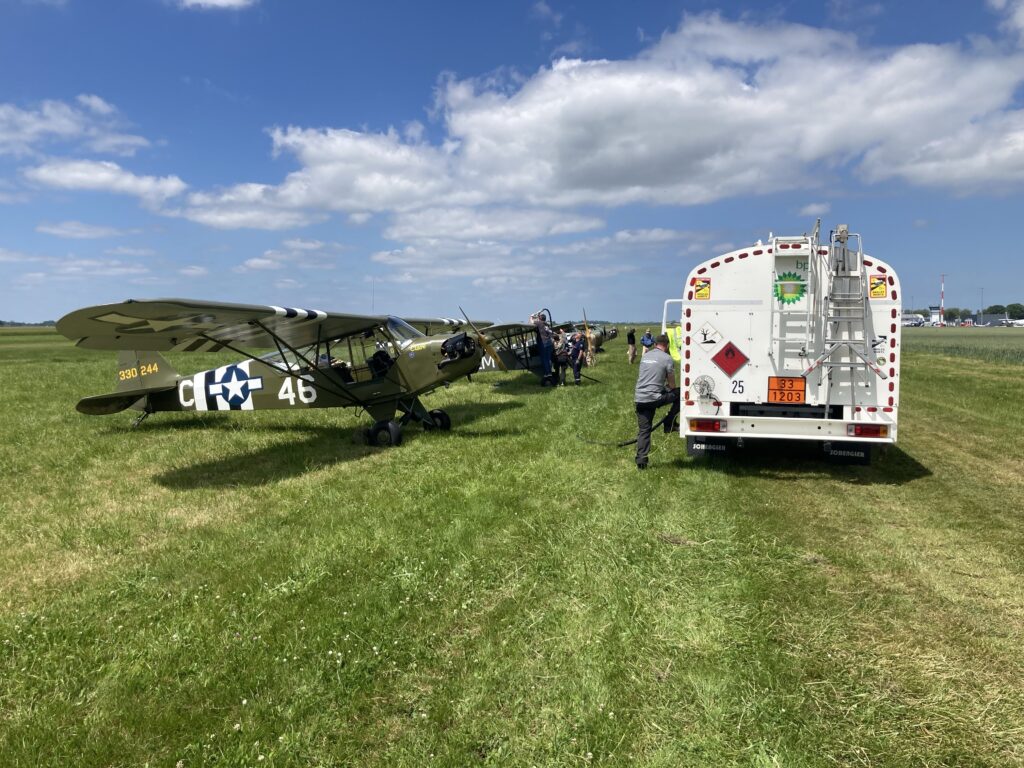
And then, disaster! Joe Biden was coming back…at least a three hour delay while the airspace was closed. A very welcome pack lunch was brought out while we waited for Joe.
As Caen is probably too small for the normal 747, he arrived in a 757…
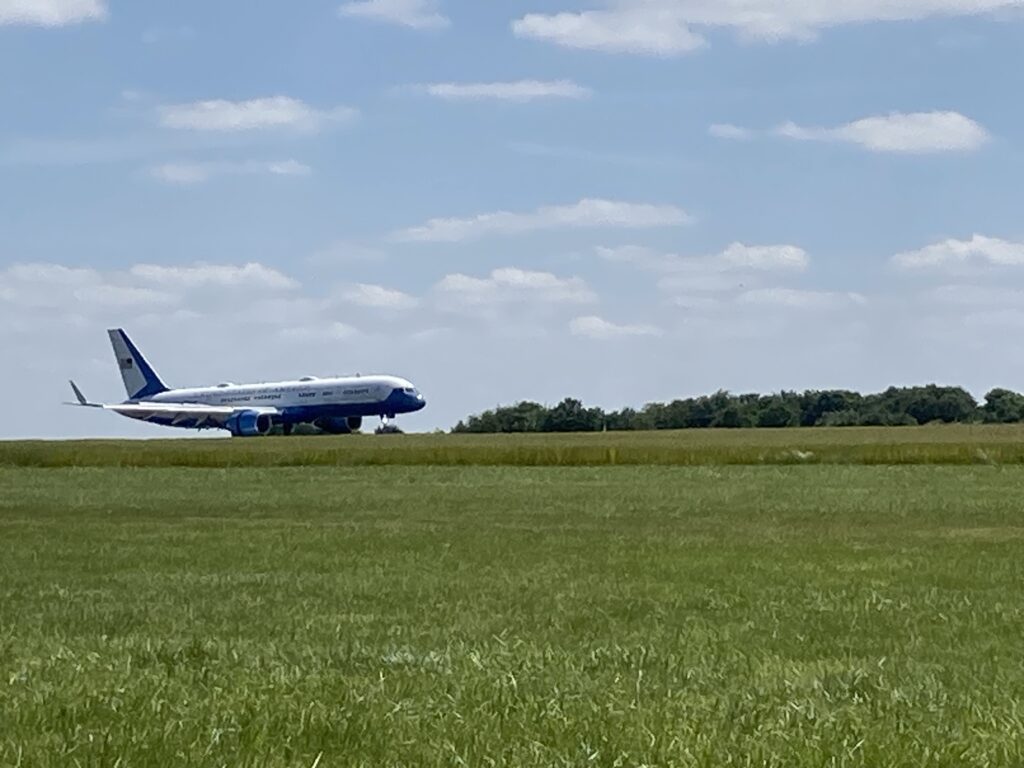
…and clattered off in a flock of helicopters to whichever ceremony he was attending:
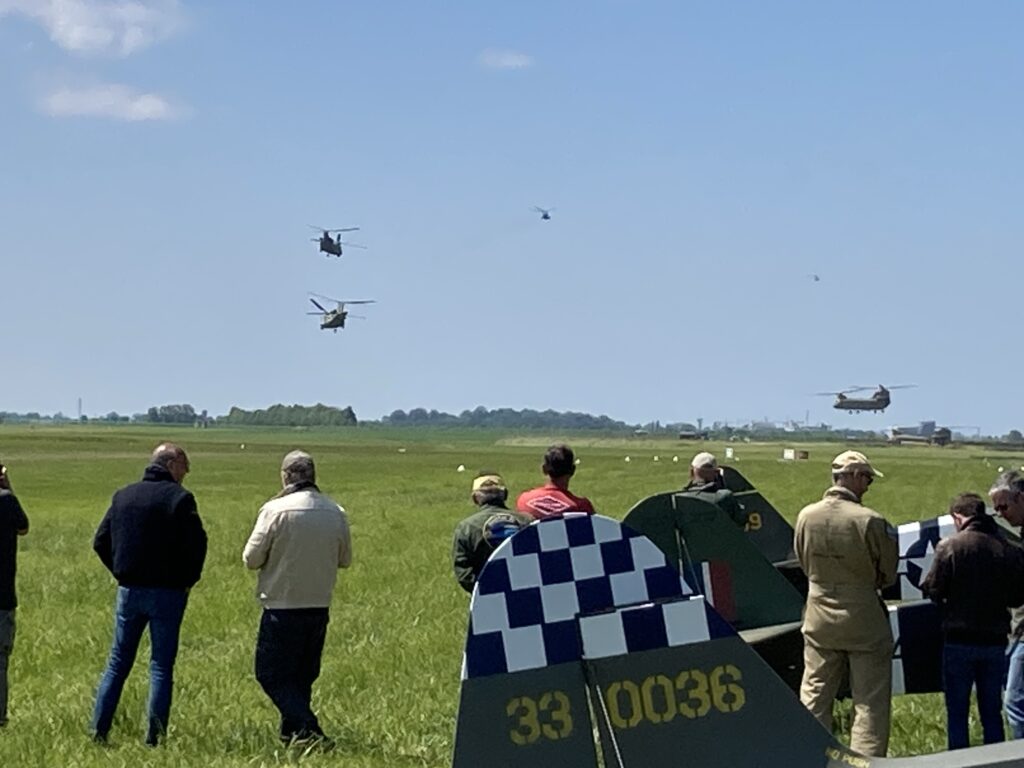
While he was gone the Patrouille de France treated the L-Birds to our very own flypast:
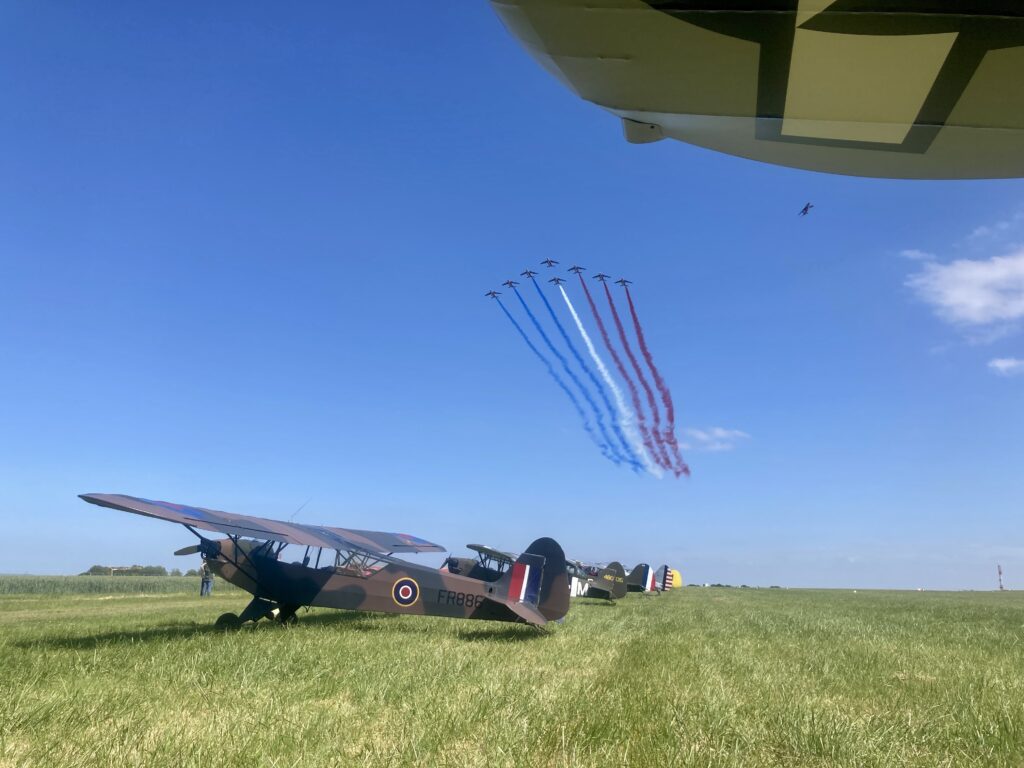
They flew right over the line of aircraft, so it must have been for us, right?
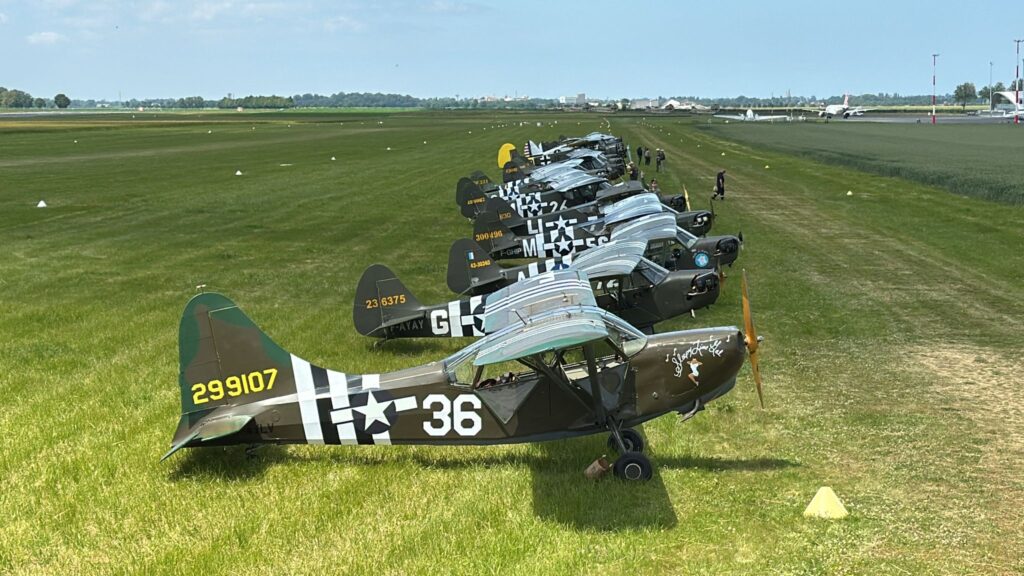
We sat around chatting and planning the next flight as time marched on…I did some advance planning for the trip home by booking the same hotel in Rochester for the next night. Eventually the president returned and after a bit of faffing about, took off to go home, leaving us the airspace again:
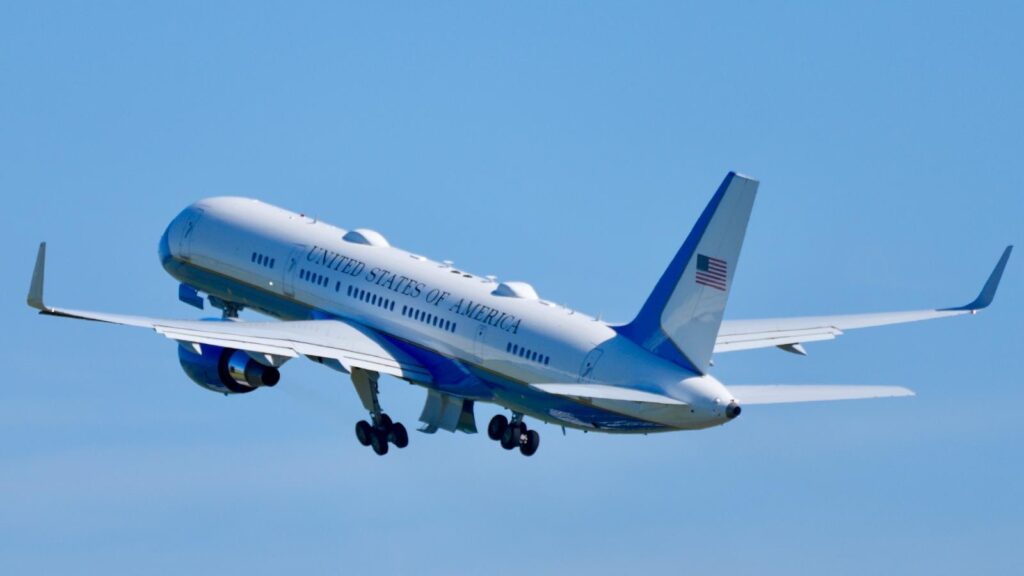
Unfortunately it was now too late and the second flight along the beaches was cancelled. We had a team dinner reservation in the hotel and we couldn’t keep the staff hanging on all night.
Aircraft were tied down and we trudged all the way from the grass taxiway where we were parked, along the side of the apron, to the terminal building. Directed down a staff corridor, we emerged in the main concourse and made our way outside.
A taxi ride later and we hit the bar…the Brits and the Dutch contingents:
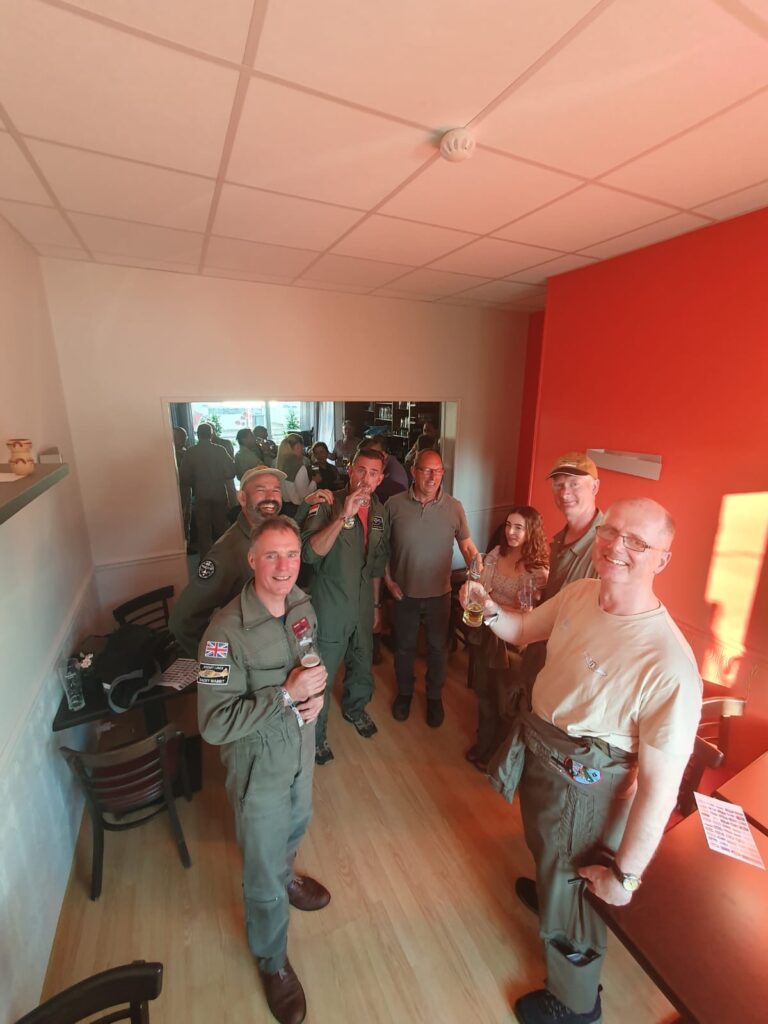
Dinner was awesome and a good time was had by all. This is just one of the tables:
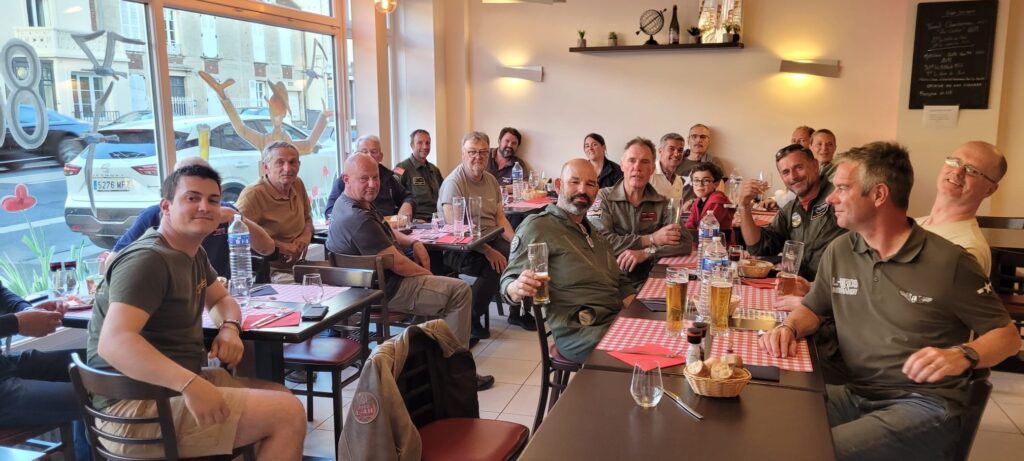
In my room later on, I was checking weather and doing paperwork for the return trip. Flight plan to ATC, email to customs at Le Touquet and GAR form to Border Force in the UK.
Last time we entered the UK after the 2018 Sweden adventure, nobody came to meet us. Maybe Border Force would turn up this time..?
D-Day 80 Part 3 – “The Greatest Aerial Armada”
It was eerily quiet at St André…just me and a couple of other aircraft. For a bit I felt as if I was in the wrong place.
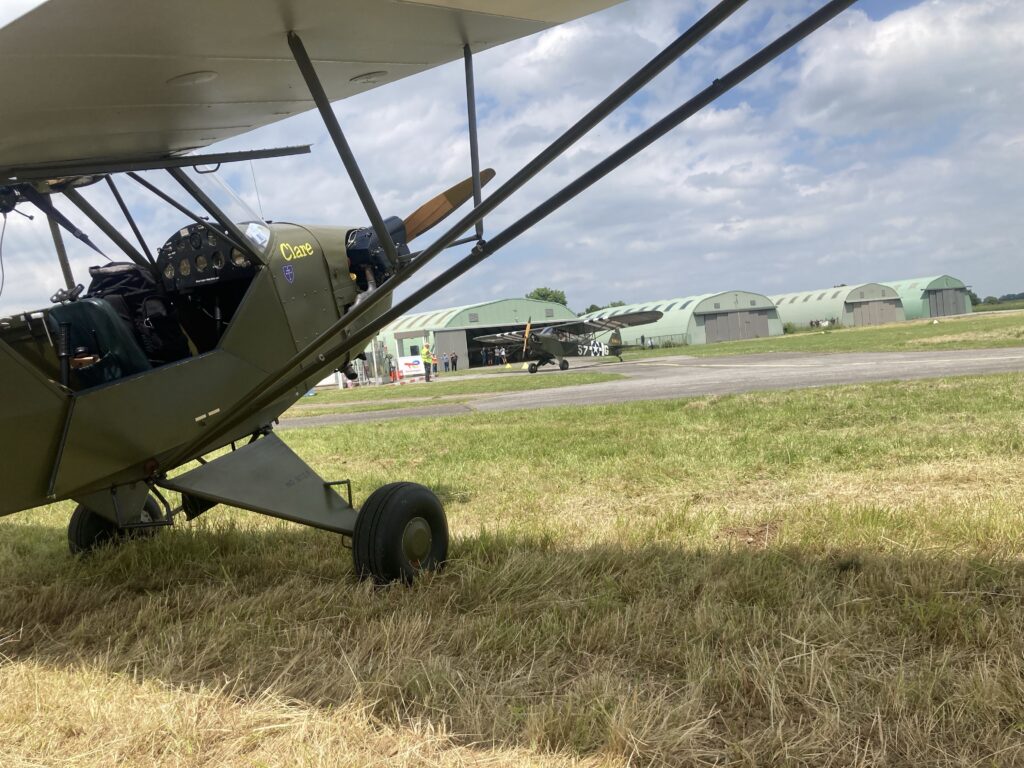
And then, off in the distance, some dots in the sky and the gentle drone of several Piper Cubs approaching…
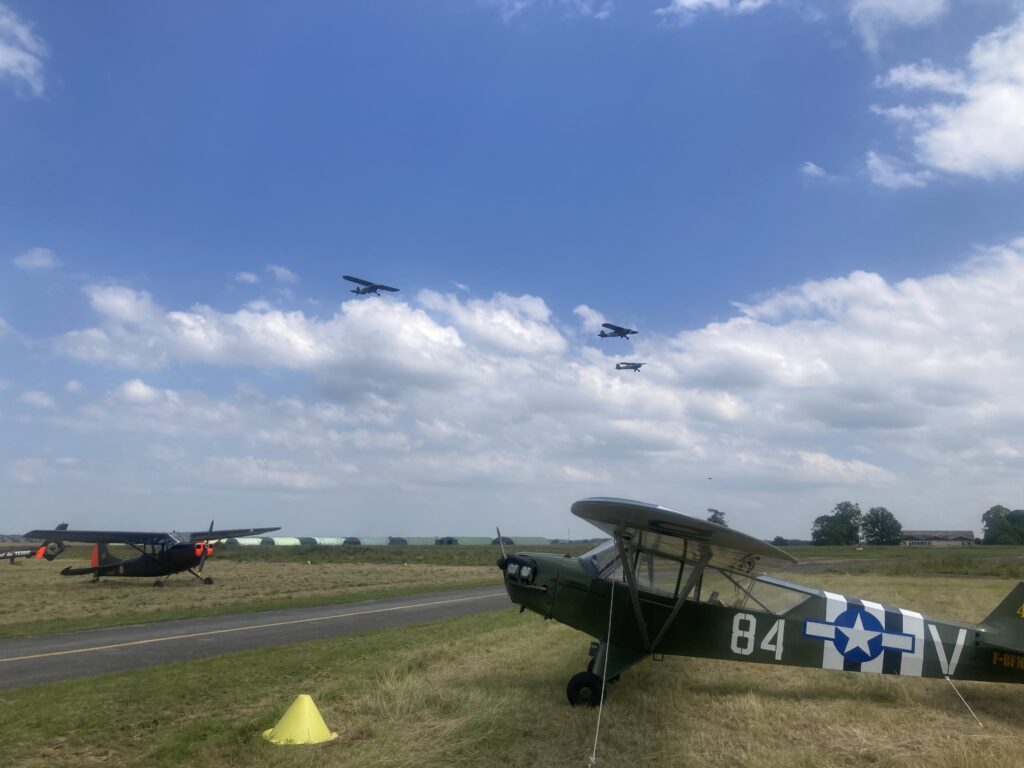
They landed and taxied to the pumps. One of them turned out to be an Auster, not a Cub. It’s the one in British markings:
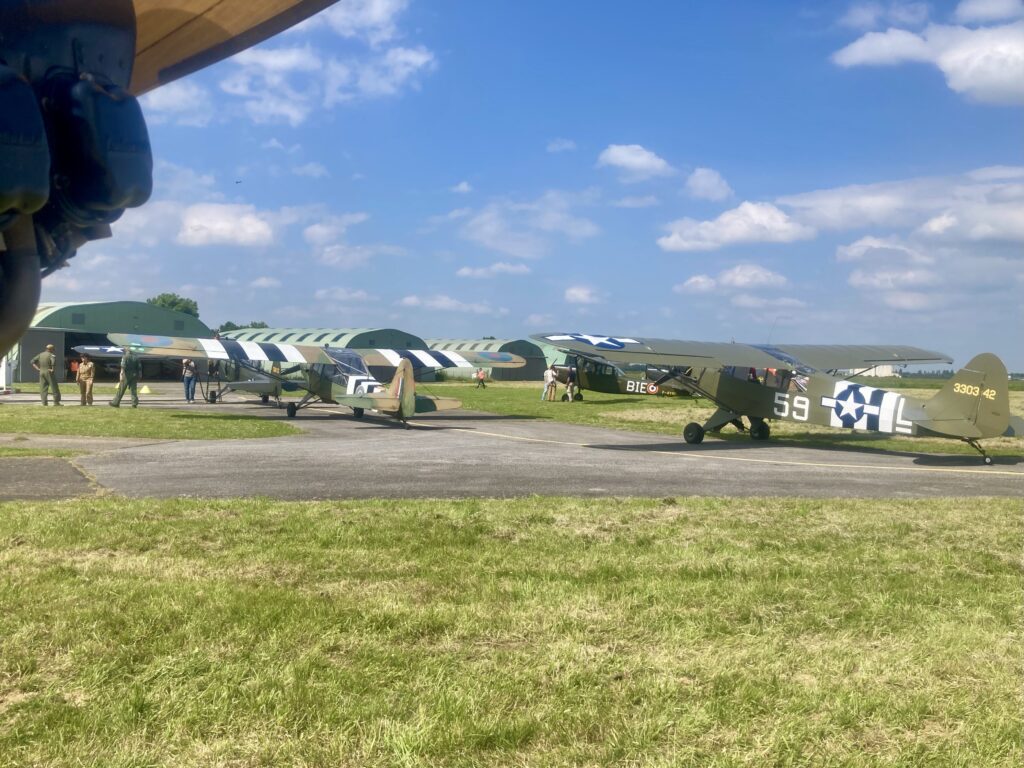
It turns out that the early arrivals had been given permission to fly on the 6th. They had done a 10-ship formation down the beaches and flown past the commemoration ceremony as the veterans were arriving. They even appeared on French TV.
The following pics are from various participants (not mine):
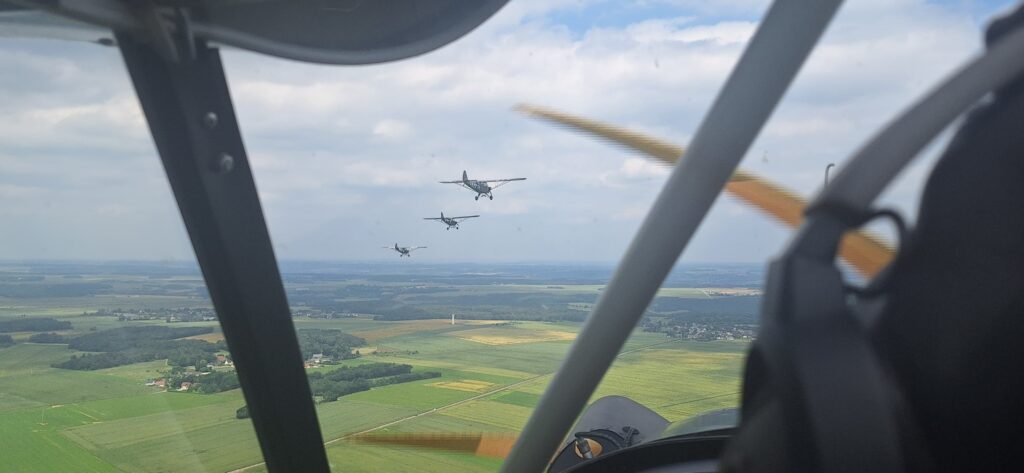
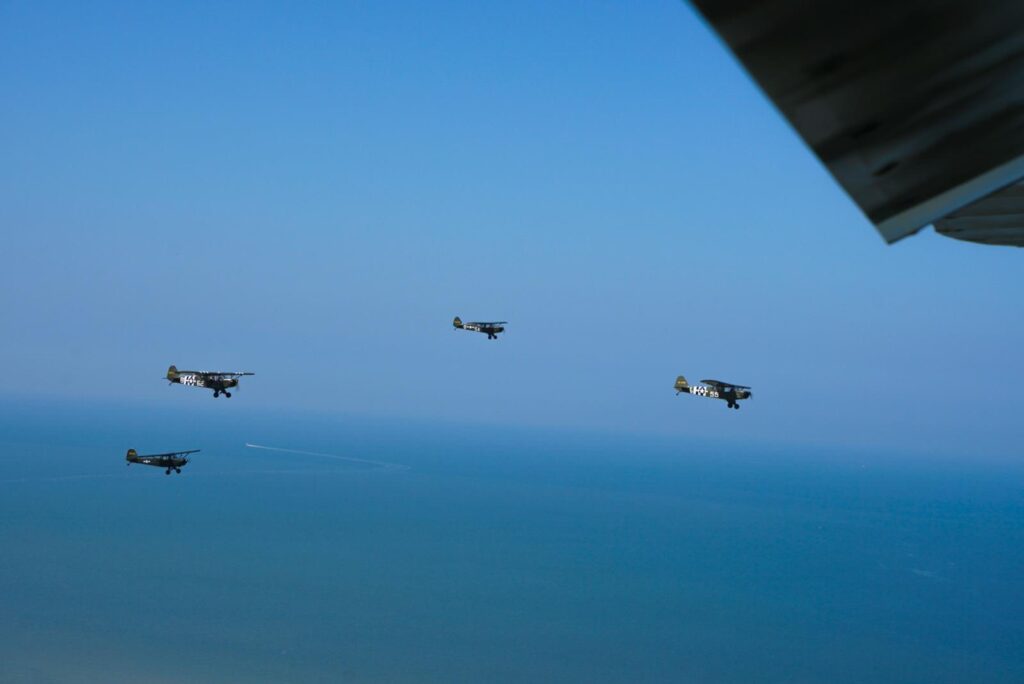
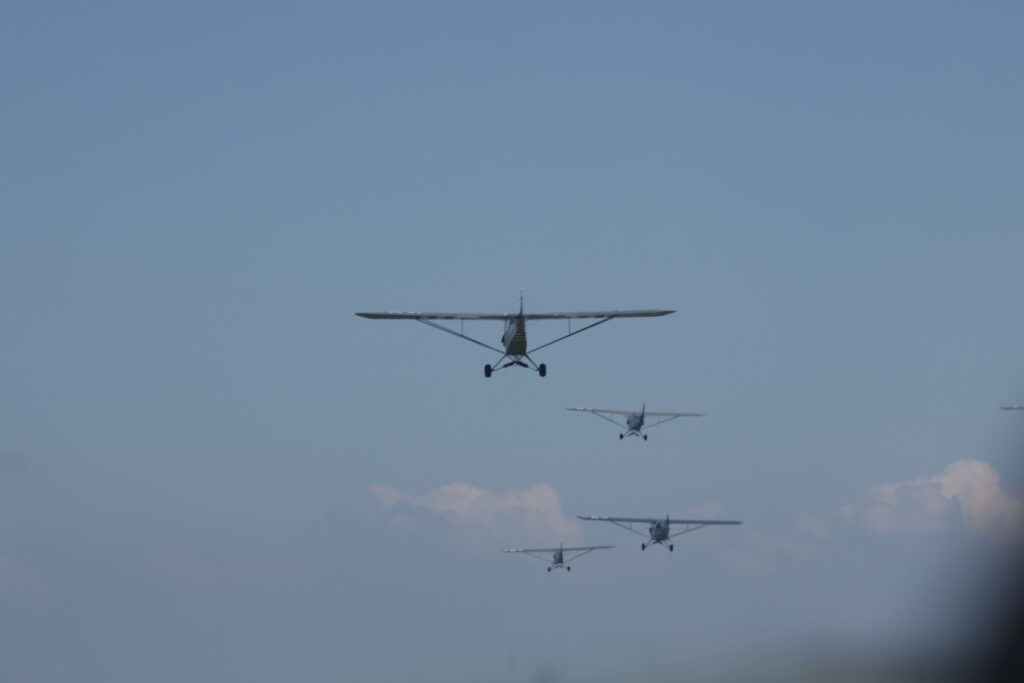
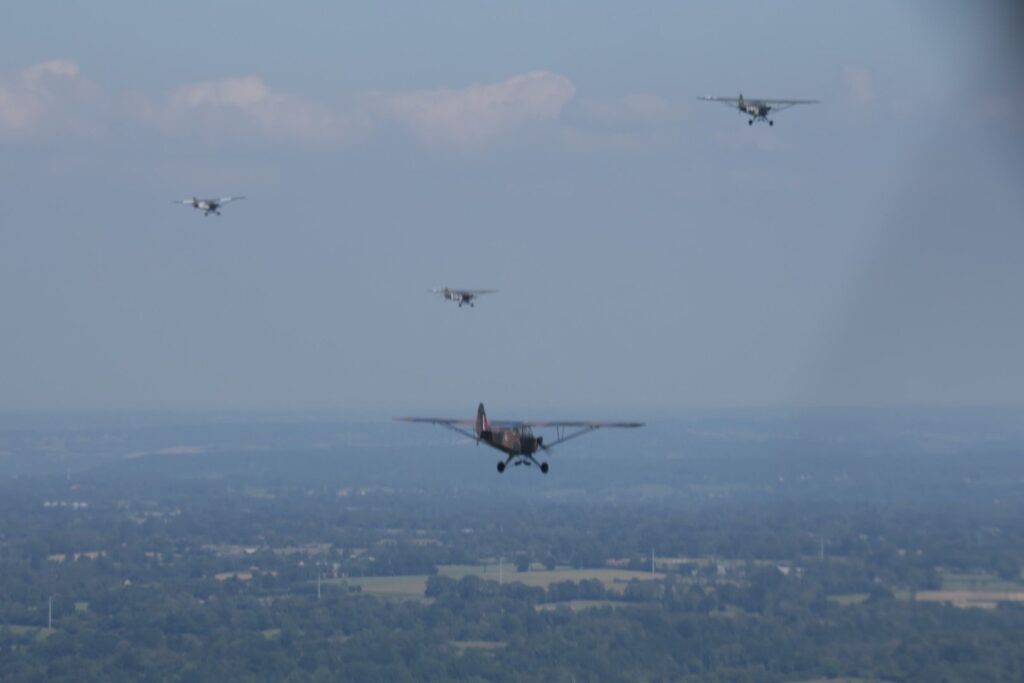
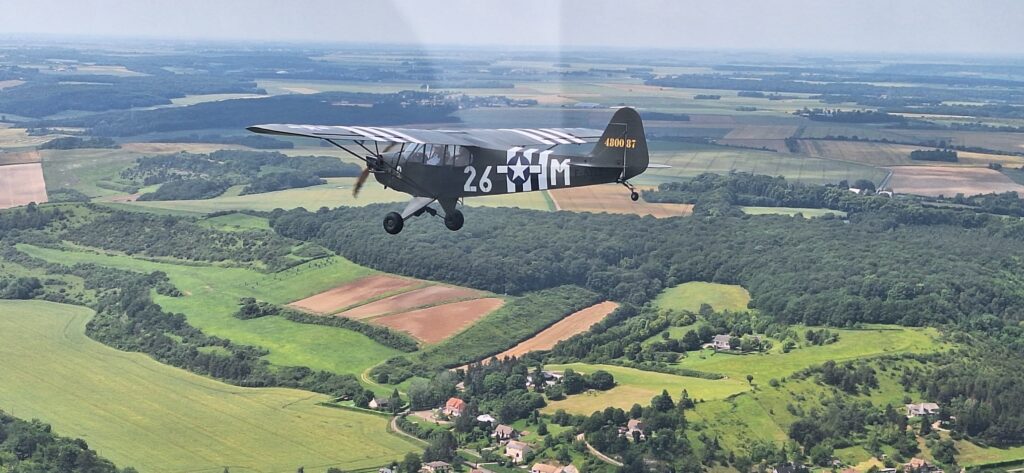
Wonder of wonders they even got permission to fly while the US President was on the ground. The temporary helipad with Marine One and escorts:
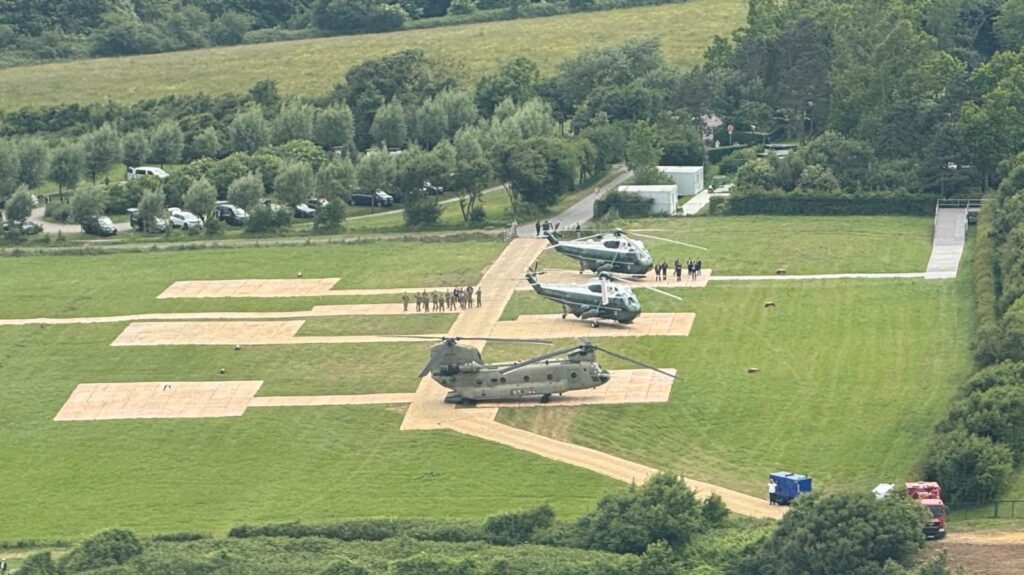
Soon more and more aircraft returned and the queue for the pumps stretched almost all the way to the runway…
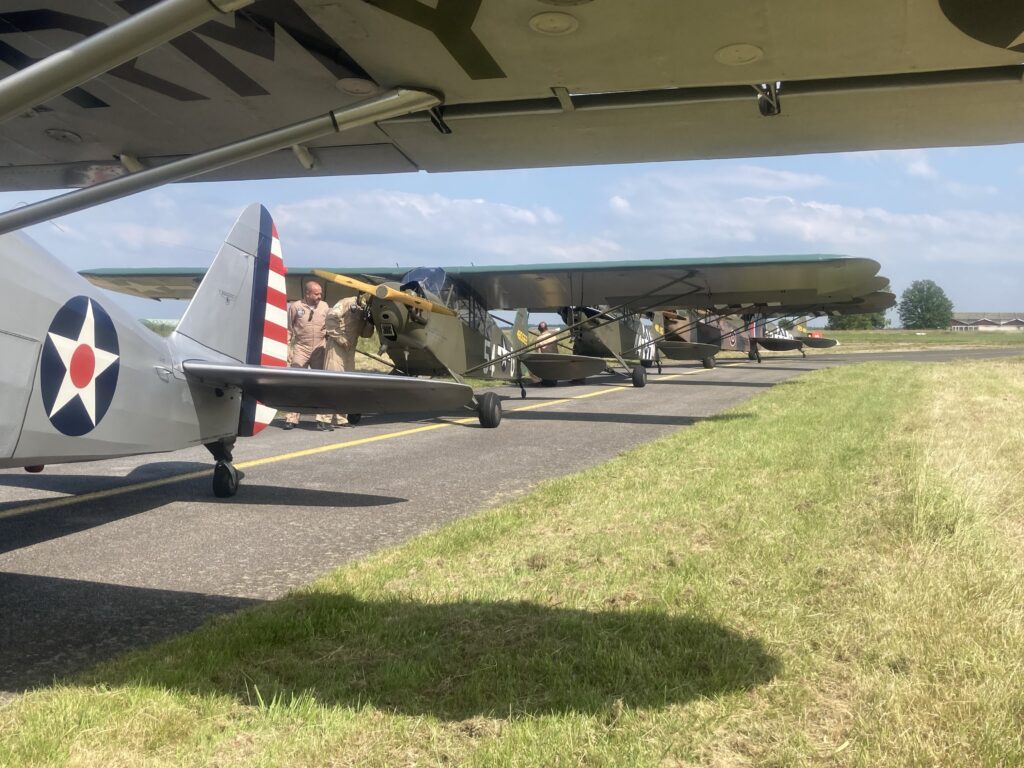
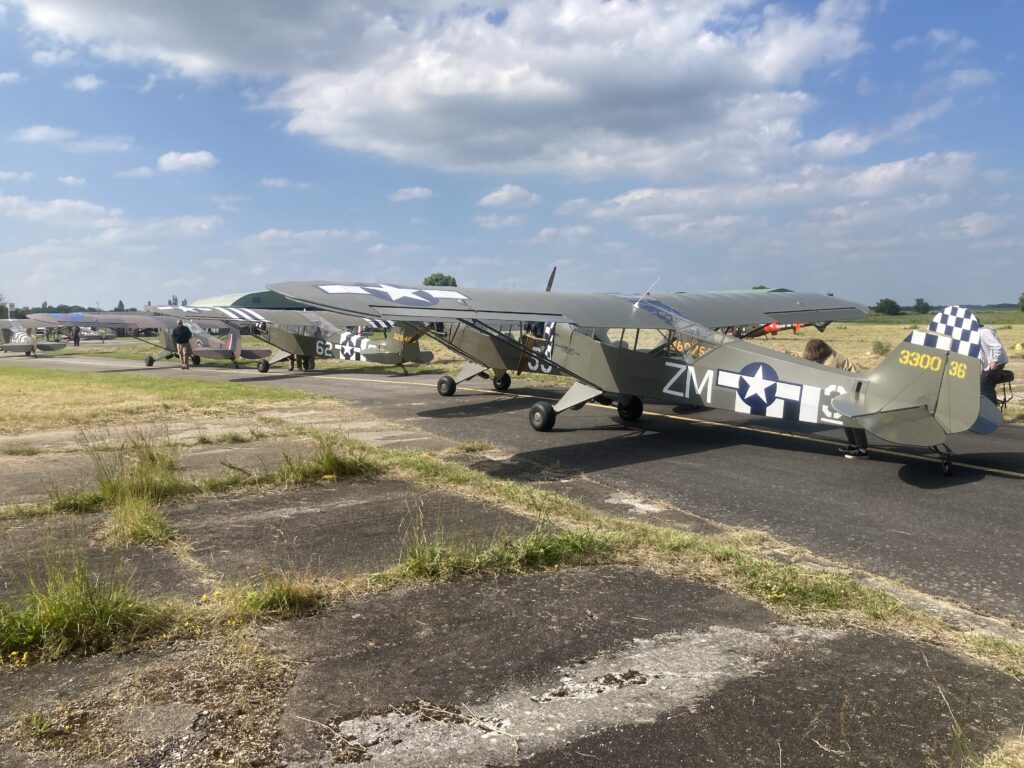
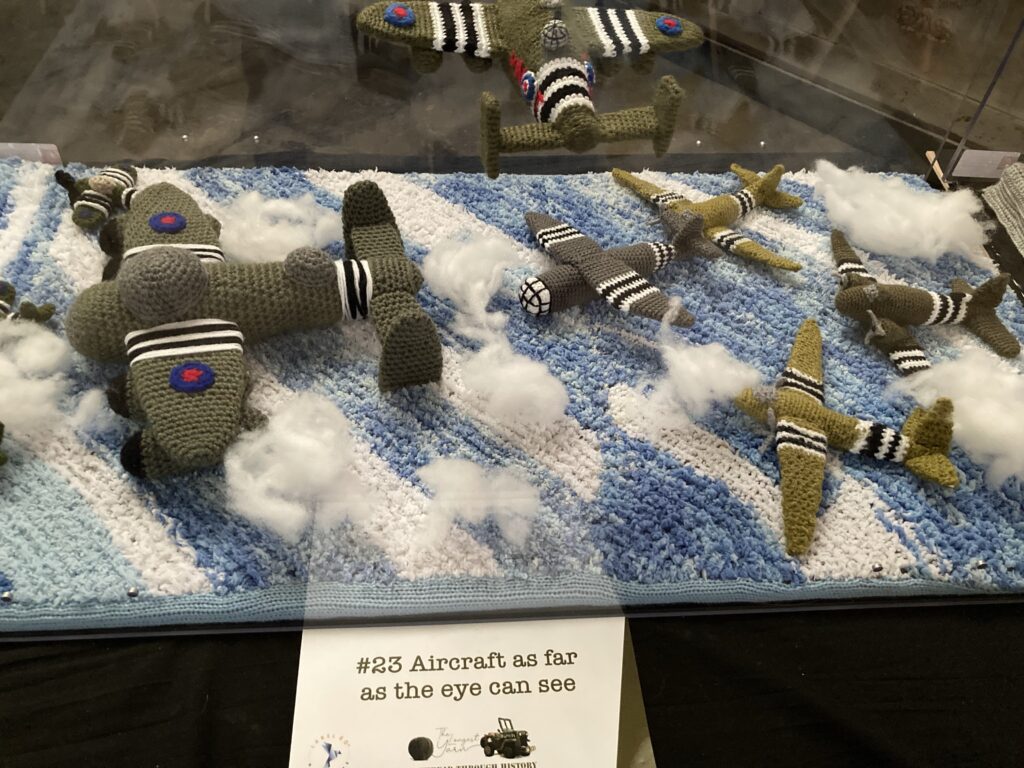
One of the late arrivals was a French registered Fieseler Storch, the German equivalent of the Cub. Stranger danger..!
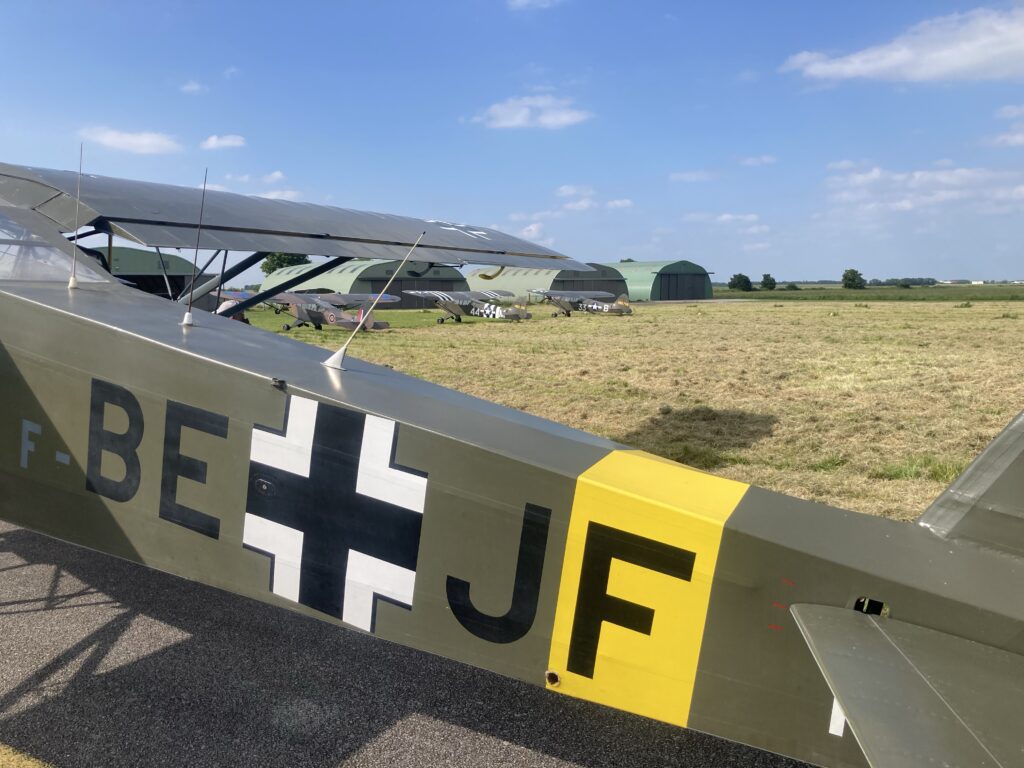
We were planning to brief in the evening for the next day’s flight along the beaches, but word came that Joe Biden was still hanging around and timings needed to be flexible. Take off was set at 1000, with brief at 0900, and “wheels” from the hotel in Évreux at 0745 to get to the airfield at 0800.
The food truck opened for business, and the special cider bottles were broken out…
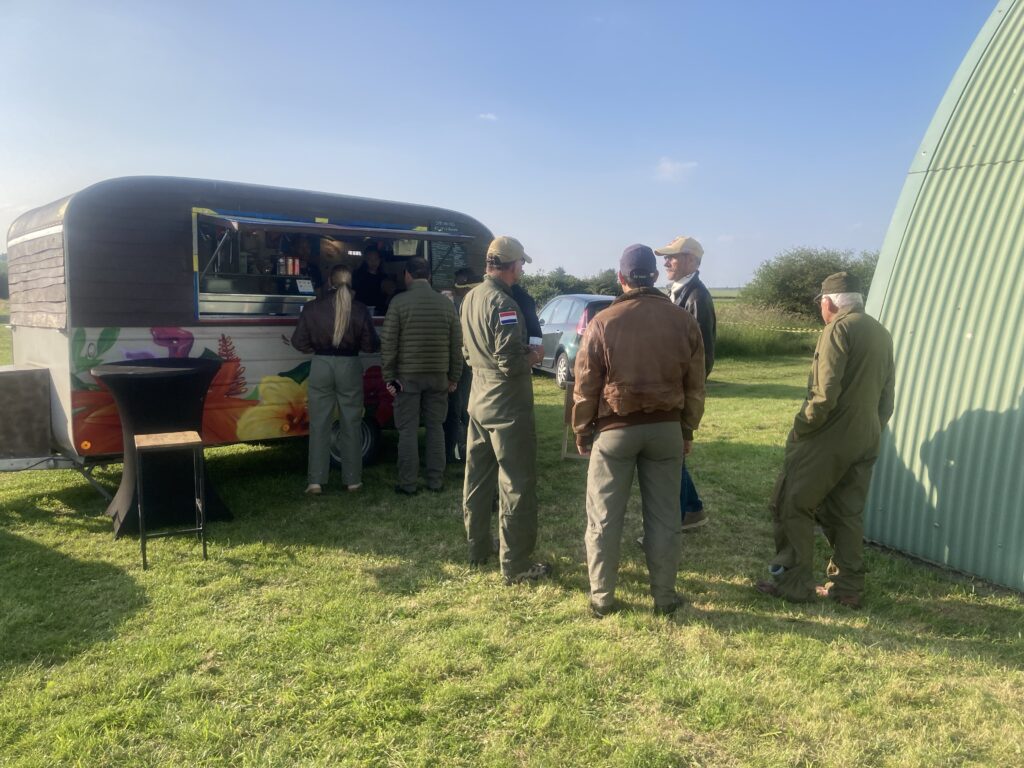
The food was excellent and filling. Hot and spicy:

…and the cidre was much appreciated, as well as the beer on tap. Here’s the Spanish contingent having fun:
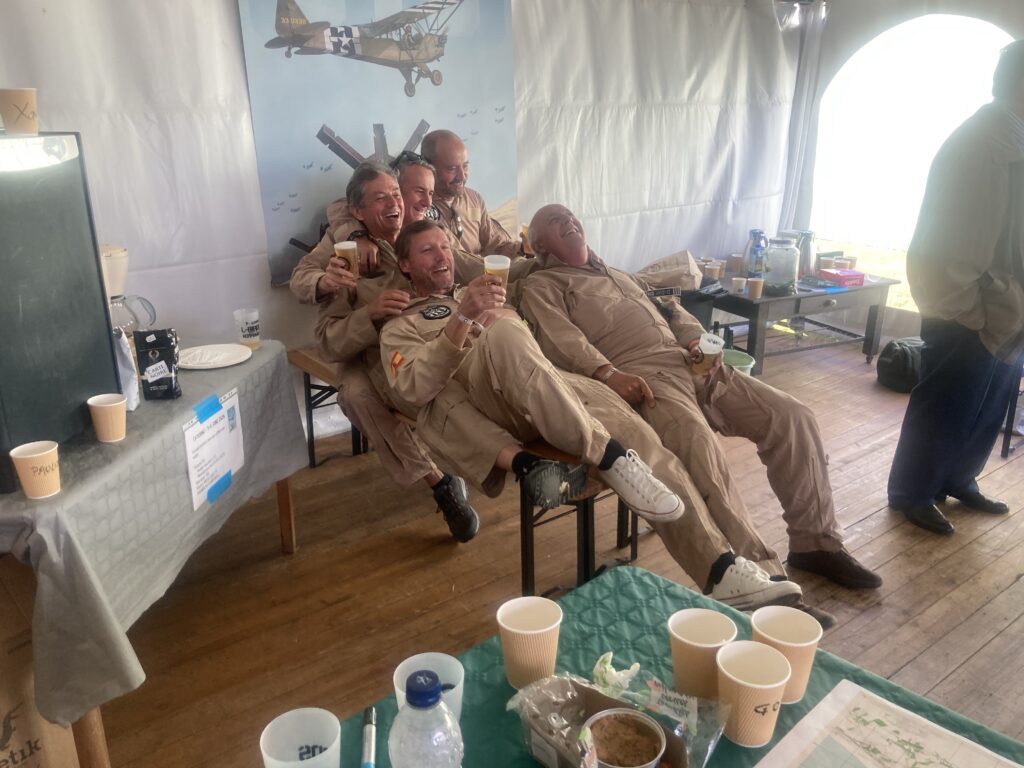
Five Spaniards in two Piper Cubs? How did they do that? They brought a car with them, alternating driving legs. It was very useful for logistics and reduced the burden on taxis and other drivers.
On the way up through France one of their Cubs had blown an exhaust. With Iza and Arnaud of the L-Birds team on the phone organising things, the exhaust was taken off, driven to a welder, fixed and back on the aircraft within about six hours.
By now the last aircraft were being refuelled…
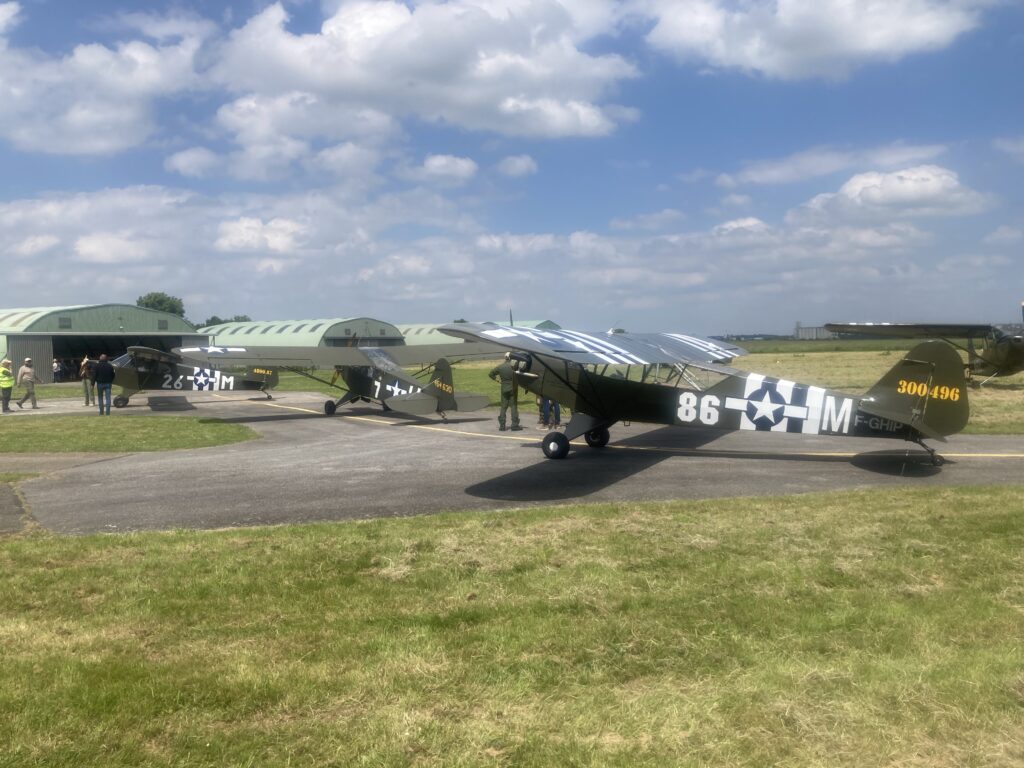
…and tied down on the grass as the sun started to set behind the hangars:
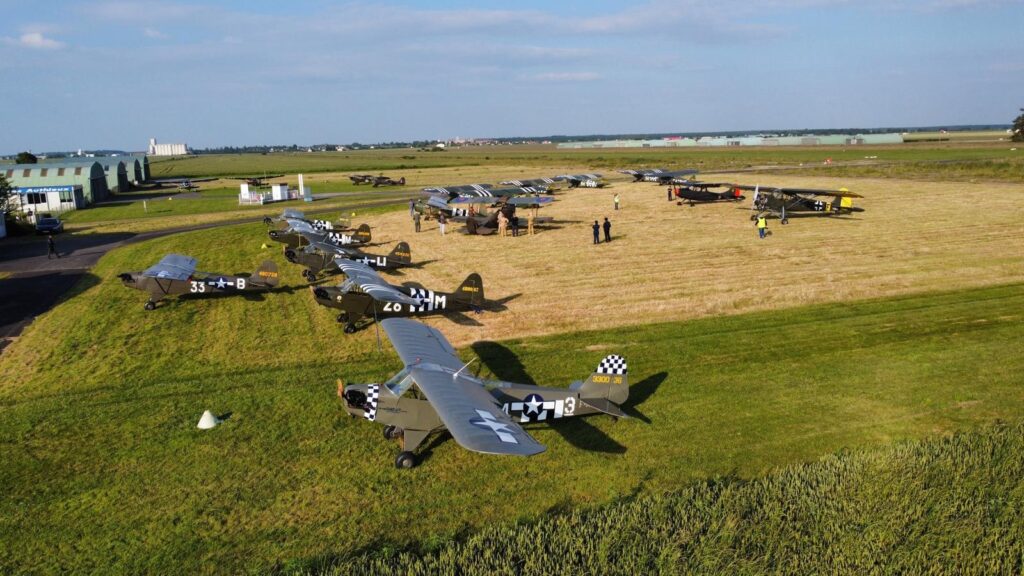
There was just time for a quick team photo before the shadow hit the aircraft:
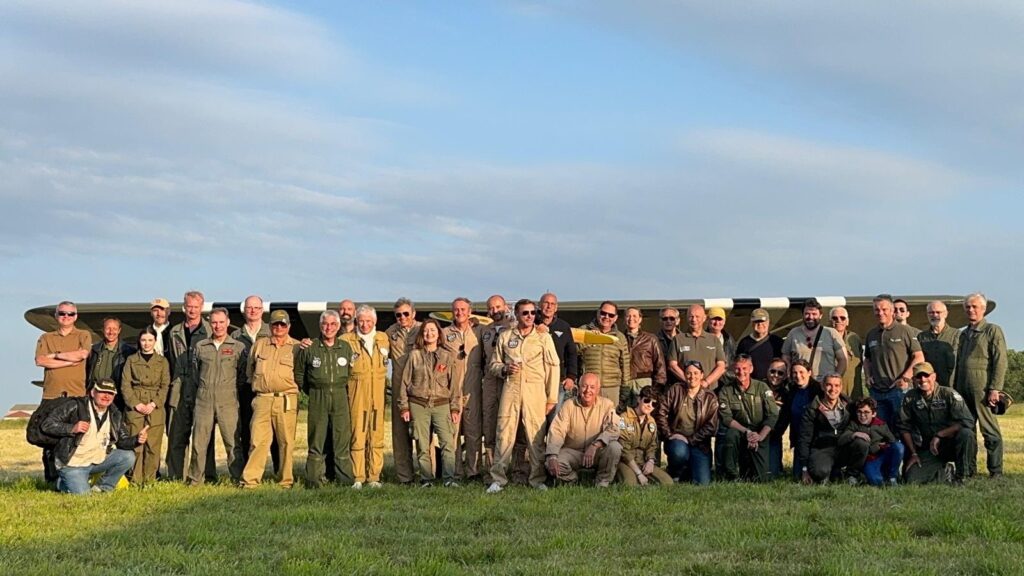
And then it was off to the hotel. Tomorrow would be the big day!
D-Day 80 Part 2 – “OK, Let’s Go”
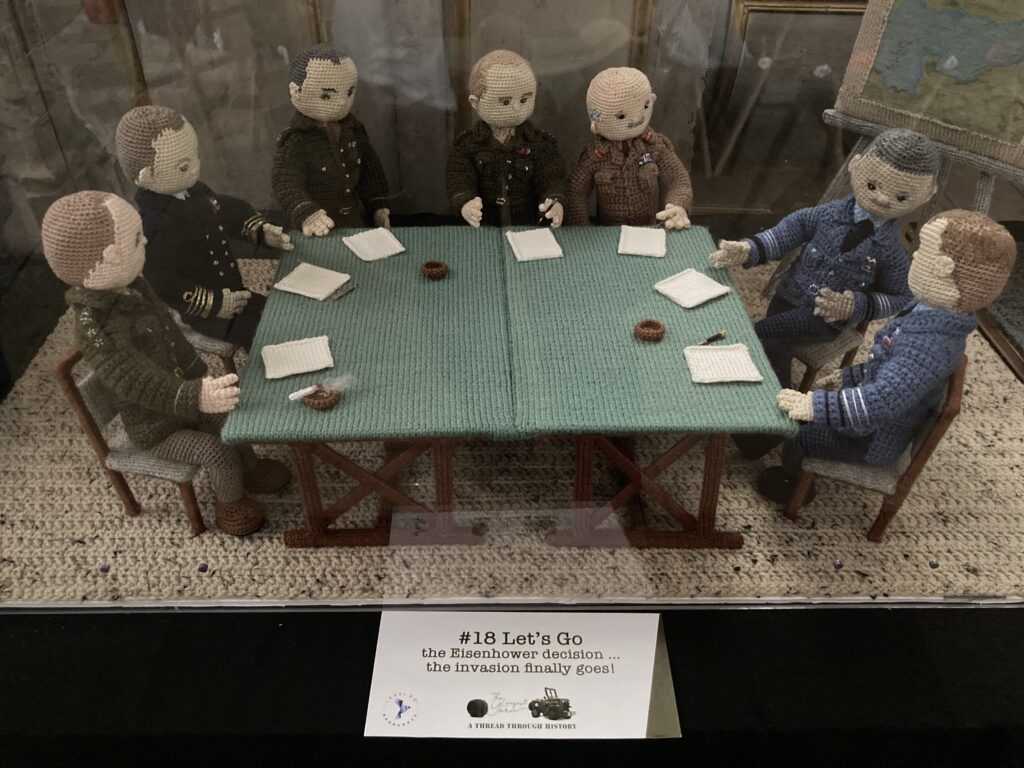
When Eisenhower made the decision and said “OK, Let’s go on 6 June”, D-Day had already been postponed by 24 hours. If my trip had been forced to delay by another day there would have been no point in going, so it was with great relief that there was a weather window on the 5th June.
Rain moving in slowly and a strong wind. Strong but crucially straight down the runways at our departure and first two fuel stops. And also a tailwind aloft, pushing us along. The overnight stop at Rochester was forecast to have light winds. That was a days flying away anyway, and a lot can change in that time.
The decision was made – GO!
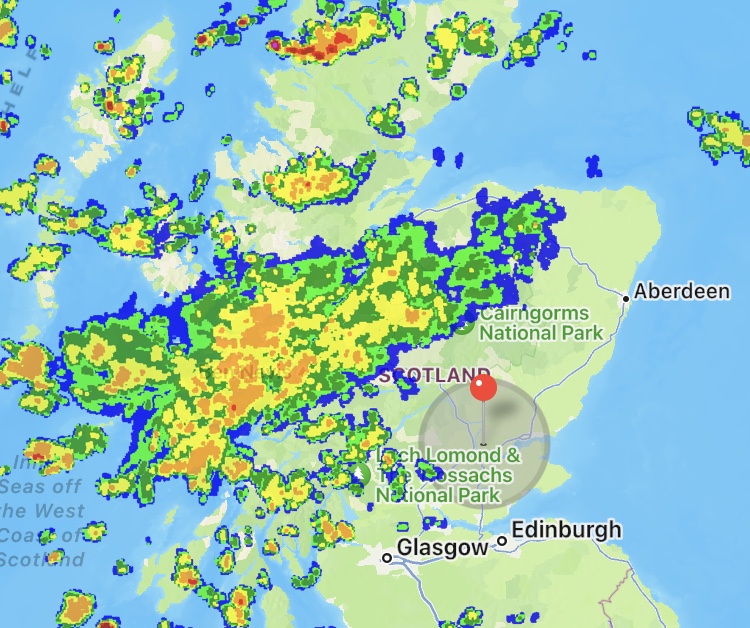
First leg was Perth to Eshott in Northumbria. As practice for the English Channel we had to cross the Firth of Forth:
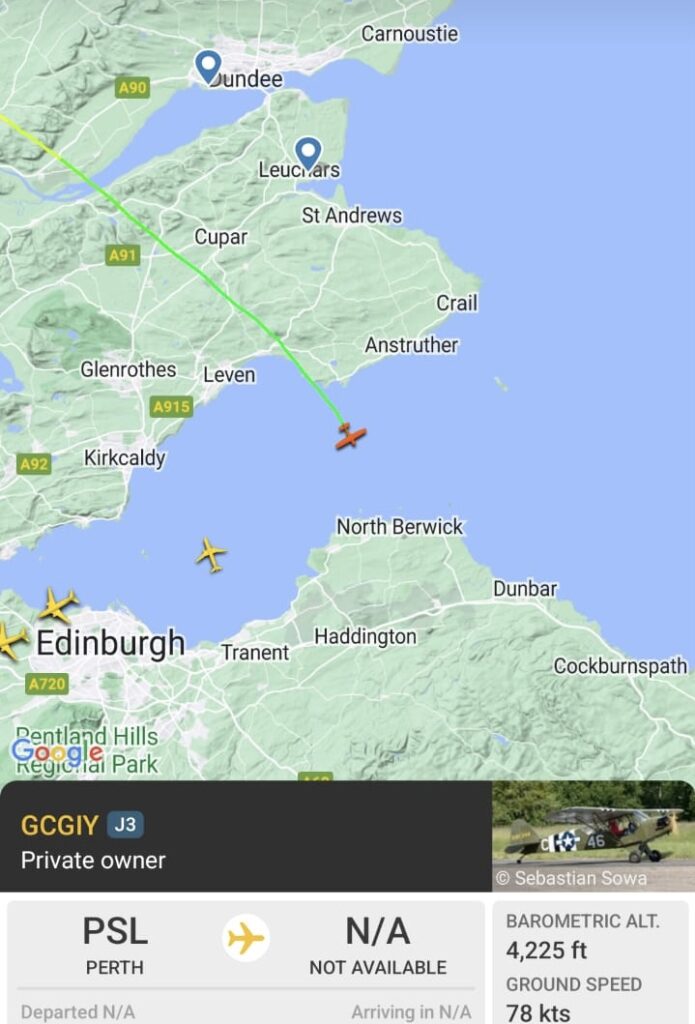
Eshott is a delightful airfield, with great service and an excellent café. Refuelling was quick and efficient:
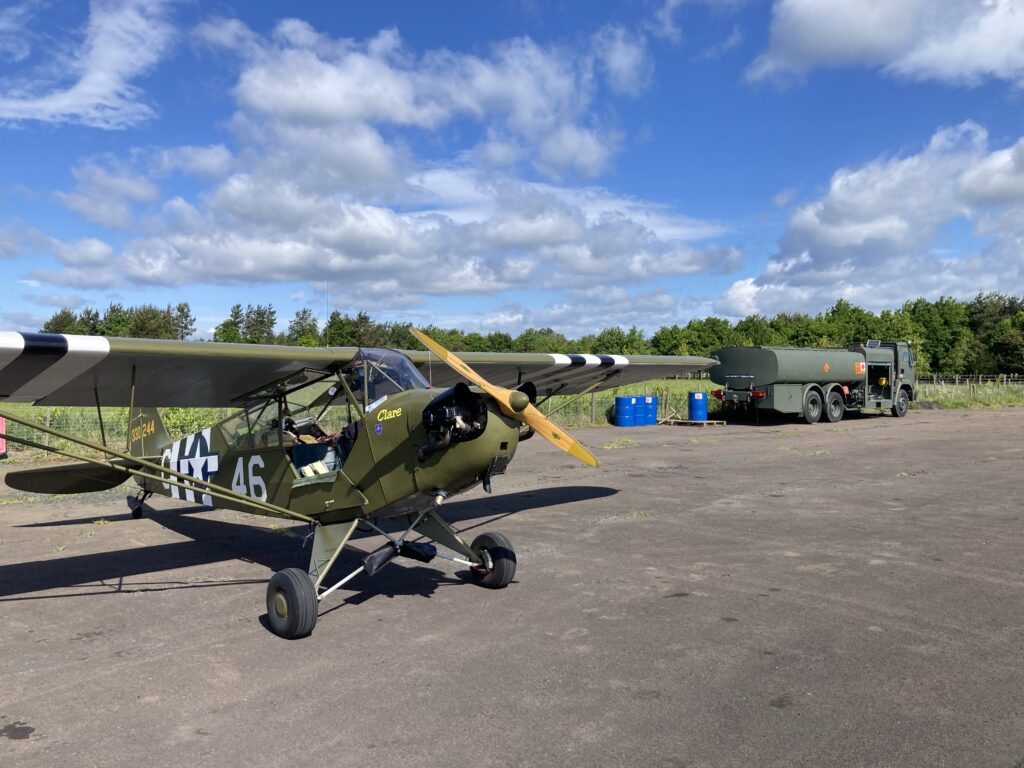
Next leg was to Breighton near Selby in Yorkshire, another lovely airfield. On the way I took a slight detour to overfly RAF Linton-on-Ouse, now disused, where the Air Force taught me how to fly jets. It’s looking a bit sad and neglected now…
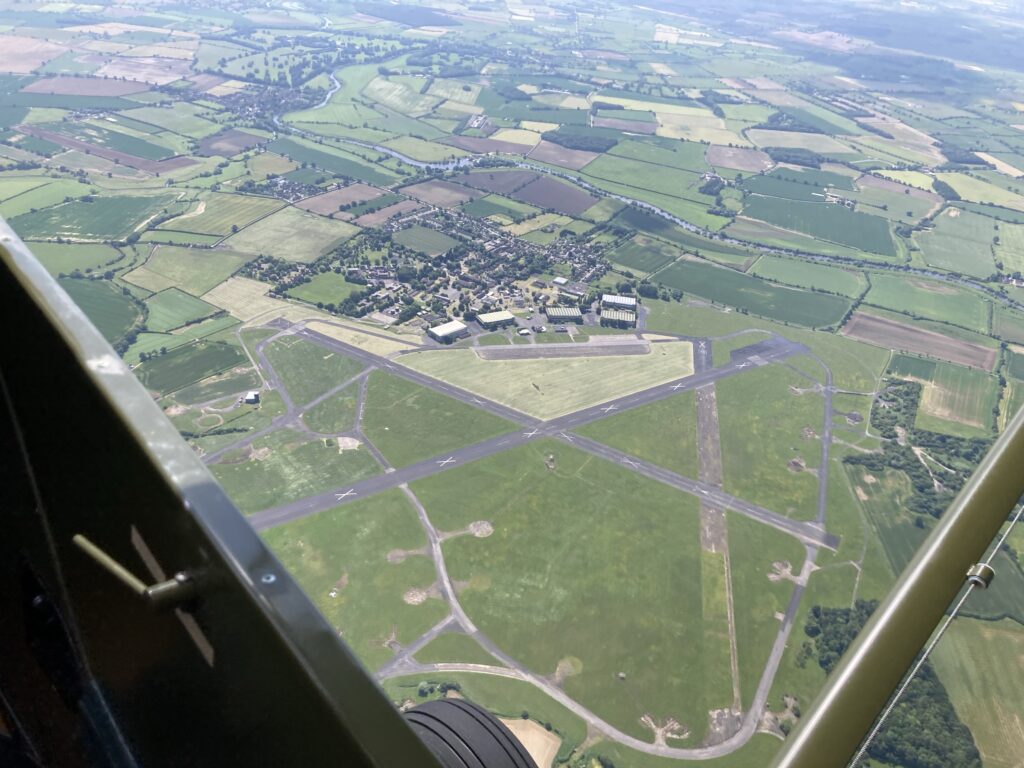
Breighton was windy and quiet, with only one other aircraft flying. I was soon parked up at the self service pumps. Such an easy process…
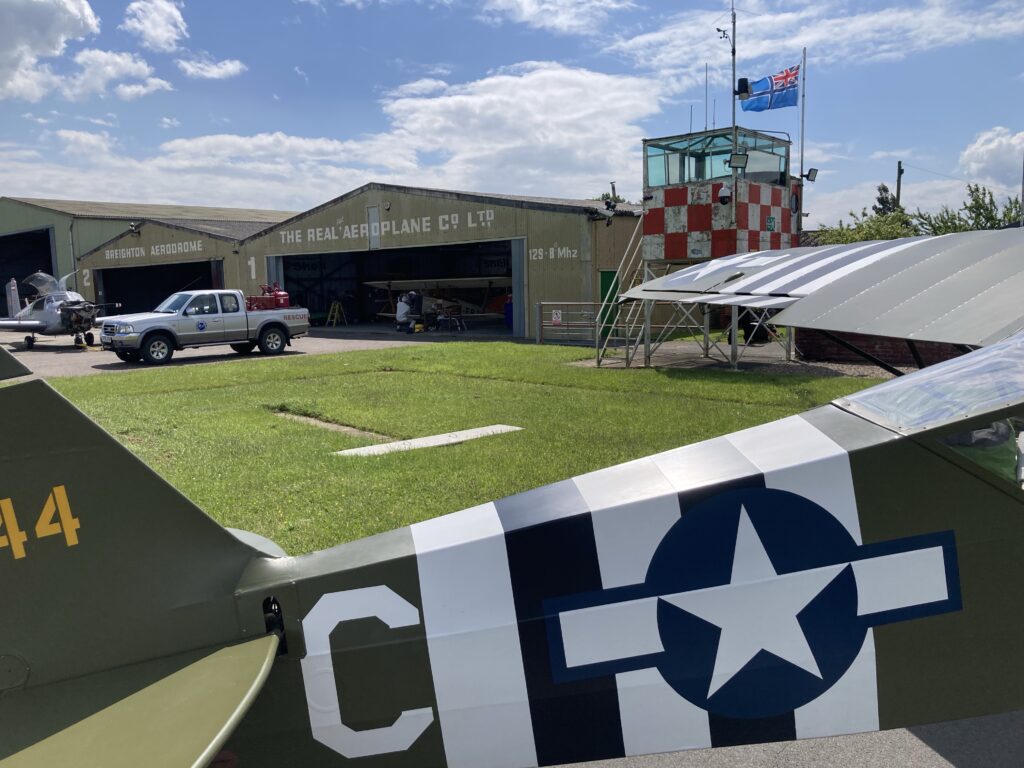
Aircraft refuelled and bladder endurance reset, we set off for Fenland near Spalding in the, well, fen lands. Nice grass airstrip with cross runways, and once again self service fuel pumps:
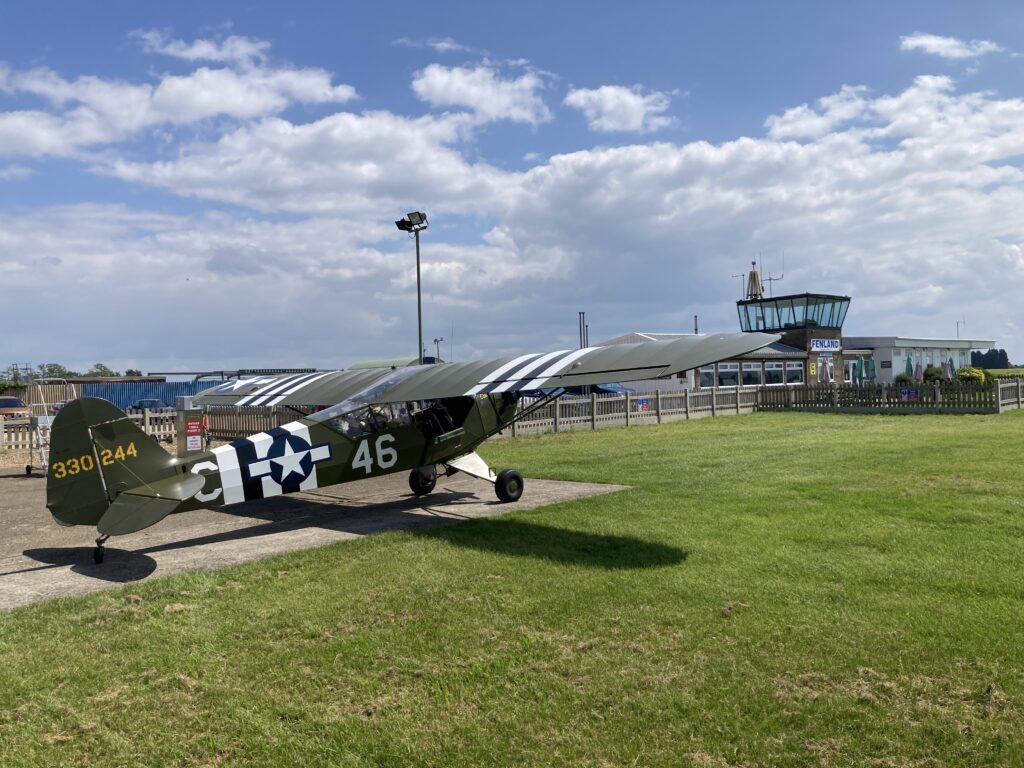
This was the fastest turnaround of the trip, just 25 minutes after touchdown we were off again in the final leg of the day, to Rochester in Kent. The superb team there helped refuel the aircraft on arrival and push it to a tie down spot on the grass:
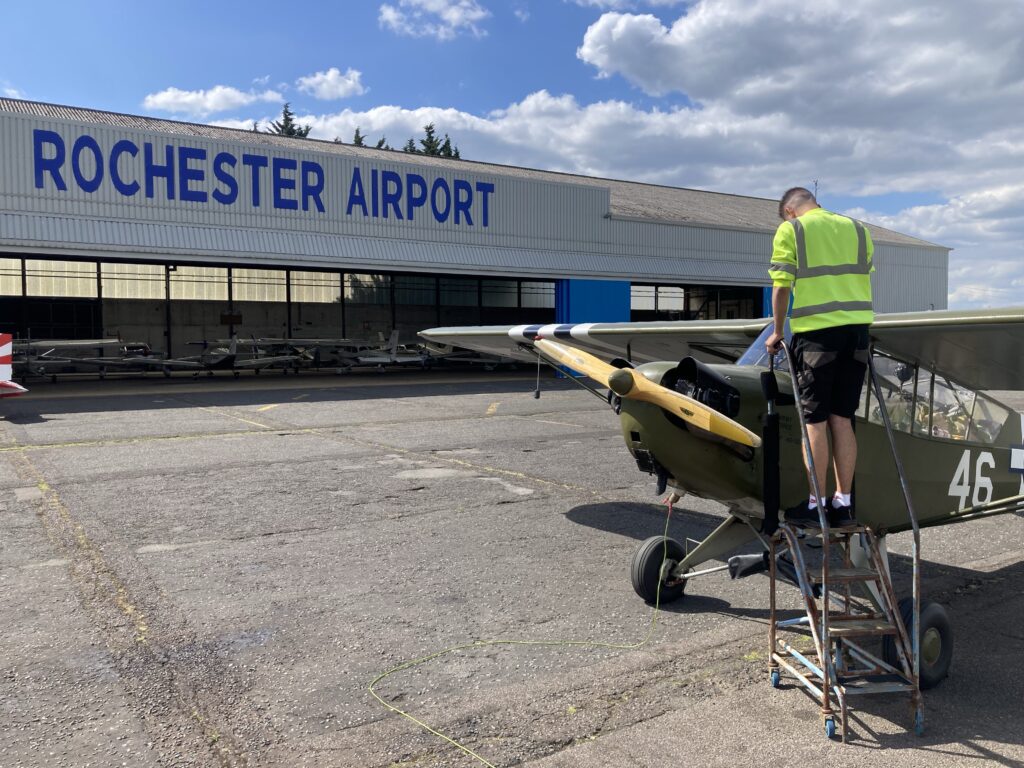
There is a Holiday Inn right next to the airfield, and that was my bed for the night. It’s a two minute walk away, and after a quick dinner I finished the planning for the crossing.
Flight plan filed and confirmed, Outbound General Aviation Report (GAR) sent to Border Force and confirmed, and email sent to Customs at Le Touquet…it was time for bed…
—————————————————-
The next morning was clear and still, a perfect day for Cubbing.
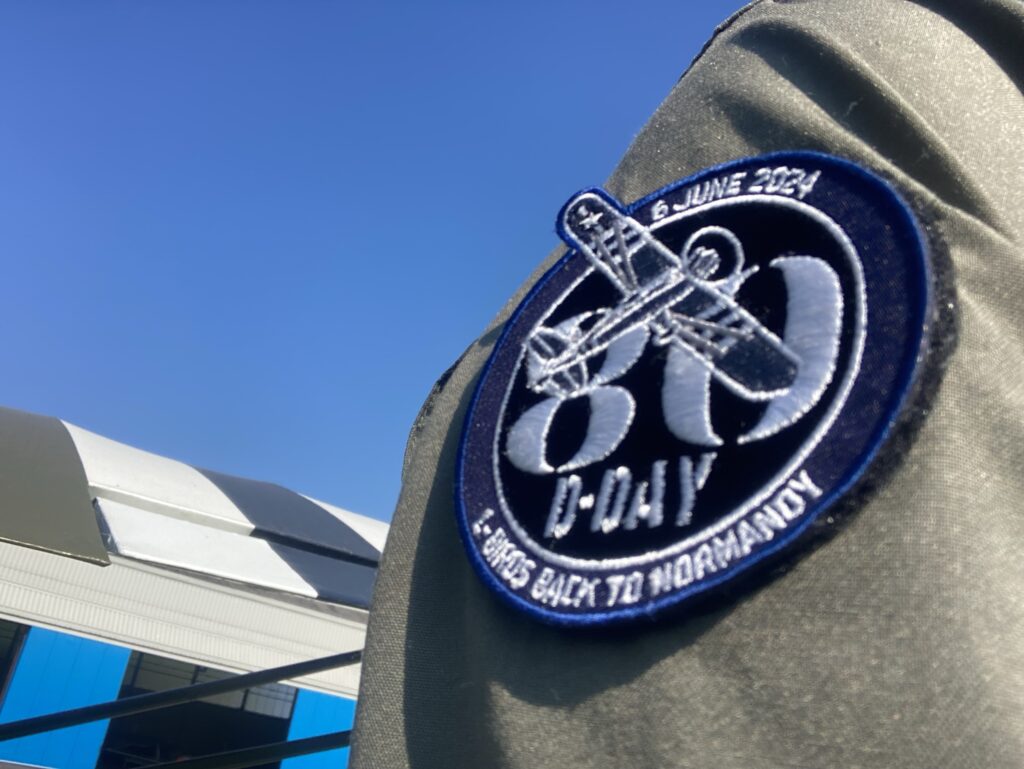
Just like on our Sting trip to Siljansnäs, Rochester opened the flight plan on take off, and after a transit across Kent, we were soon out over the water at 4000 feet. Visibility was excellent and the other side was visible for the whole crossing. I did have a Dynon D2 portable attitude indicator just in case – if it’s hazy and sunny with no discernible horizon it can be easy to get disoriented in the “fishbowl” effect. The D2 wasn’t required.
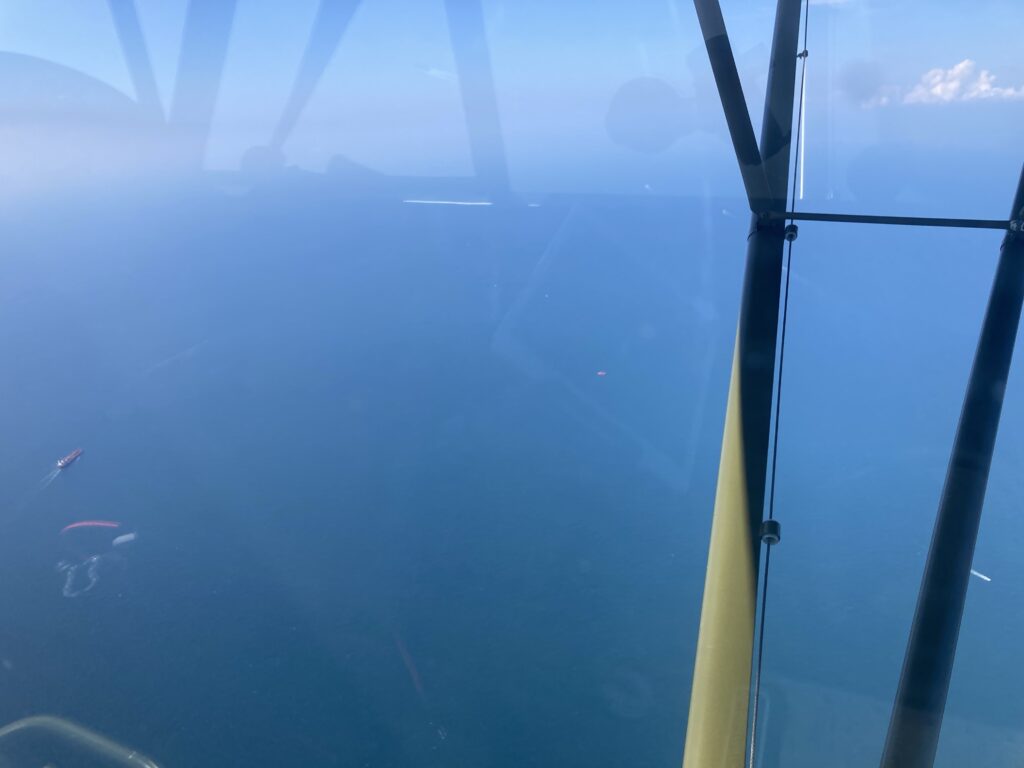
Just like last time the shortest route was used, Dover to Cap Gris Nez. Same routing this time but the difference was below us – the new danger areas, designed to segregate surveillance drones monitoring the channel for migrants:
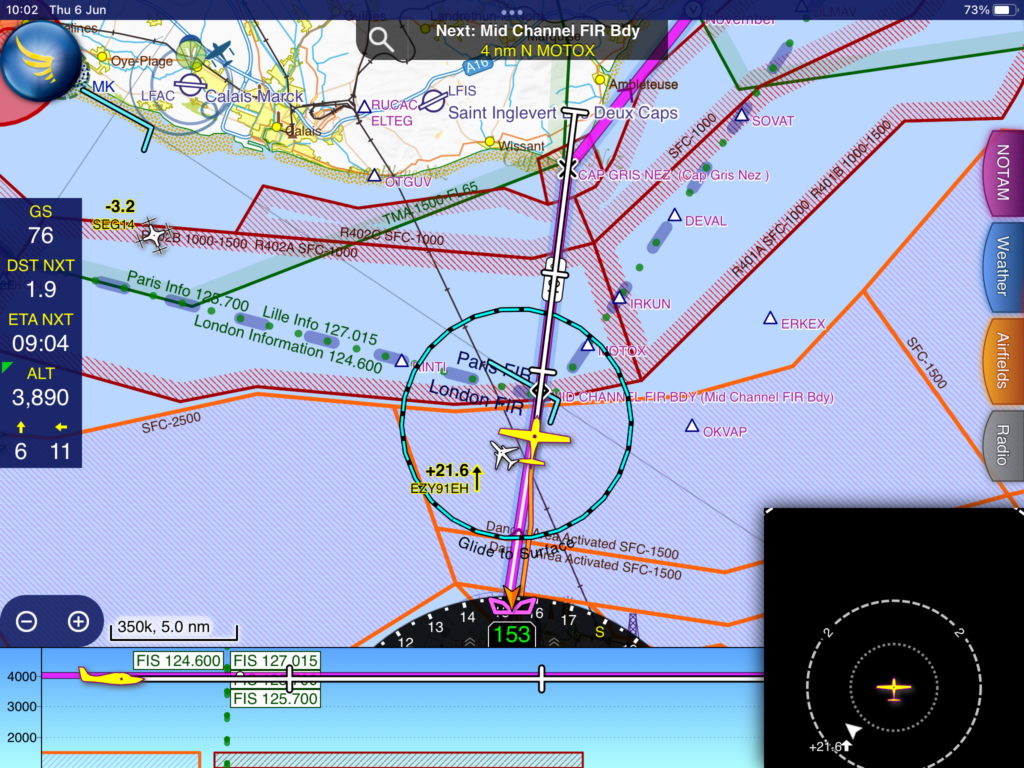
Cap Gris Nez approaching! Last time we turned left for Sweden. This time it was right for Le Touquet:
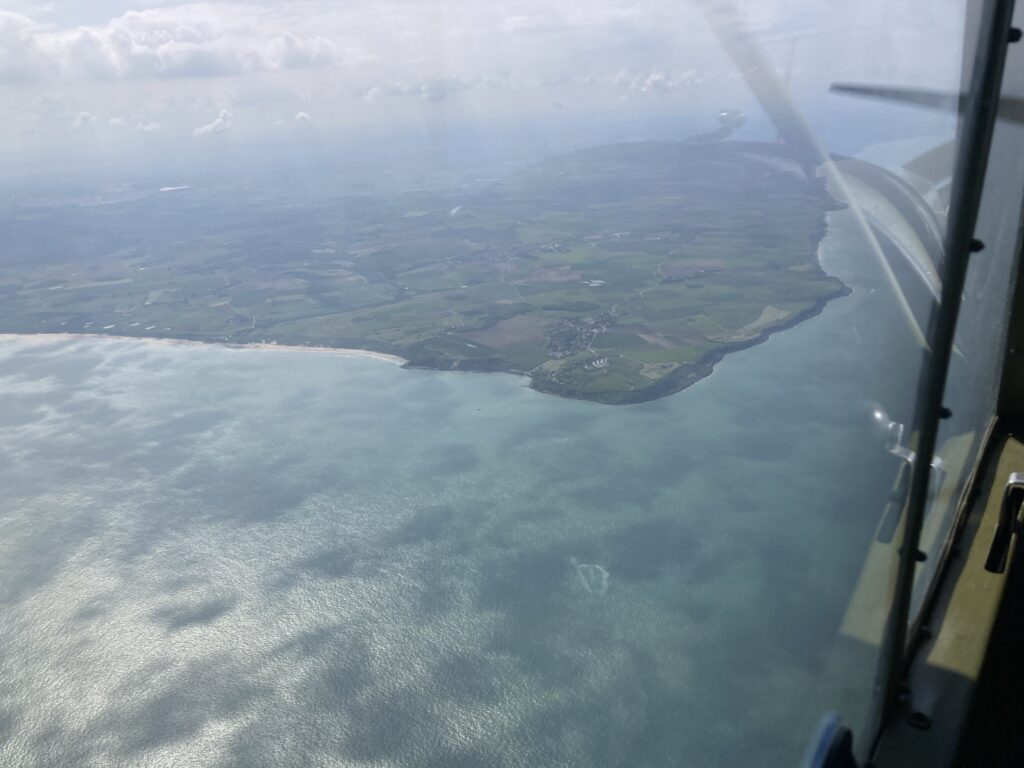
Joining downwind right hand for runway 31. Le Touquet airport is a popular destination for Brits flying across the channel as it is very easy to find and so near. Great restaurant too…and bikes for hire to get into town.
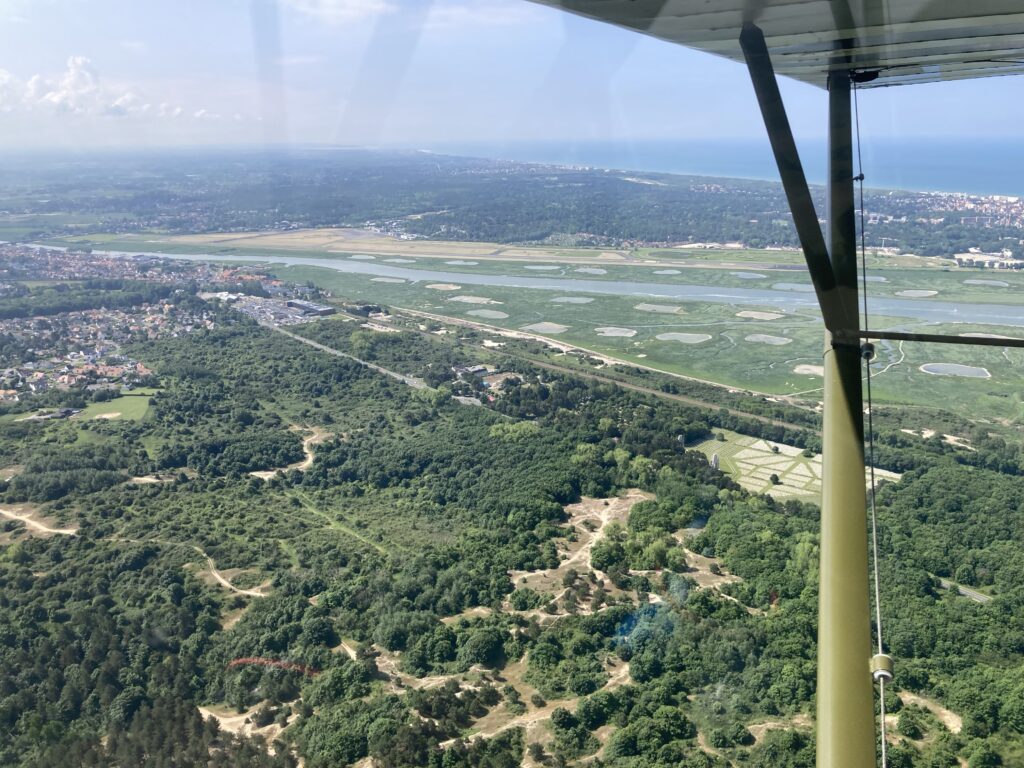
In anticipation of this trip I had arranged to get a Total card for the automated fuel pumps which seem to be everywhere in France. At the risk of repeating myself (again), automated pumps make the refuel very fast and easy:
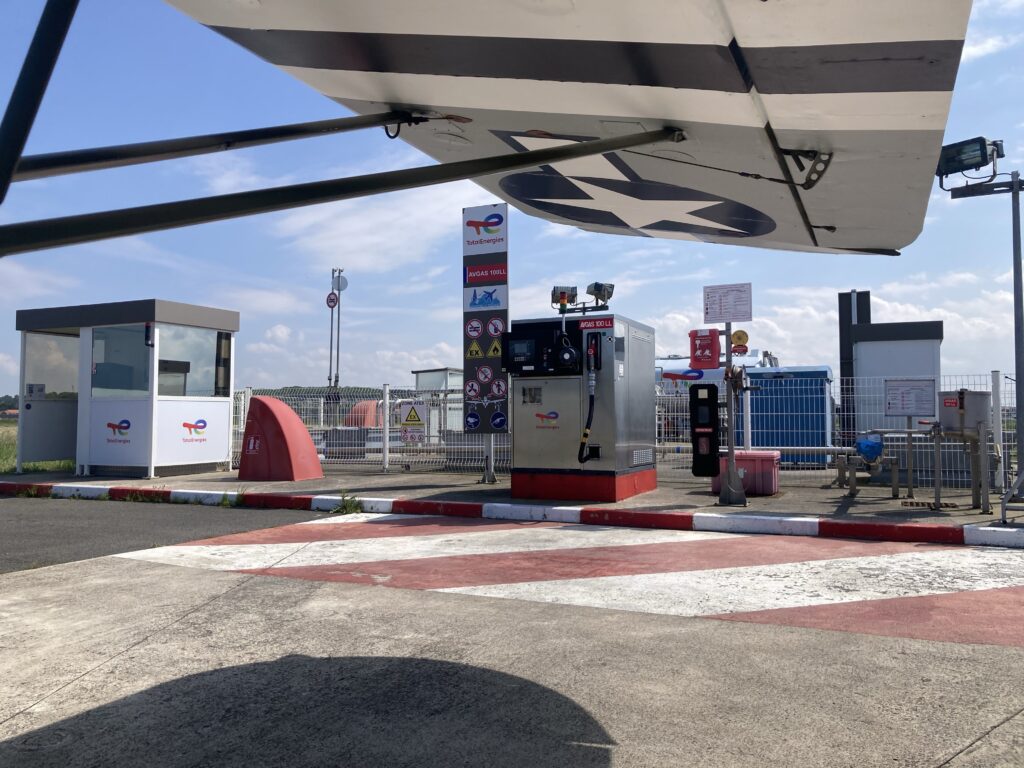
Then it was taxi to the apron and into the terminal to clear customs. The customs desk is permanently staffed and once inside, the admin desk is right there. They take your landing fee, sell you a France Nord-Ouest chart if you don’t have one (I didn’t) and also rent out the bikes…
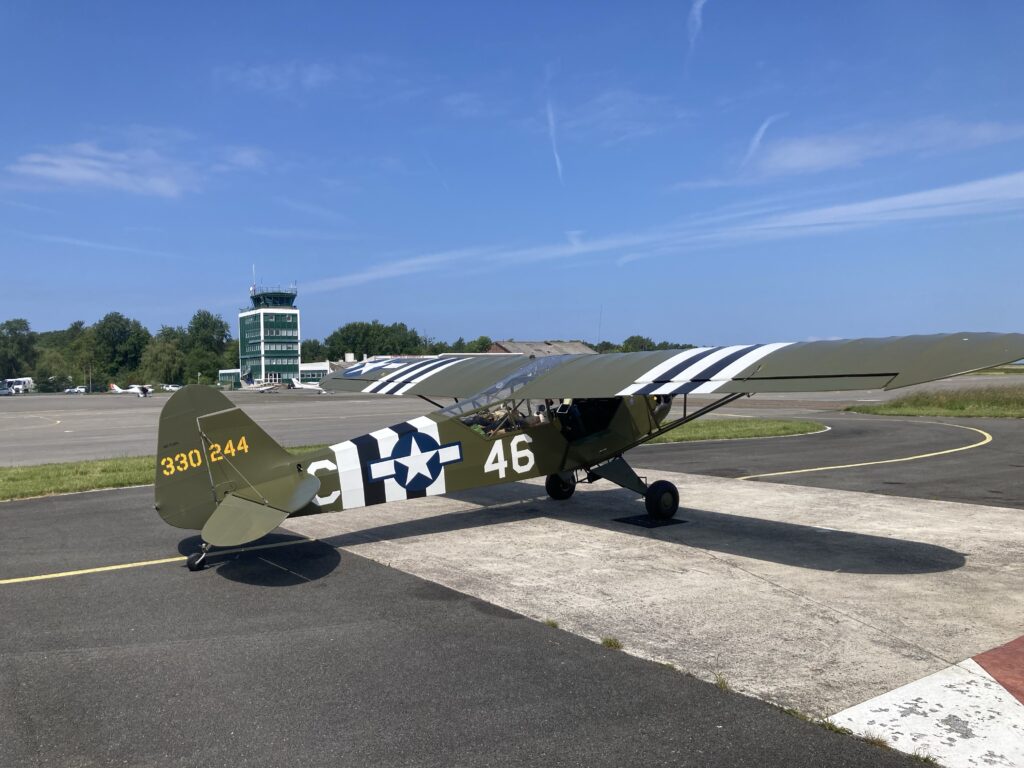
In September 2022 it was announced that the airport would be renamed “Le Touquet Elizabeth II“ in honour of the late Queen. Next time I’ll buy a patch…
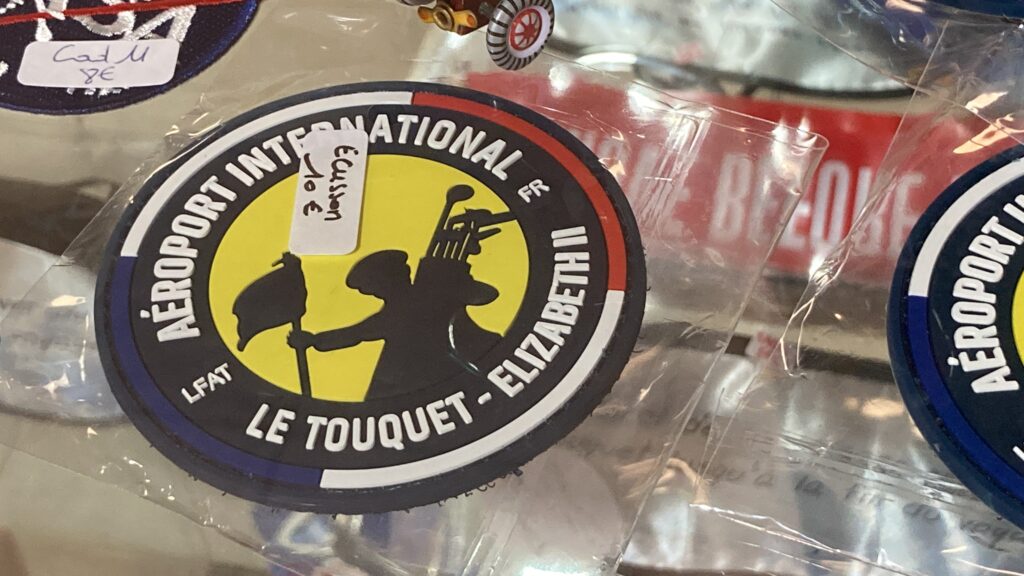
Airborne again, heading southwest towards St-André, passing the Baie de Somme. I think these pools are to do with salt extraction? I noticed some on the way into Le Touquet as well. Not sure…
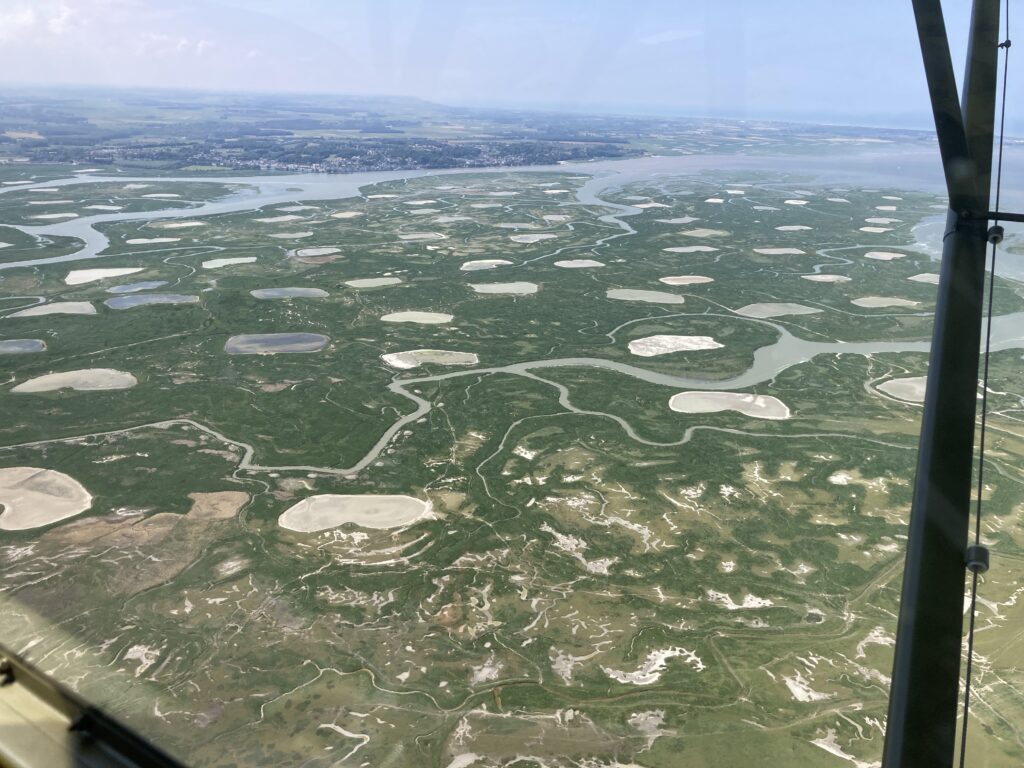
Inland now, we crossed over the Seine to the southeast of Rouen:
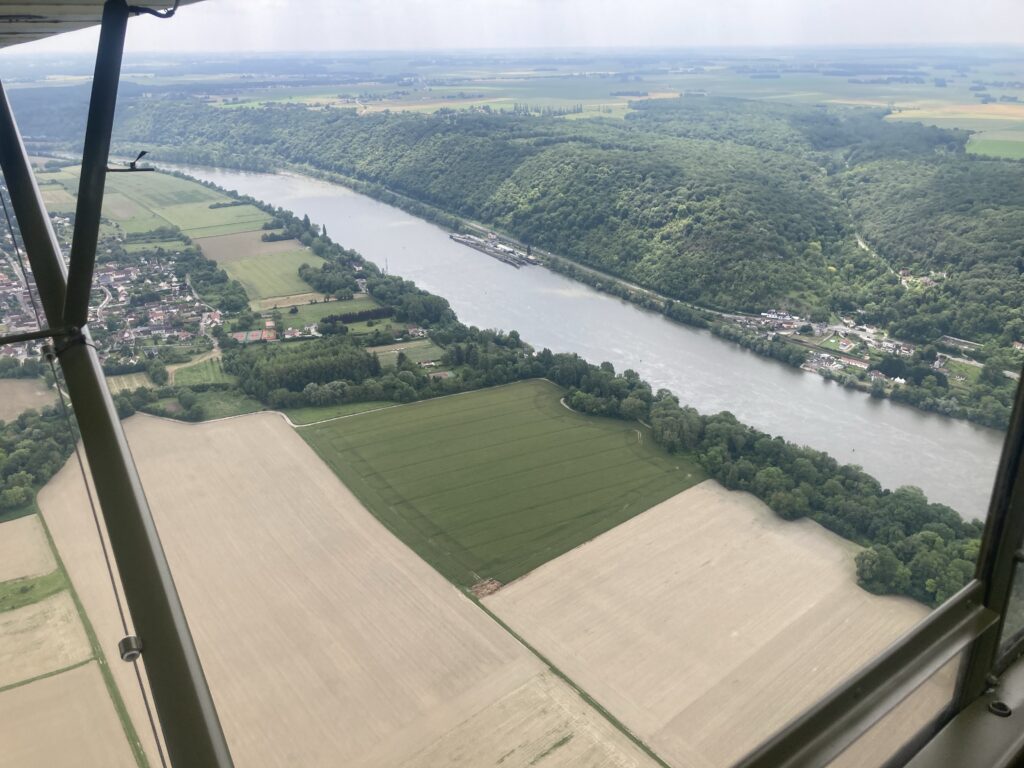
After the Seine, only about 30 miles to go. I reflected that the Cub and I had just crossed the channel on 6 June, just like thousands of aircraft and personnel 80 years ago to the day.
The radio was quiet as we approached Saint André de l’Eure. Then somebody called in French. The airfield was NOTAM’d to be reserved for L-Birds only with English on the radio so I wasn’t expecting that! I dug out my French radio calls crib sheet and made a stab at announcing my attentions, joined the circuit and landed.
Once clear of the runway, I was directed to park on the grass to let two Cubs out from the pumps, and then got refuelled (good old automatic Total pumps) and parked back on the grass:
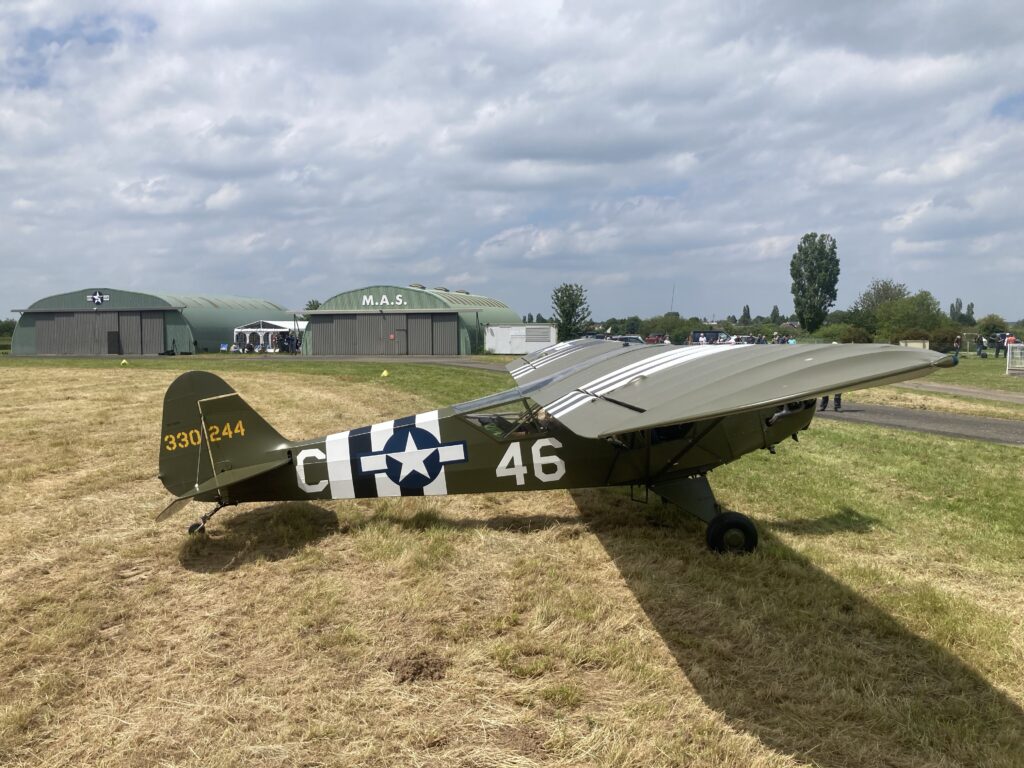
But where the hell was everybody..?
D-Day 80 Part 1 – Weather Delays…
Finally retired and on permanent holiday, it was time to take the L4 Cub on an epic adventure. The 80th anniversary of D-Day would do nicely:
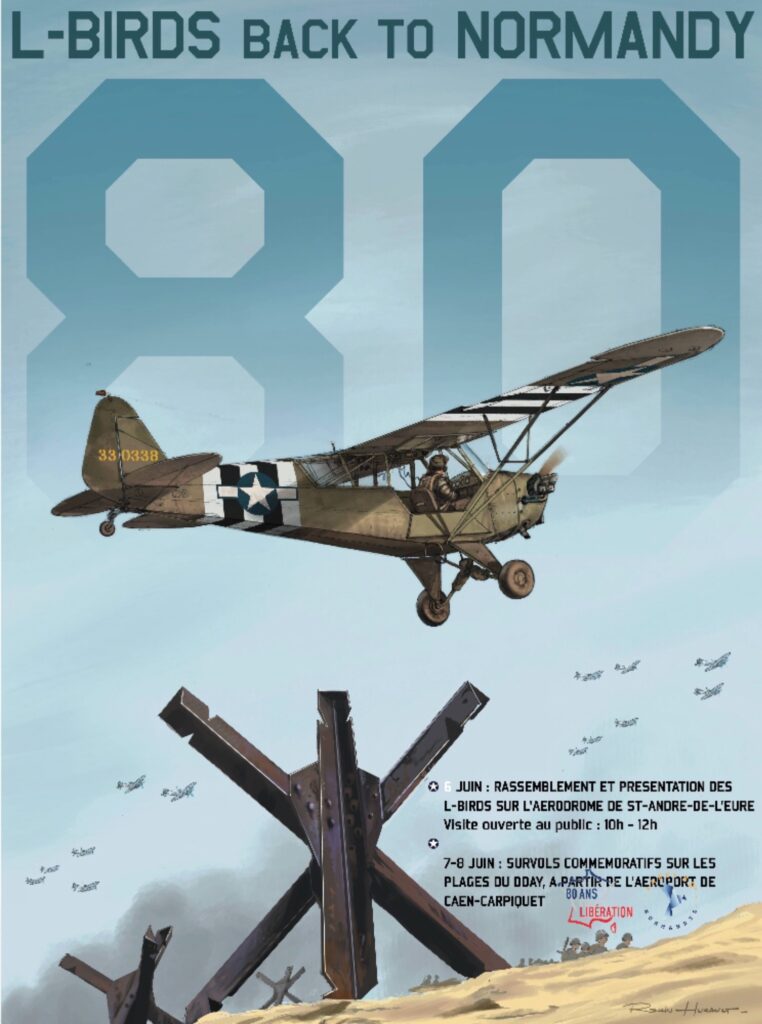
I wanted to fly down in stages, taking it easy and not pushing too hard. Due to the D-Day invasion area airspace being closed on the big day, 6th June, the plan was to assemble that day at Saint-André-de-l’Eure airfield (LFFD) near Évreux, and then fly the beaches on the 7th. The airspace restrictions would still be in place, but Macron, Biden etc would be long gone and we would be allowed in. Maybe…
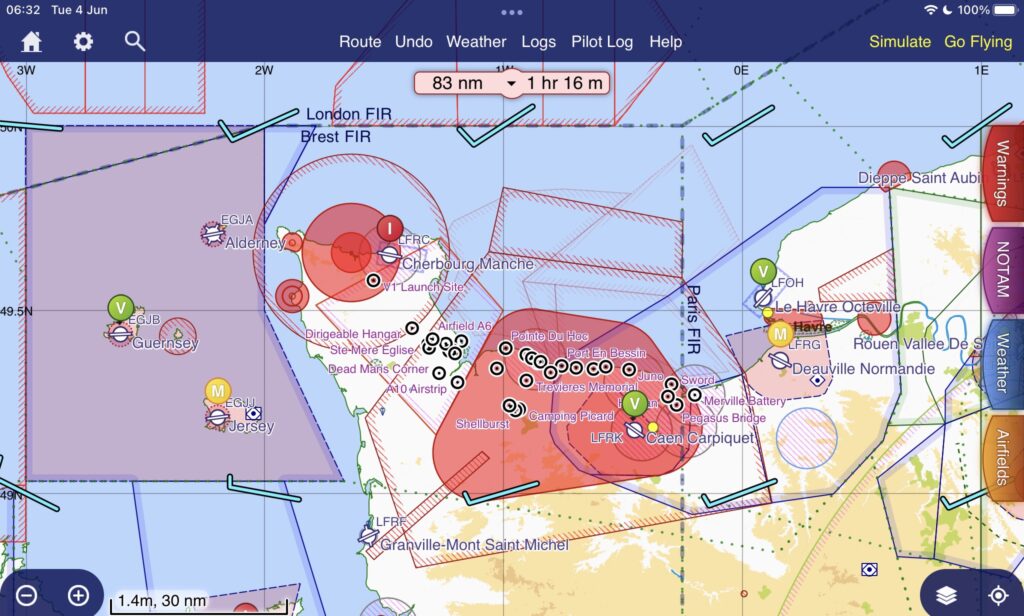
The team at “L-Birds back to Normandy” did a huge amount of work in the weeks leading up to the event; in order to get accreditation from the prefecture we all had to send passport details, licence number, medical certificate, shoe size, favourite colour and mother’s maiden name. Also payments for the hotels in Évreux and Caen.
Our plan was to start on the 4th, a couple of gentle days down the UK, then cross the channel and get to Saint-André on the 6th. The weather had other ideas – while France looked lovely, Scotland was forecast to be pretty dire…
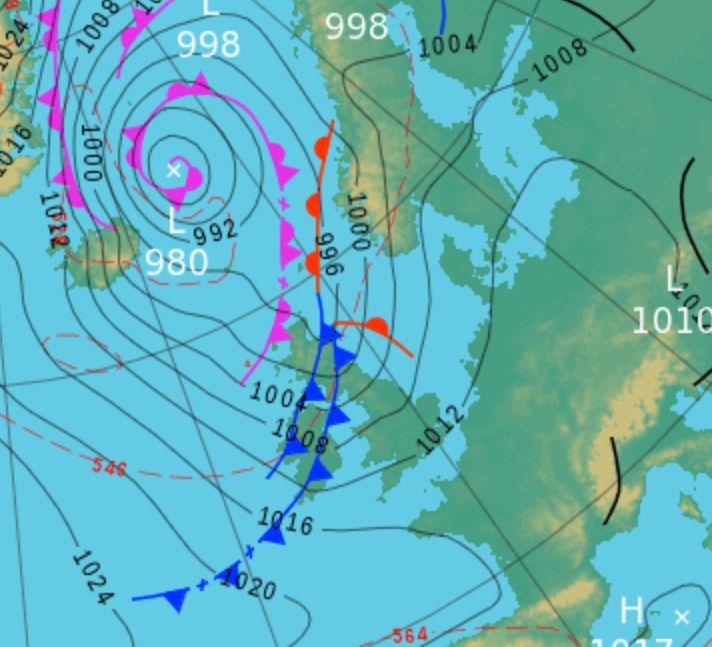
I woke on the 4th to howling winds. The automatic weather station at the airfield reported a gust of 55 knots at about 0700, with strong wind warning in force:
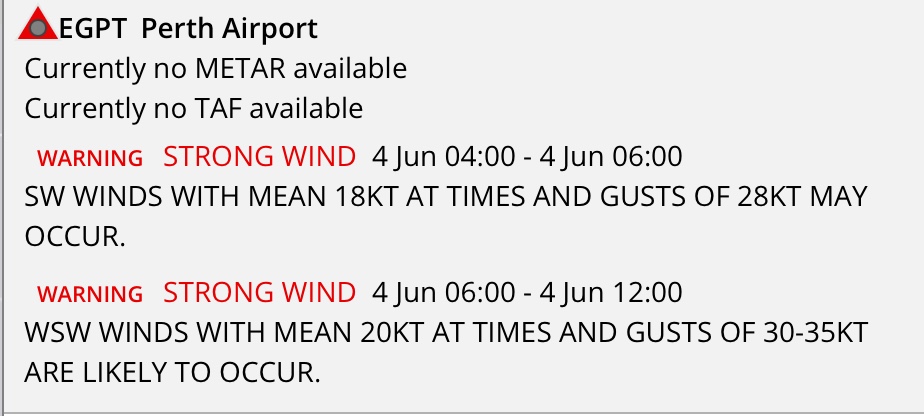
The radar showed well-defined fronts with intense returns, but in between was clear. The fronts were moving in the direction I wanted to go, so there might have been a mobile gap to fly in…IF the winds dropped.
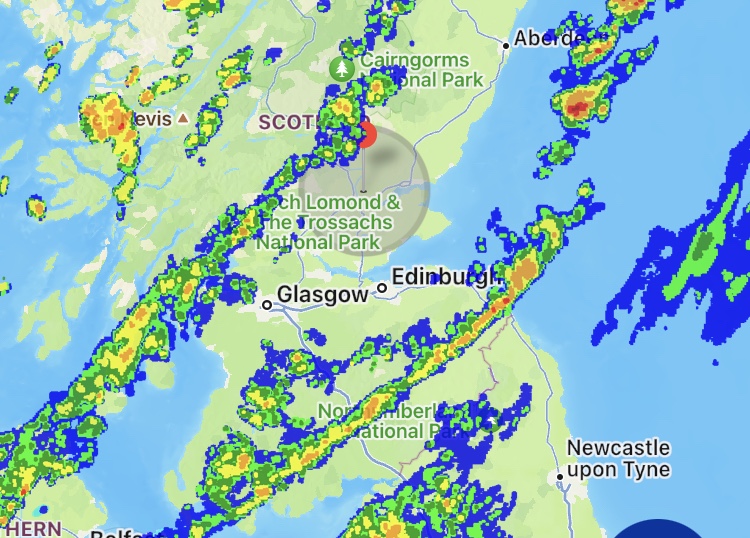
The winds didn’t drop. I stood in the hangar listening to the roof rattle and gave myself until 1400 to decide. It stayed wild as the time approached…and I decided to can it for the day. It would mean that I would have to fly the whole length of the country on the 5th to catch up, but that was workable…just.
Cancelling also meant that Brenda had to drive back to the airport to pick me up, but by doing it before 1400 I was able to cancel my hotel at the half-way point with no penalty, so there was that one slight ray of sunshine…
D-Day itself was postponed by 24 hours due to wild weather in the channel, so the trip was already quite realistic. If all went well, I’d be crossing the channel on the 6th, just like the thousands who made the same trip 80 years ago.
The 5 June simplified weather summary from the Mountain Weather Information Service showed wind but not as bad, and a tailwind for the southbound flight to Rochester, with improving weather all the way:
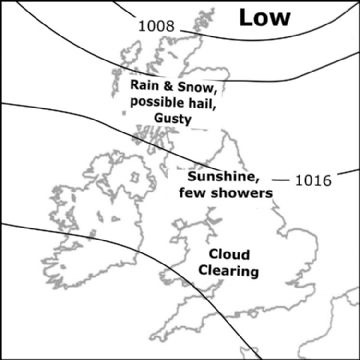
We went to bed hopeful…
Clarrie-T
The plan for the 80th anniversary of D-Day coming up next month is to meet up with a lot of other liaison aircraft in France and fly in formation along “Les plages du Débarquement”, as the Locals call the invasion beaches.

The cowling of the Cub looked a bit bare. Some of the ones attending have names and nose art. No time left to get fancy artwork, but we should at least name the aircraft.
After a lot of thought and many rejected ideas we agreed on “Clarrie-T”. This was my Mum’s nickname as a teenager in 1944, when she was 14 years old.
I sent off for the vinyl graphics but unfortunately I got the dimensions slightly wrong. It didn’t fit. All the letters were there so we just went with “Clare”, Mum’s actual name…
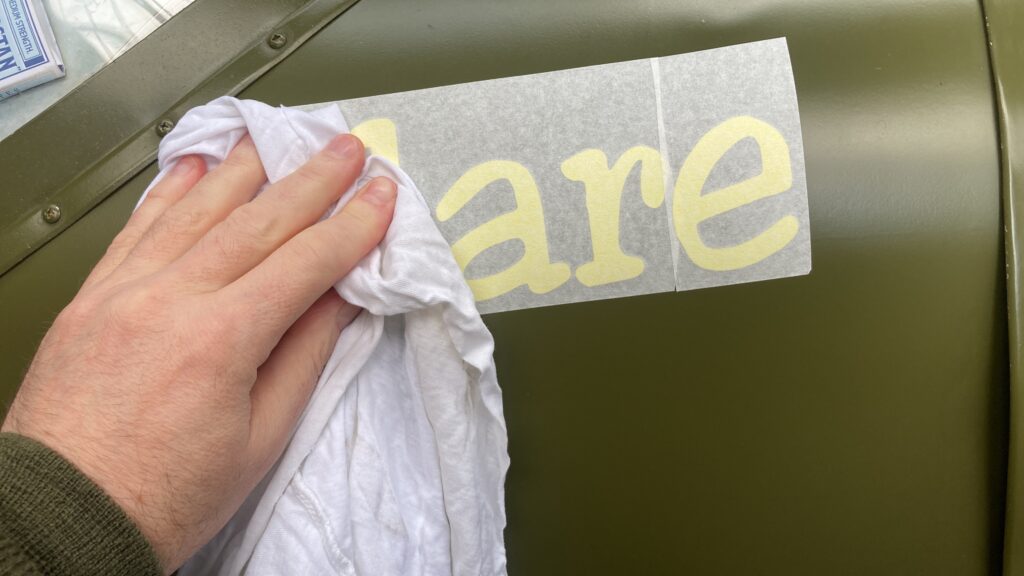
The process was quick and easy.
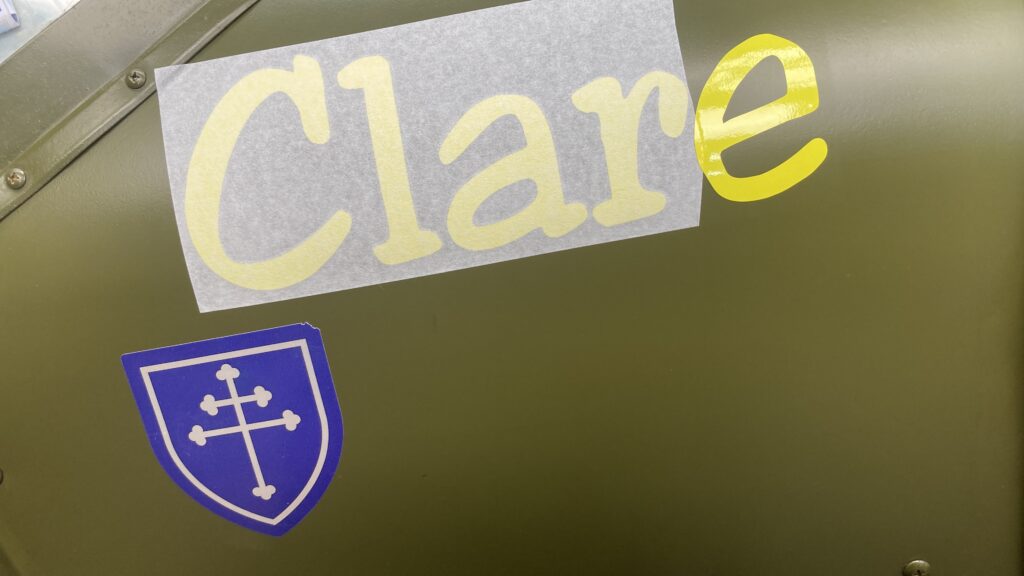
And the finished product looks pretty good:
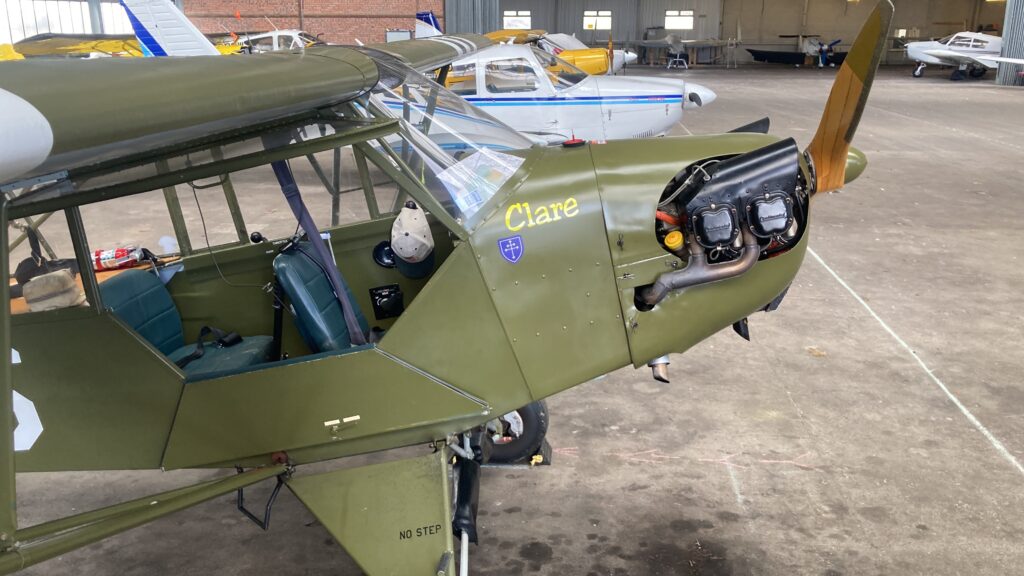
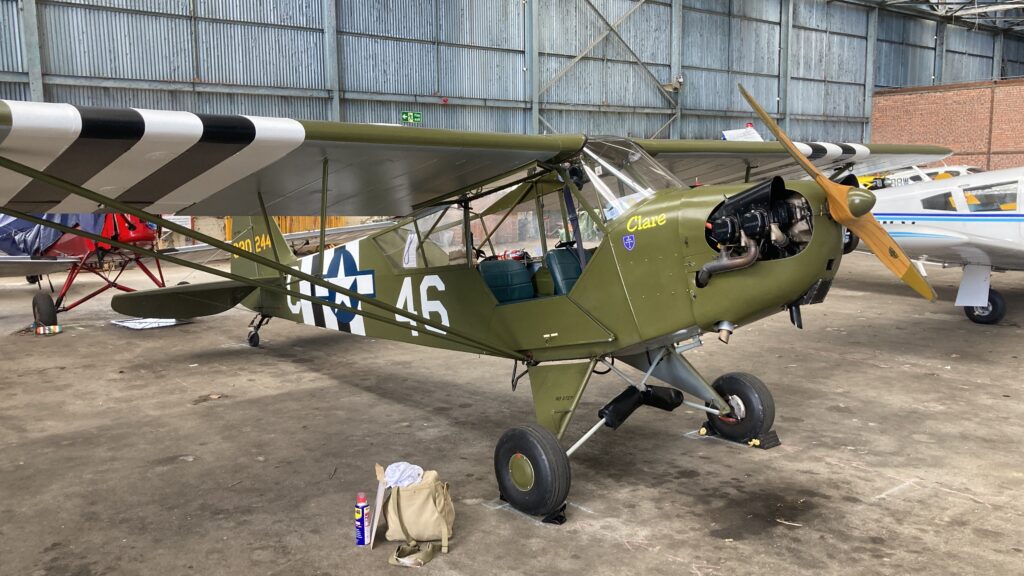
Mum’s name is already on the side of an RNLI lifeboat, and now she’s on an aeroplane too.
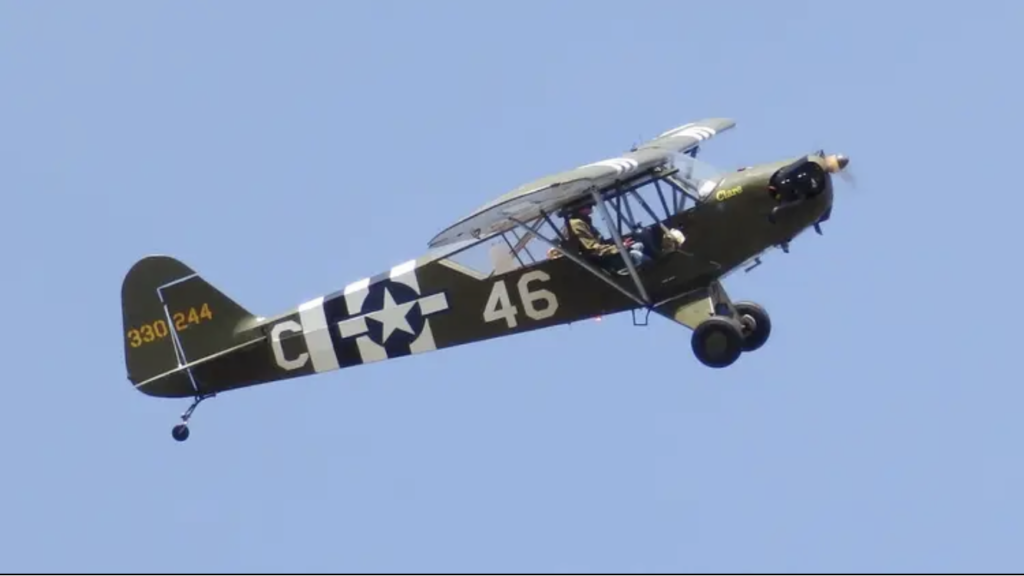
Her first outing was to Kirriemuir airstrip in Angus, for the second fly in of the year. The first was in January, this one was a lot hotter!
The photographers were out in force and got some great shots:
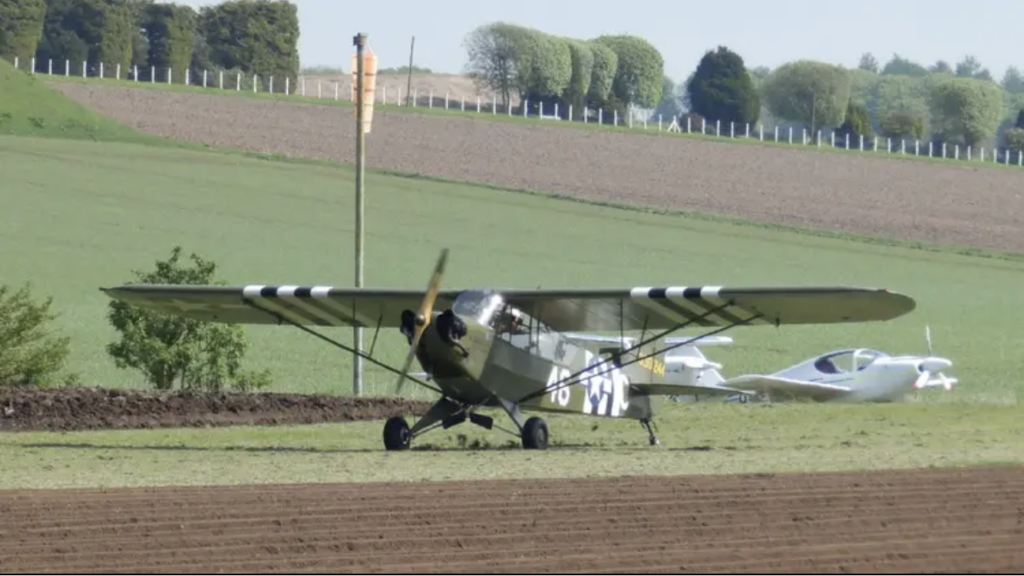
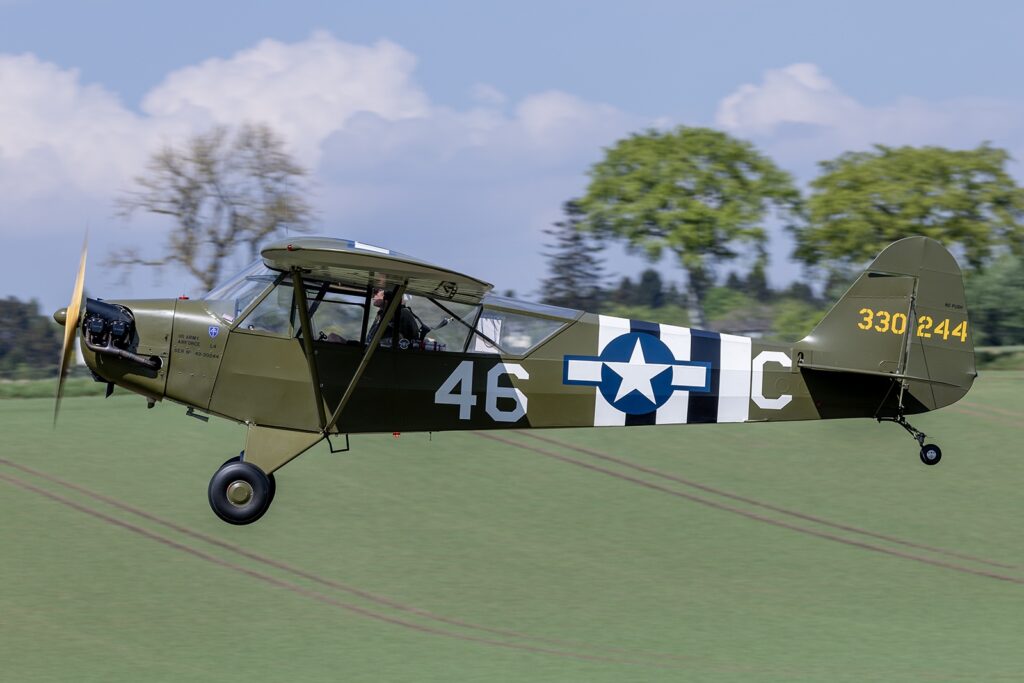
…and this last one, my favourite. I managed to take off cross-controlled (deliberately-honest!) and they got the left wheel low wheelie perfectly:
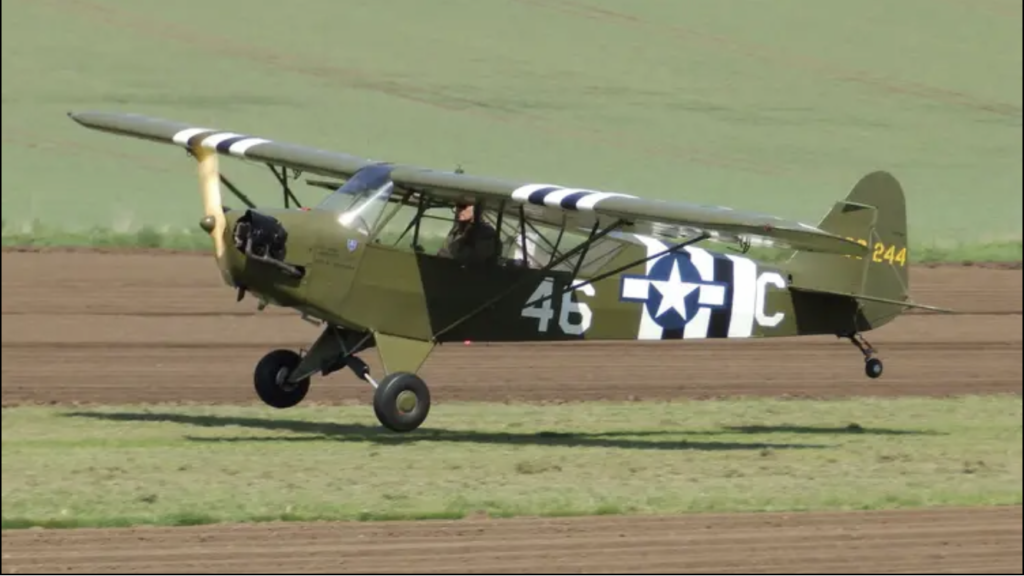
In less than two weeks, we should be flying along the D-Day beaches. But first, it’s time to retire from helicopter flying. Only one shift left on the air ambulance. Sadly it’s an age thing, 60 is the age limit for single-pilot public transport flying. I identify as a 44 year old but the UK Civil Aviation Authority aren’t having it.
This little clip should encapsulate the next couple of weeks:
Hoping for good weather! Report to follow.
Spring Cubbin’
Some spring Cub photos, in between the rubbish weather portions…
Sunny day:
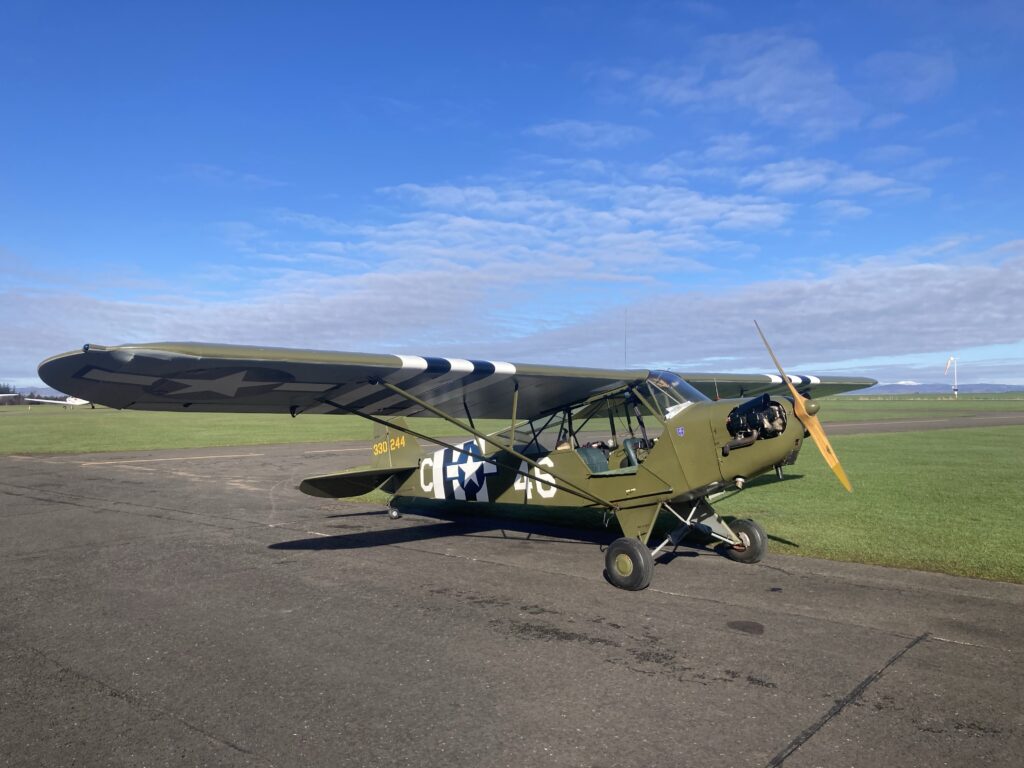
Grey day:
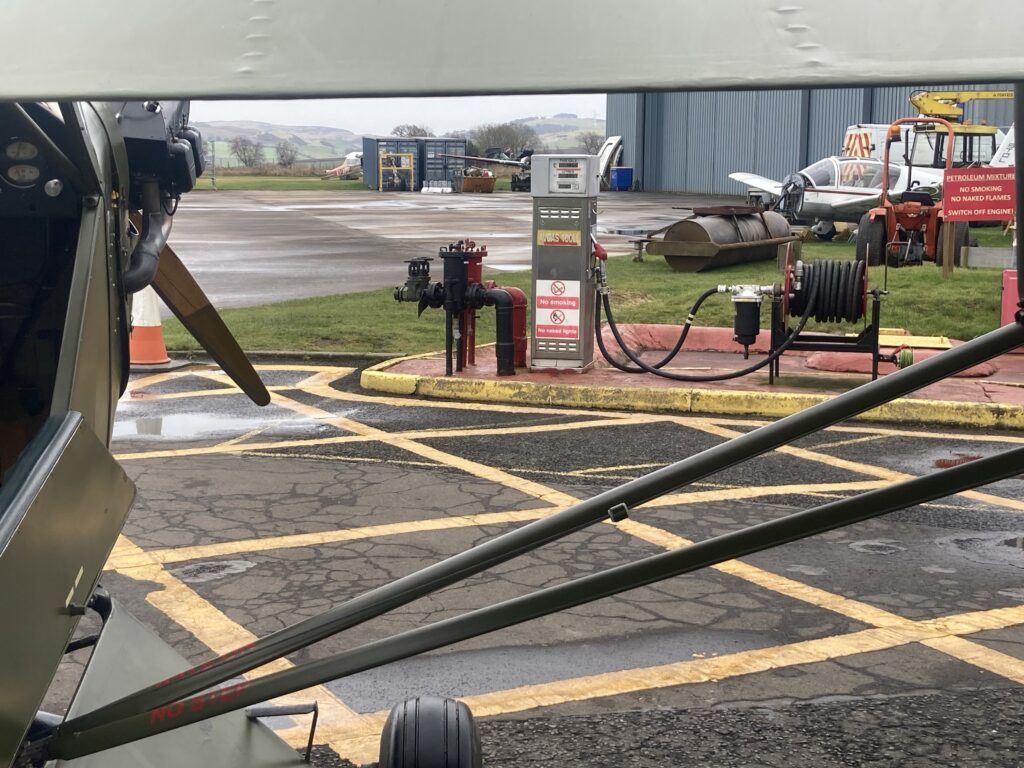
Our favourite river confluence. Clear water from the mountains, muddy water from the fields:
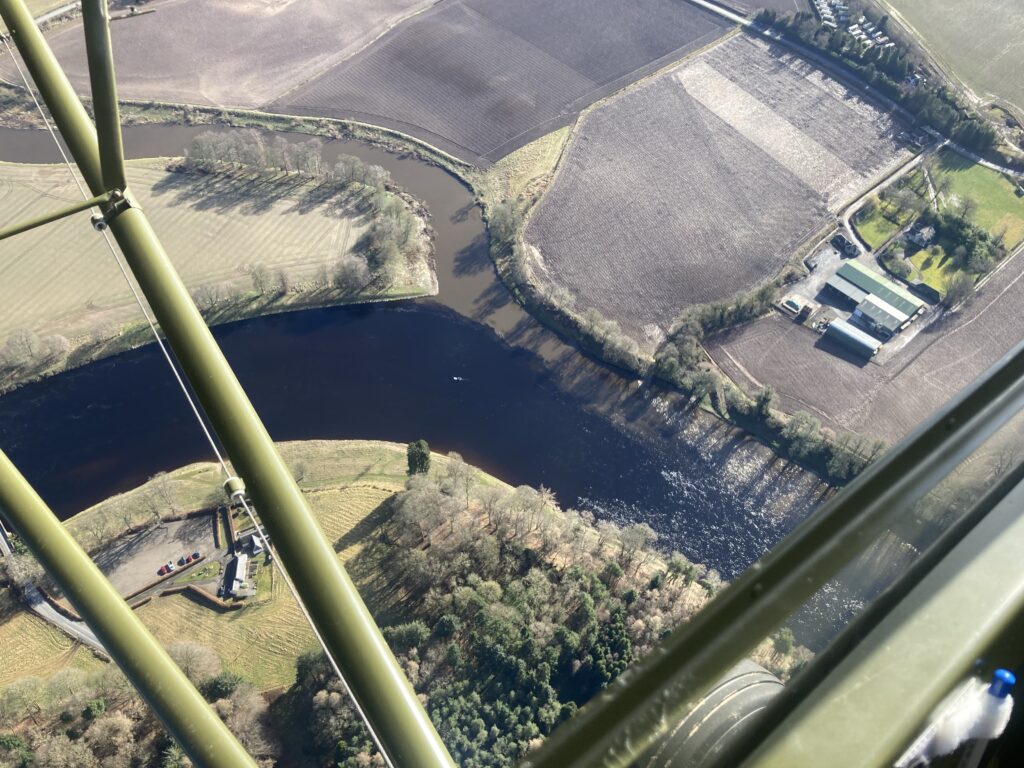
Recce flight over Perth, checking the harbour…
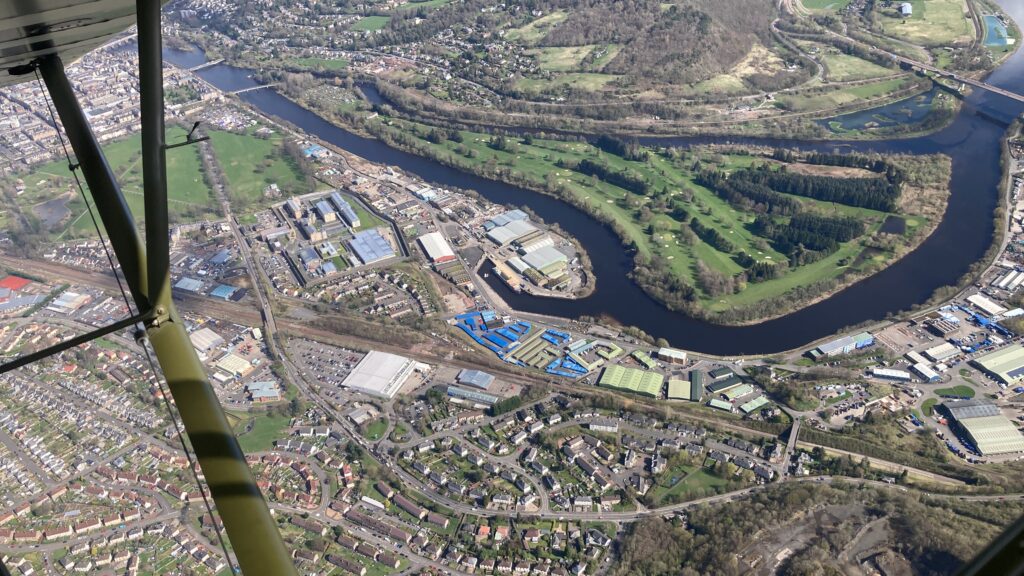
The ship was IN!
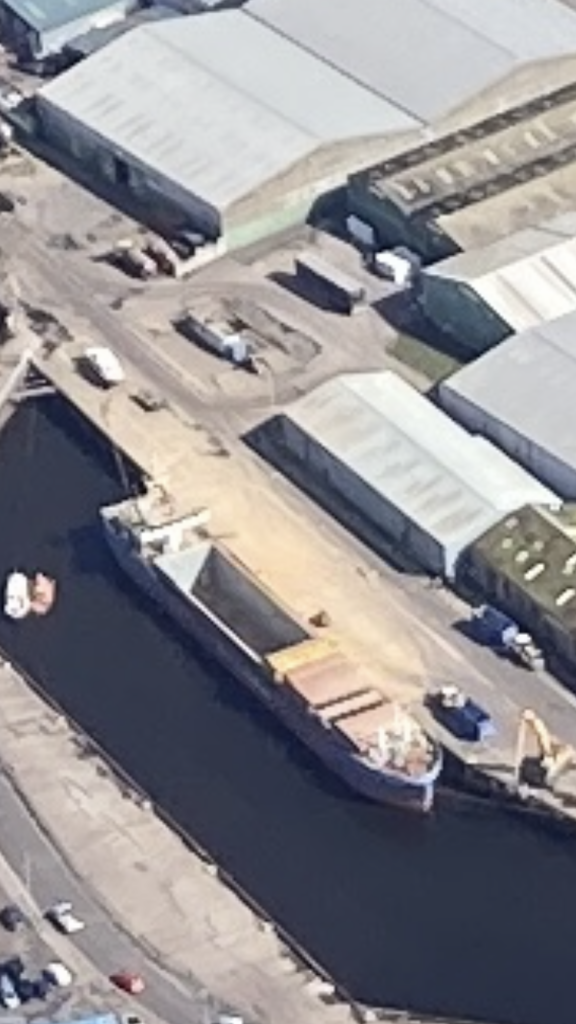
Checking out the progress of the new Tay bridge north of Perth:
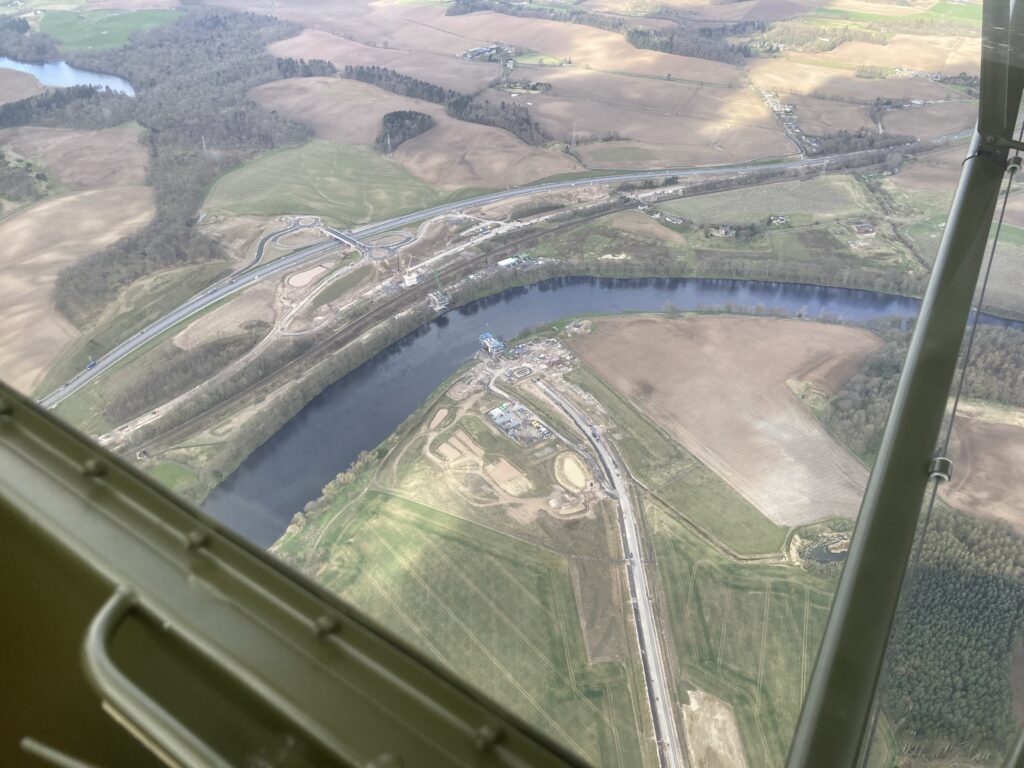
The remains of the spring flooding:
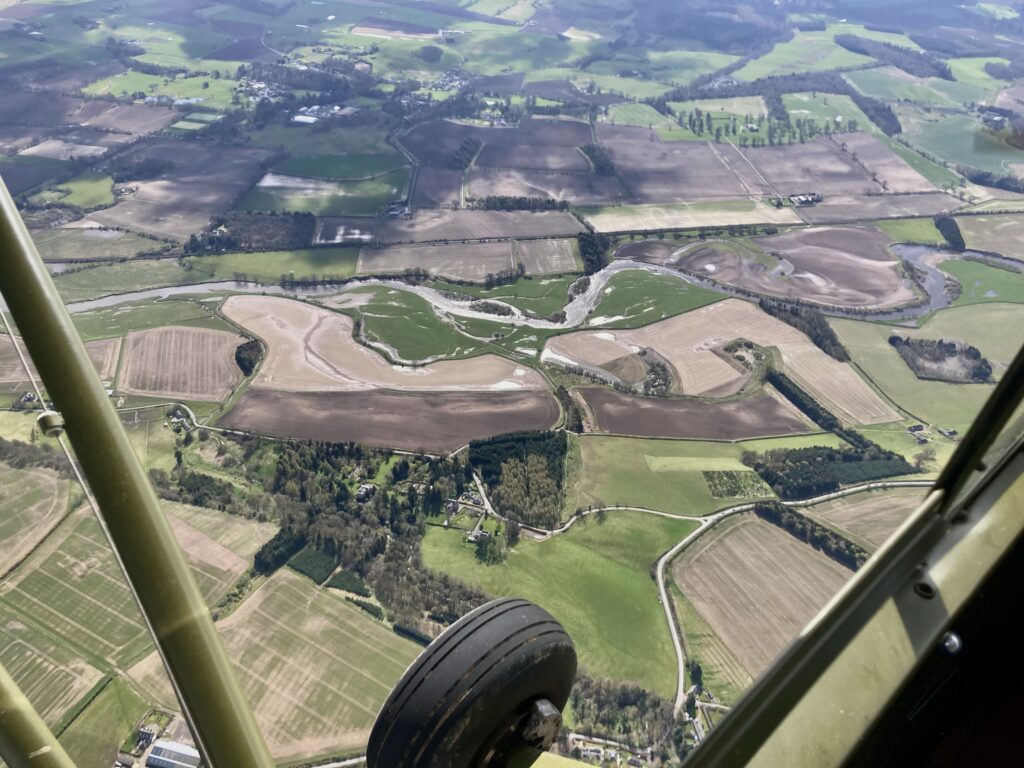
The airfield is still a bit soggy, not yet fully dried out. At the time of writing, the grass runway has only just been reopened…
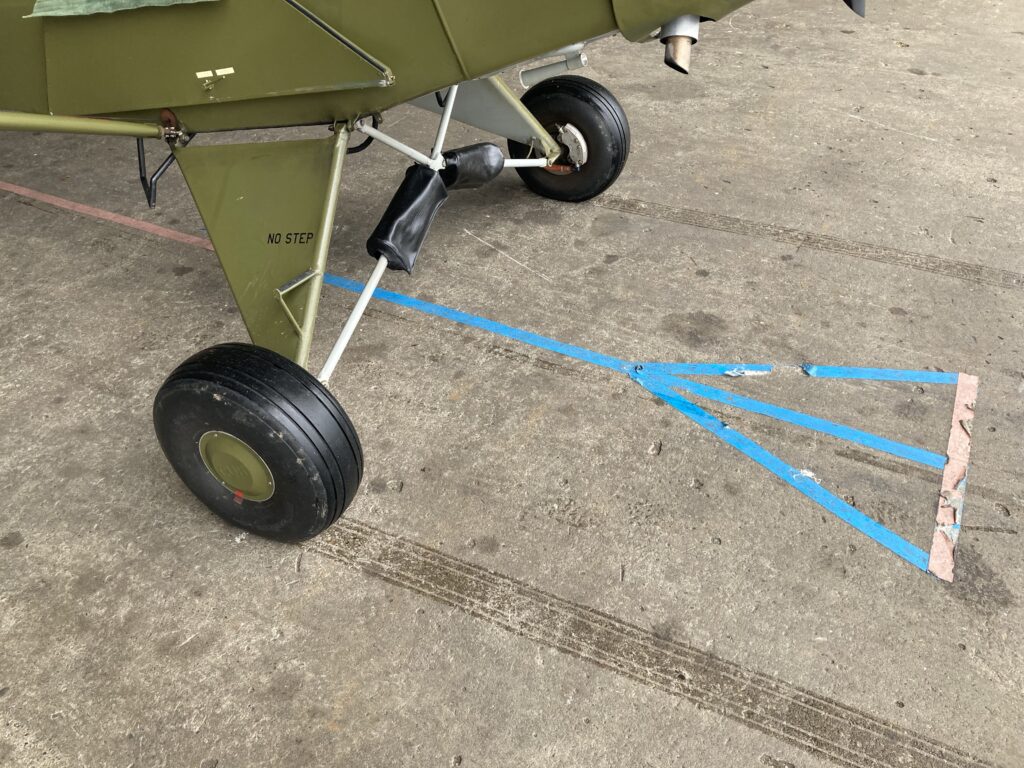
A typical spring weather outlook…!
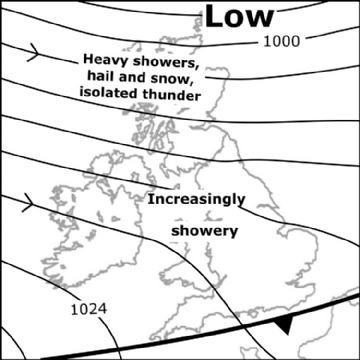
Not to worry. Summer is coming and we are planning to fly to France for the D-Day 80th anniversary “L-Birds back to Normandy” event on 6 June. The “cockpit litter” has already been loaded…
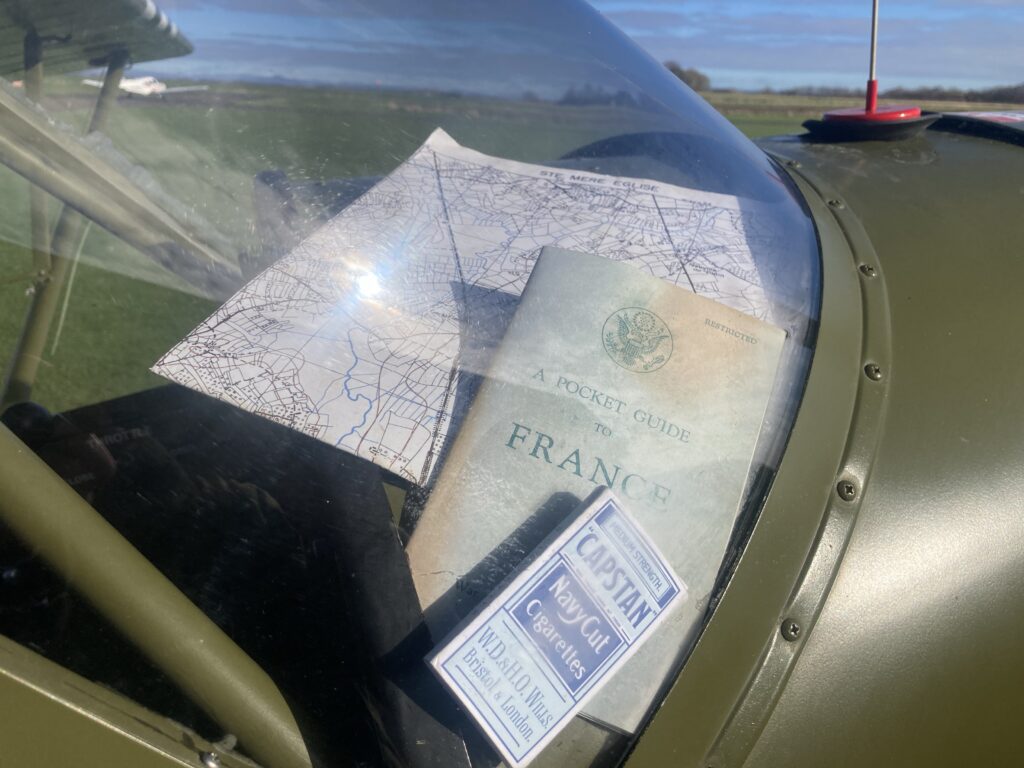
The first week of retirement is going to be busy!
Scotland’s Scenery
Flying a helicopter throughout Scotland means you get to see some pretty impressive vistas. Here’s Tyndrum with the two railway lines, one for Fort William and one for Oban:
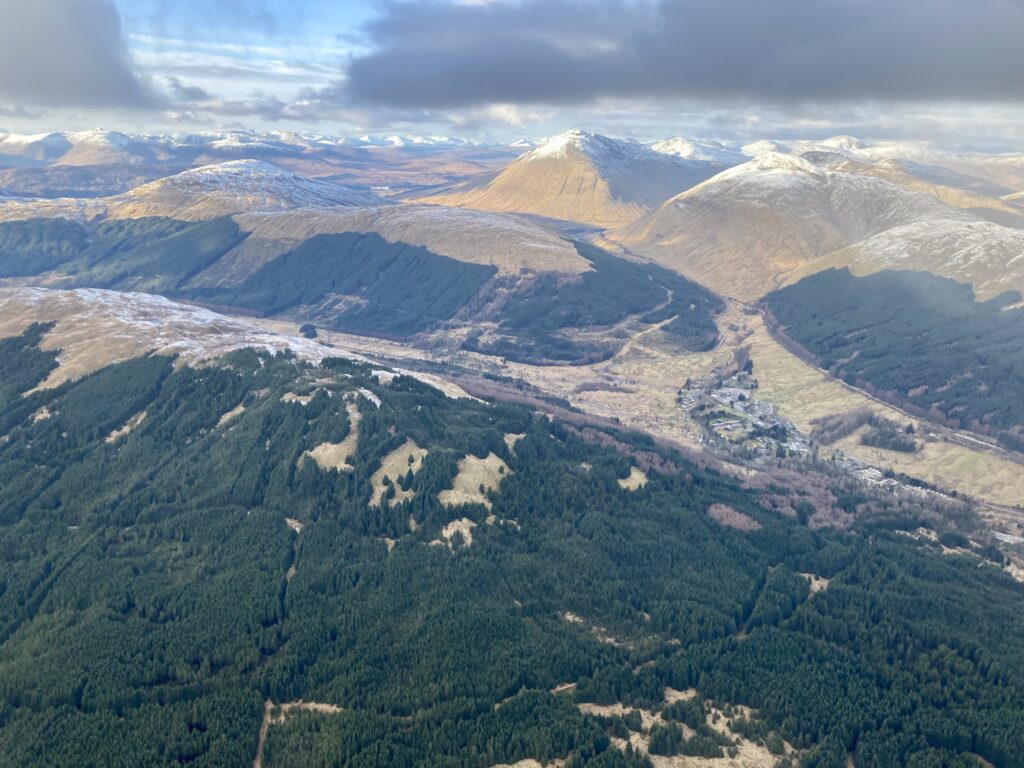
Approaching Oban hospital, looking north-west towards Oban Airport…
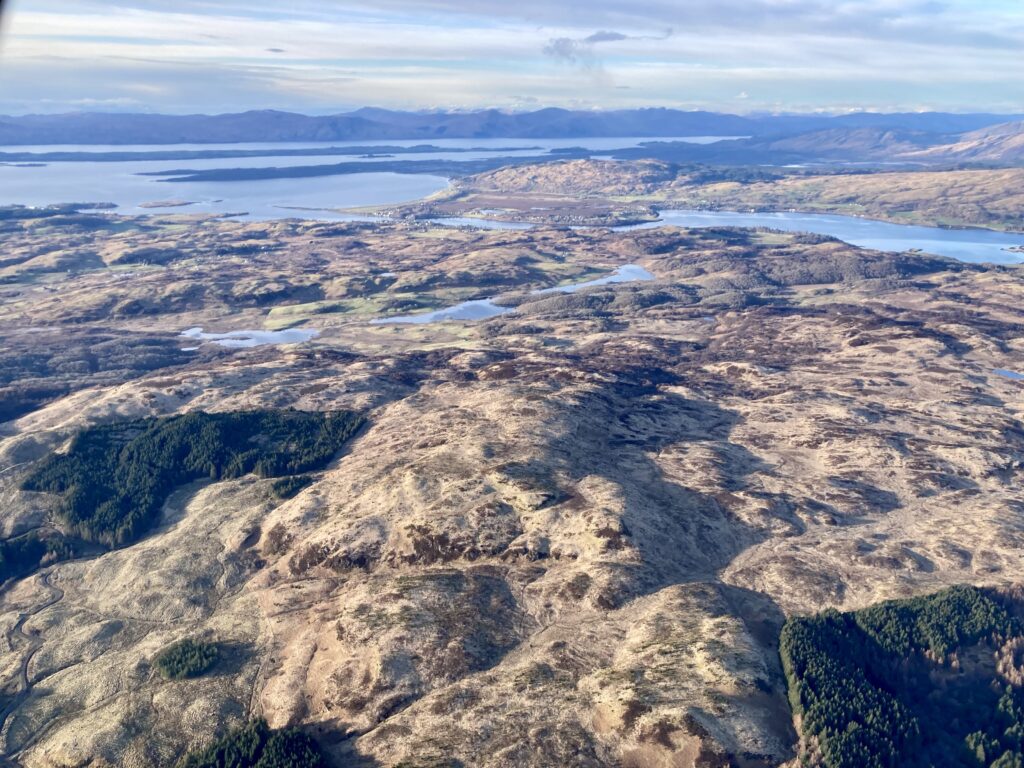
Random un-named mountain with a dusting of snow:
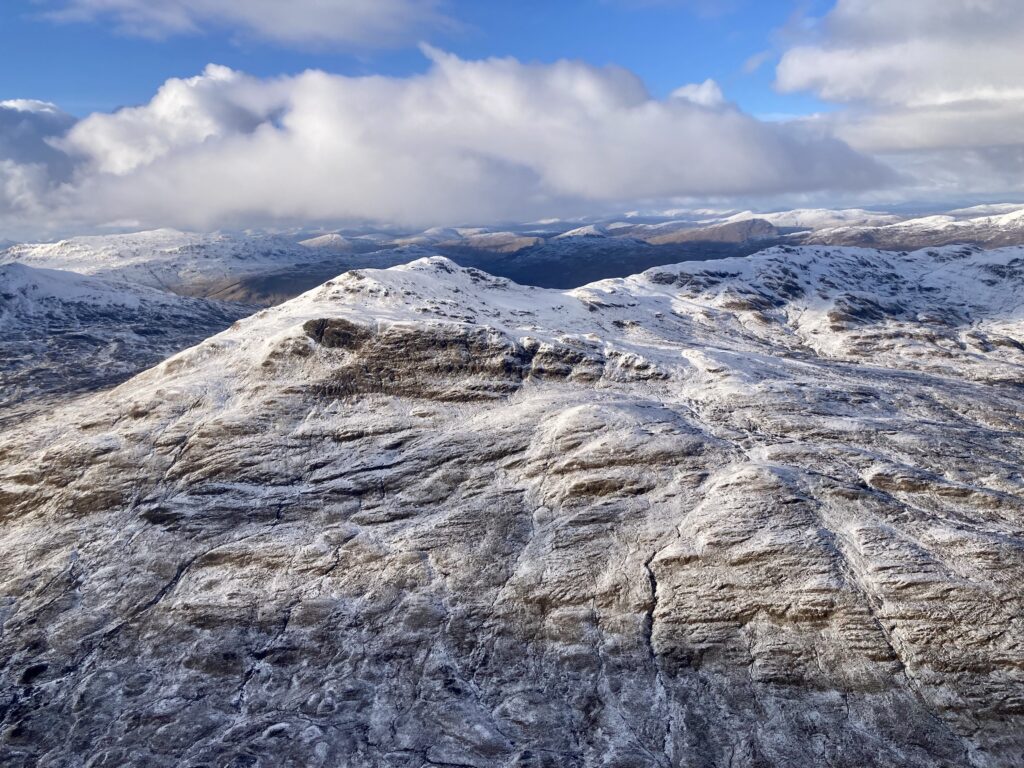
More mountains…
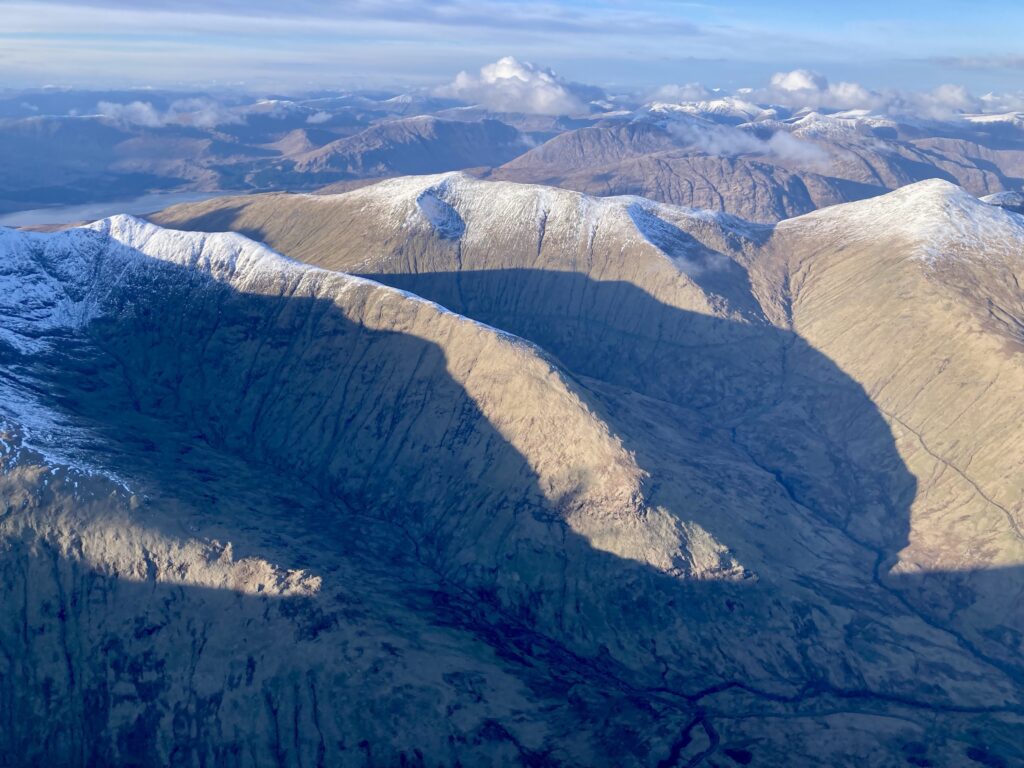
Killin, at the western end of Loch Tay:
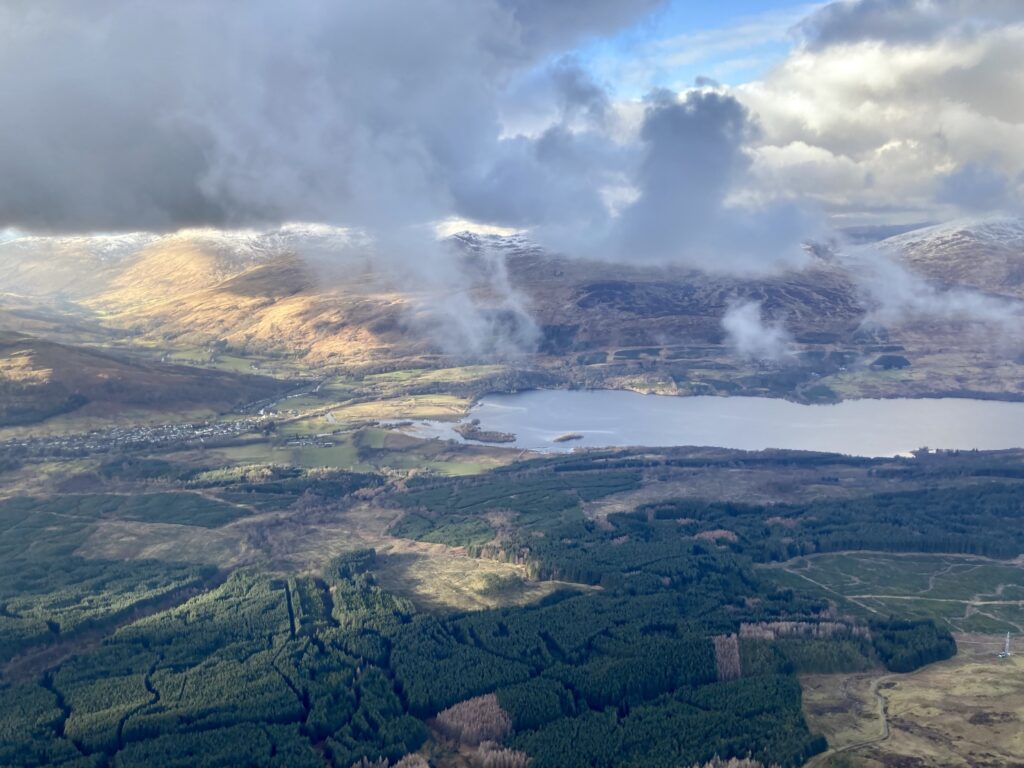
Next pics by paramedic Rich. Here’s Glasgow city centre. The River Clyde, Central Station and the triangular glass roof of the St Enoch Centre, apparently the largest glass building in Europe:
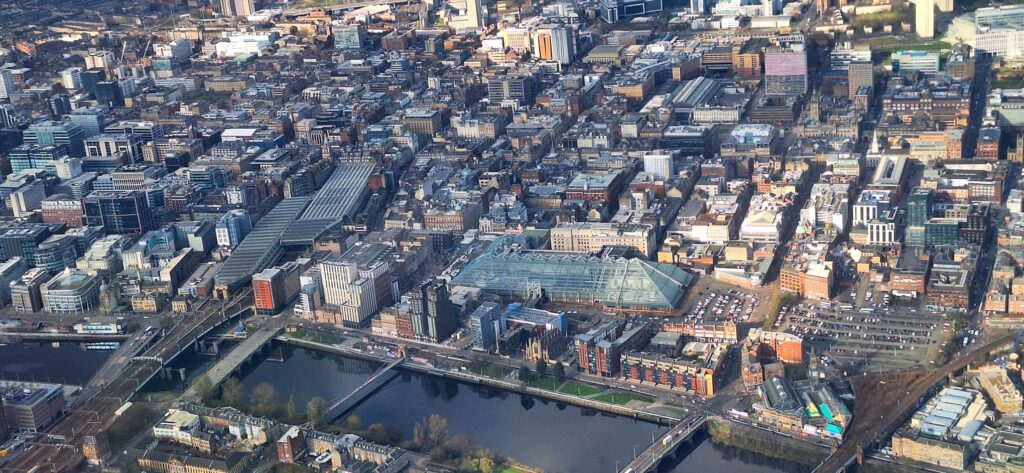
Bass Rock in the Firth of Forth off North Berwick. The rocks of the cliff are not naturally that light coloured – that’s gannet poo. Lots and lots of gannet poo! Hundreds and hundreds of years of the stuff…
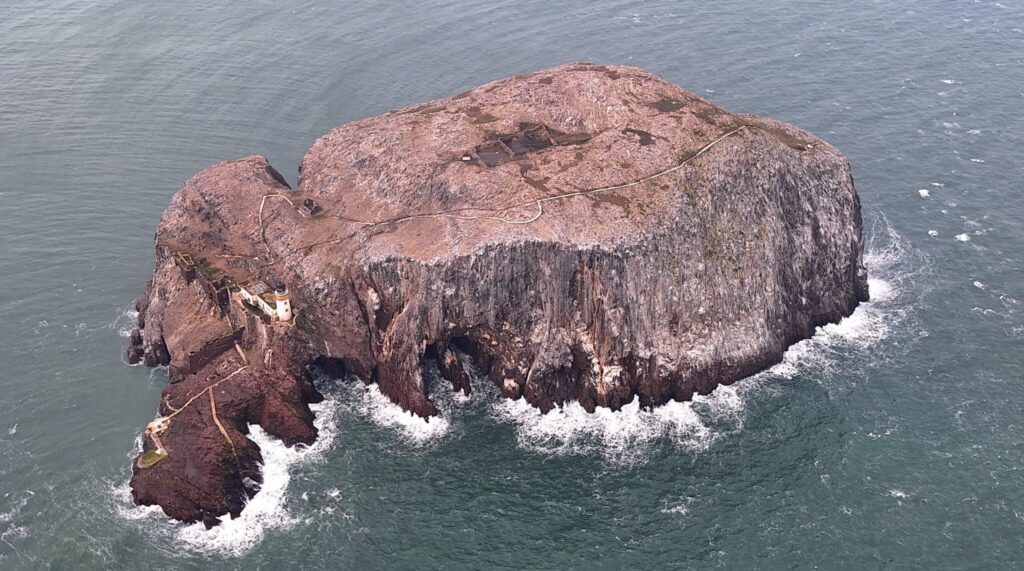
Unknown location on the West Coast:
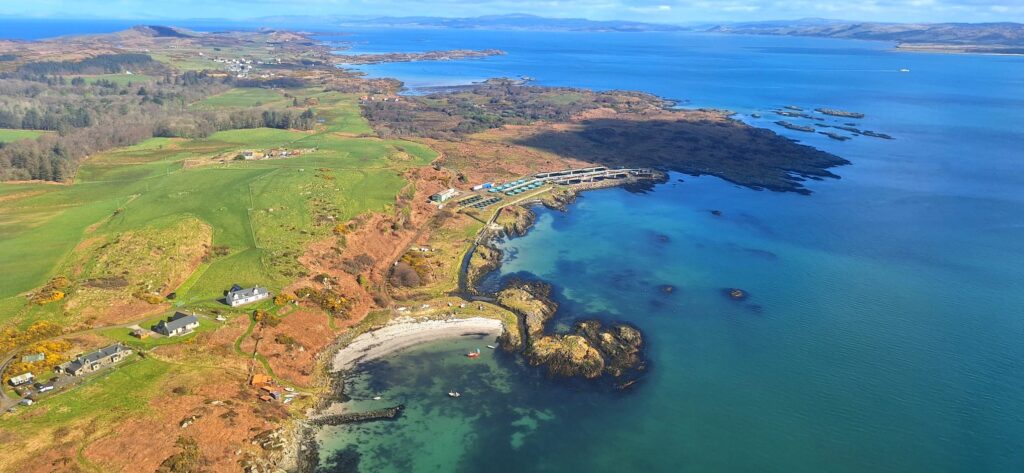
Another unknown West Coast location:
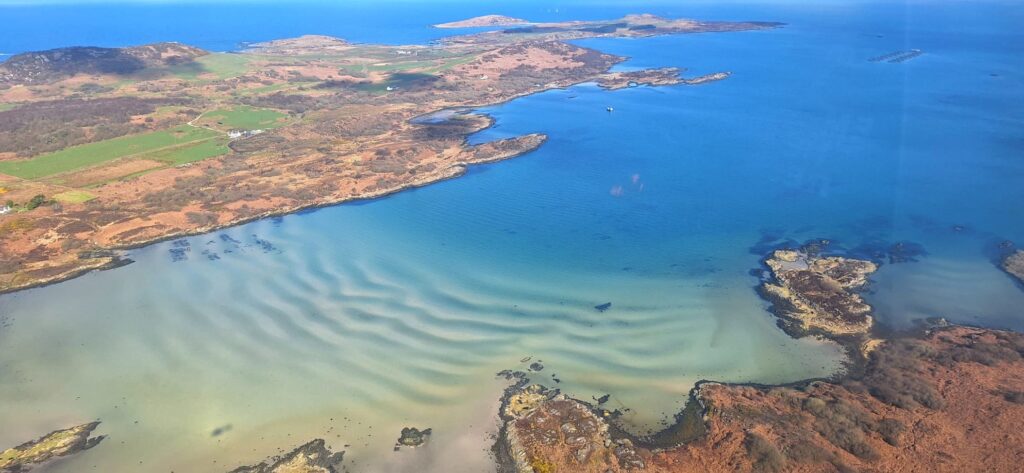
Finally back to one of mine. Sunset on the Queen Elizabeth University Hospital elevated helipad – 210ft above sea level up on the roof. With the change of the clocks and imminent retirement at the end of May, I have probably flown my last ever EC135 helicopter night flight.
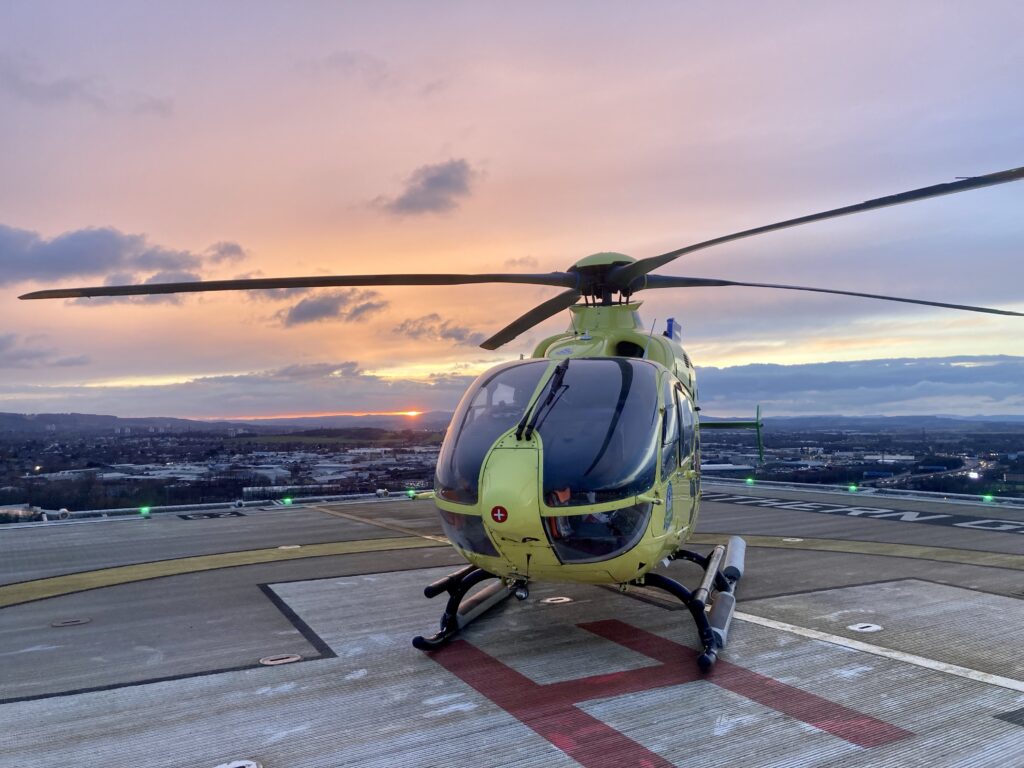
The 135 is a bit of a flying carpet…a magical steed giving the best views. I’m going to miss it. Only 24 shifts to go…
Reflections
Looking back through the photo archives, we found quite a few pictures of the Sting, and were reminded that the smooth finish of the composite construction produced some lovely reflections. Here’s a sample.
In the hangar at Perth:
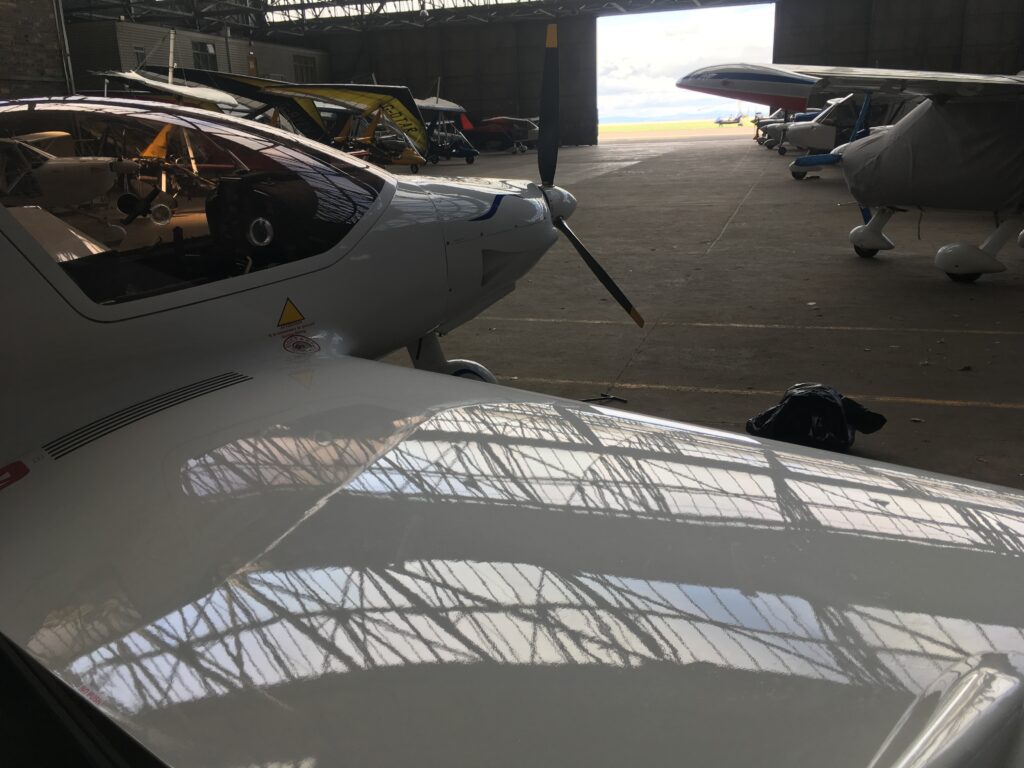
Cloud reflections over Perthshire:
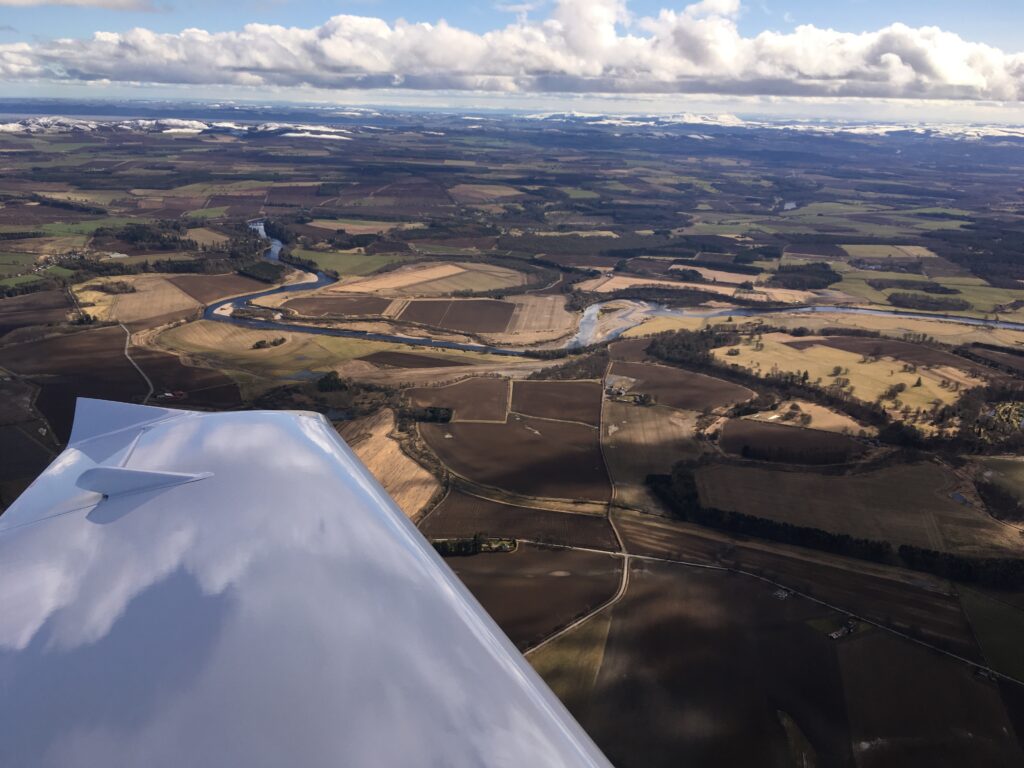
Over Denmark on the Great 2018 Sweden Adventure:
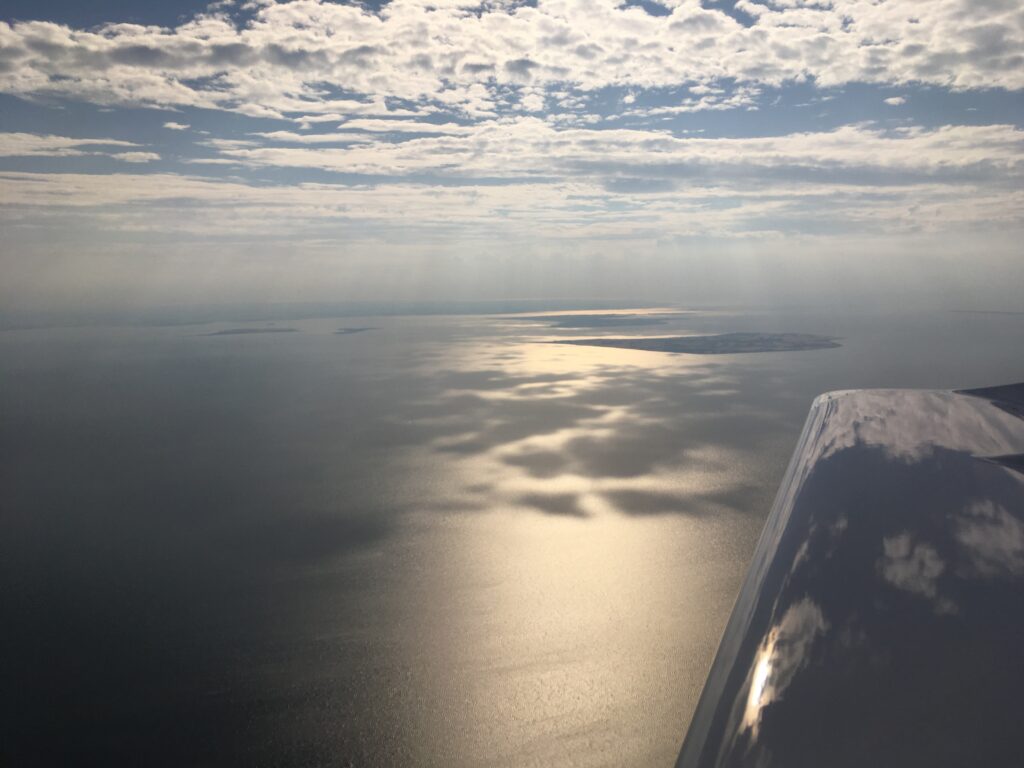
Over Sweden. Lots of trees below, more cloud reflections:
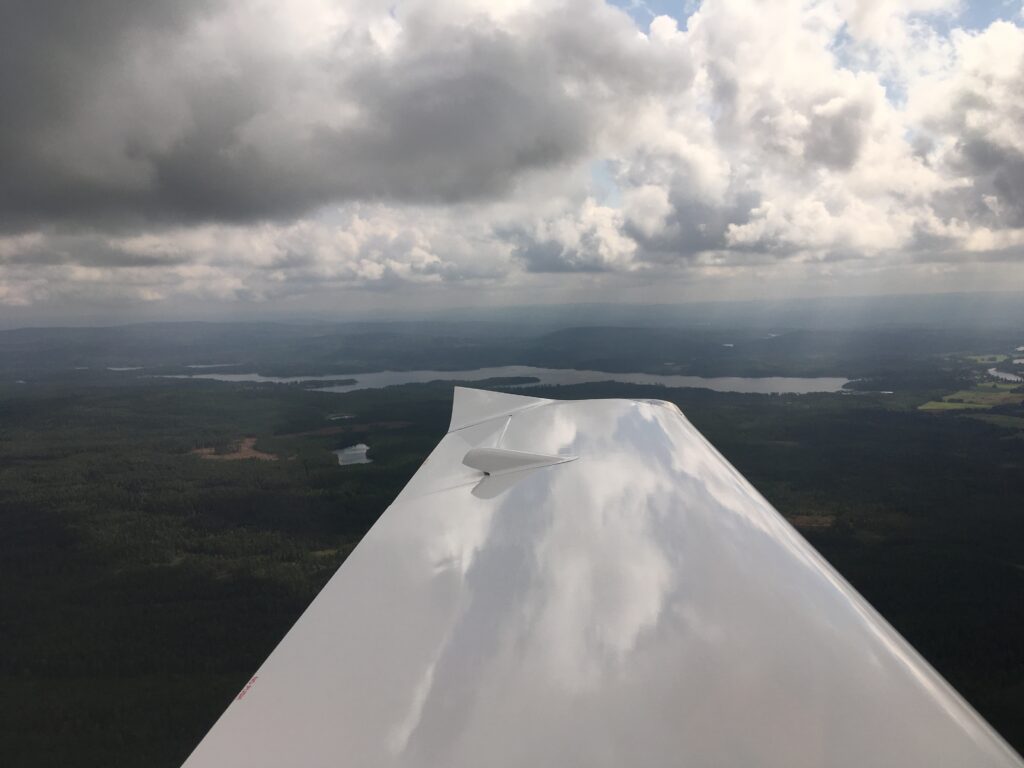
Approaching the Rhine in Germany:
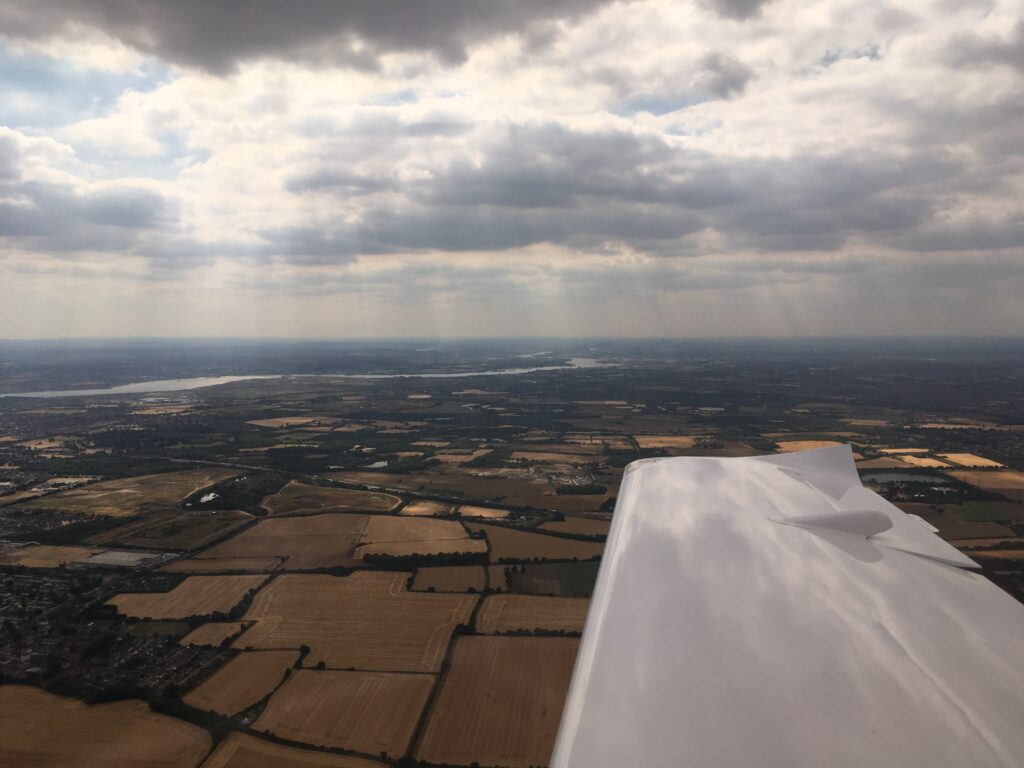
Back safe in the home hangar:
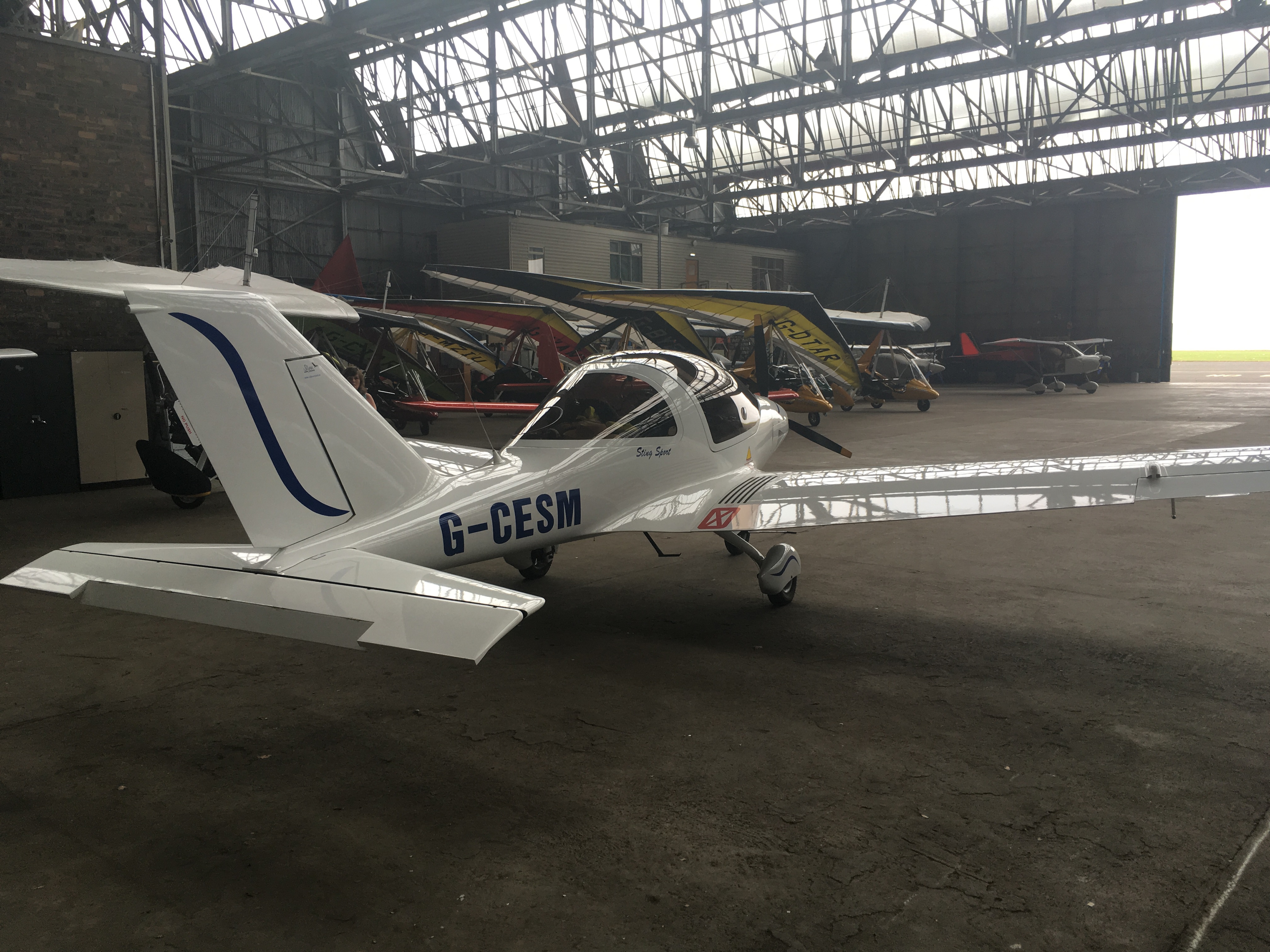
The Sting was a great little aircraft. With a cruise speed of 120 knots it was able to get places quickly. The Rotax 912 engine wasn’t a gas guzzler, and the controls were responsive. Maintenance and annual permit renewals were straightforward due to the composite construction. Support from the UK dealer and the factory in the Czech Republic was amazing. We had great fun in our Sting.
The only niggle was the manual flap lever, which was close to my right arm and required a bit of hand swapping on the controls to release the left hand to reach over and operate the lever. A little ungainly but perfectly safe.
More recent versions have electric flaps, operated by a switch on the panel, which eliminates that problem. They also have a more accessible baggage area and even an autopilot.
We would definitely have another Sting. Lovely aircraft.
